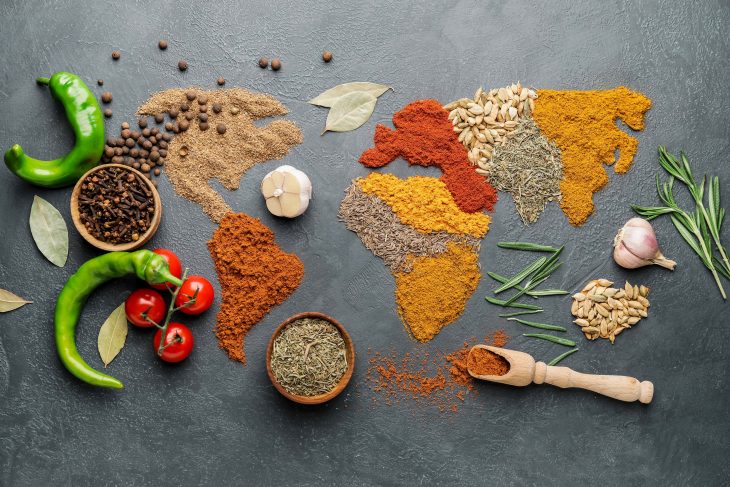
If you’re a foodie, you probably have your own favorite types of cuisine. It could be something closer to home, like American cuisine. Or perhaps something a bit more foreign like Thai cuisine. In reality, in today’s interconnected world, we often take for granted what were formerly exotic cuisines. Believe it or not, there was a time when Americans considered Italian food exotic. Nowadays, many cannot imagine a world without pizza or spaghetti. Meanwhile, to others, what we may consider exotic may be cuisines that they know and love. There are perhaps as many cuisines as there are cultures and no way a list like this can mention them all.
Here are 63 cuisines to satisfy your hunger. Some of them may already be familiar to you, while others may feel more at home with the adventurous types. This is not a comprehensive list. There are many cuisines we didn’t even mention. Still, every true foodie will surely enjoy this quick tour of the world’s cuisines.
American Cuisine

We start off with a type of cuisine that is perhaps most familiar to you. American cuisine is so diverse that it is worth a full list of its own. Whether it’s Southern food, West Coast delicacies, East Coast favorites, and everywhere in between, there’s definitely something for everyone. American cuisine is also familiar around the world thanks to the popularity of fast food chains such as McDonald’s and KFC.
American cuisine has many beloved favorites. One such delicacy is apple pie. Notably, the apple pie is part of the famous saying “as American as apple pie”. Ironically, apple pies may not be so American after all. Apples actually originally came from what is today Kazakhstan. Meanwhile, historians believe that Europeans were already making apple pies long before apple pies became an American staple.
Other American favorites include hamburgers, fried chicken, and hot dogs. These dishes are mostly not American creations. This does actually perfectly show one interesting aspect of American cuisine. People often say that America is a melting pot of people and cultures. Thus, it’s no wonder that even American cuisine is a reflection of its diverse history.
Angolan Cuisine
African cuisine may not be the first cuisine that comes to mind for many. However, African cuisine is as diverse as the African people themselves and is always worth checking out.
The first type of African cuisine on this list, Angolan cuisine has a rich history. It takes inspiration from its African roots and with evidence of Portuguese influence. While Angolan cuisine is not well-known in the West, it has its fans at home and in the rest of Africa.
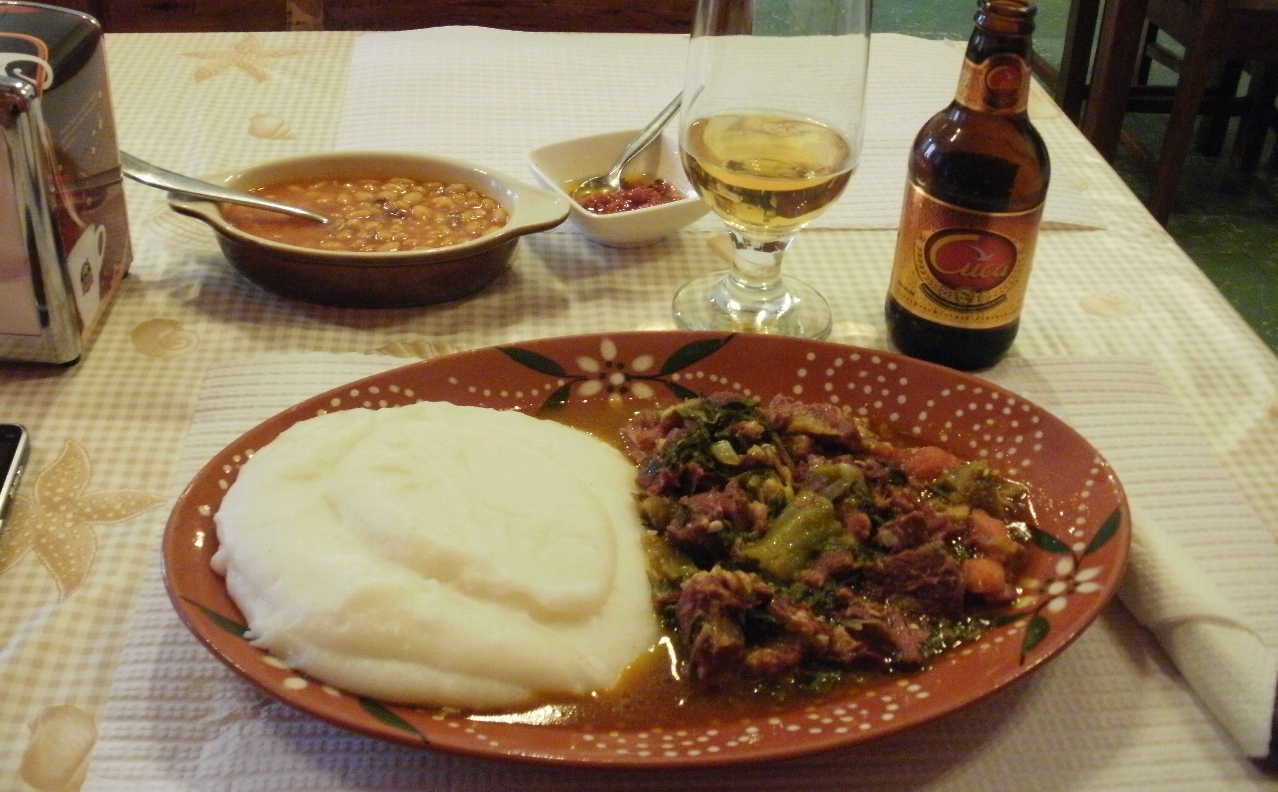
Funge (also spelled funje or mfundi) is perhaps the most famous Angolan dish. Despite its name, it’s not a mushroom or fungi dish at all. Instead, cassava flour is the main ingredient. Angolans mainly consume funge as a side dish. Despite its Angolan association, it’s also popular in other African nations.
Believe it or not: fried caterpillar is one of Angola’s more unusual delicacies. Caterpillars fried with garlic and other ingredients, known as catatos, are found in some parts of the country. Locals often consume funge and catatos together.
Finally, there’s Angola’s national dish, Poulet à la moambé. It is a chicken dish cooked with spices and butter. In addition to Angola, it is also popular in other parts of Central Africa.
Arab Cuisine
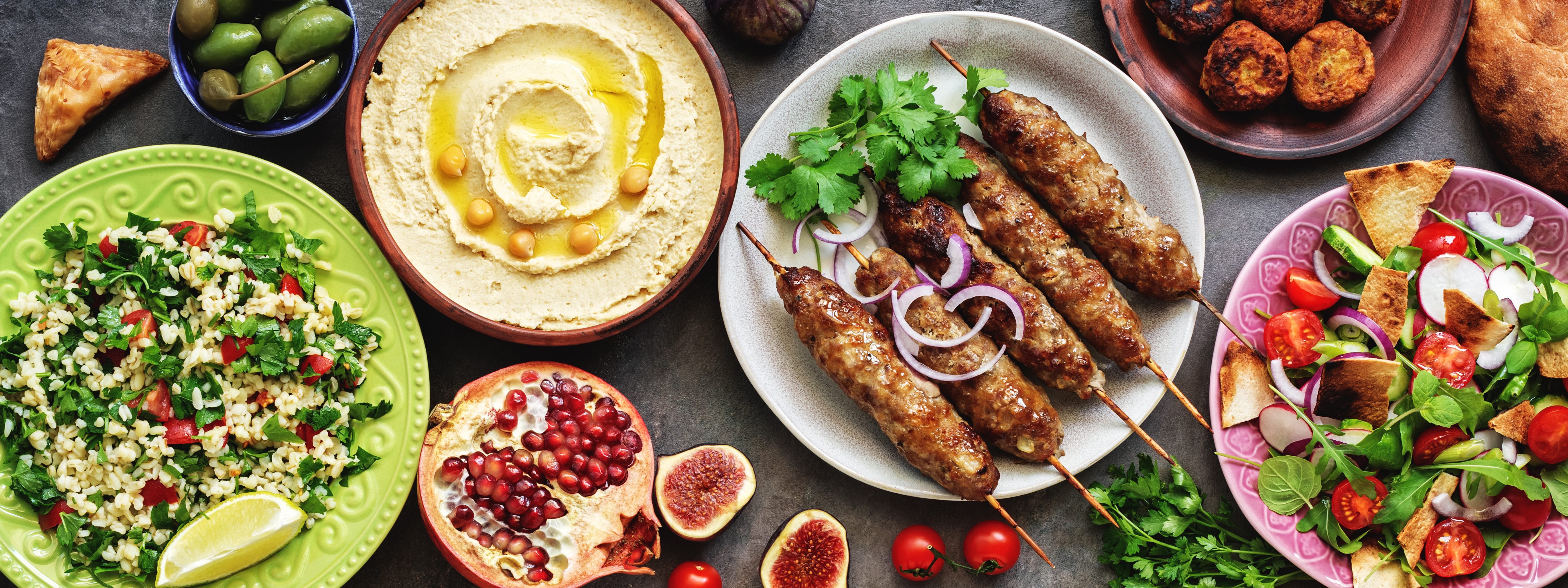
The types of Arab cuisine are quite varied and reflect both religious and local influences. As the birthplace of Islam, it’s no surprise that the Arabian Peninsula’s cuisine takes strong inspiration from its values. Islamic dietary laws prohibit pork so it is atypical in Arab cuisine. Instead, you’ll find a lot of other meats, notably lamb and even goat. Other staples of the region include dishes made with wheat and other grains. All of these foods are permissible.
Pita bread is one of the most common staples of Arab cuisine. You’ll often find it in Arab restaurants and buffets around the world. Manakeesh, a pizza-like bread, is another popular delicacy that is eaten as street food. Finally, there’s falafel, the Arab world’s famous fried chickpea balls. Notably, falafel’s origins are the source of much debate within the region, which isn’t surprising considering its popularity.
Argentine Cuisine
Like most types of Latin American cuisine, Argentine cuisine is a fusion of native and colonial influences. You may find a lot of food that has Spanish-sounding names but aren’t Spanish in origin at all.
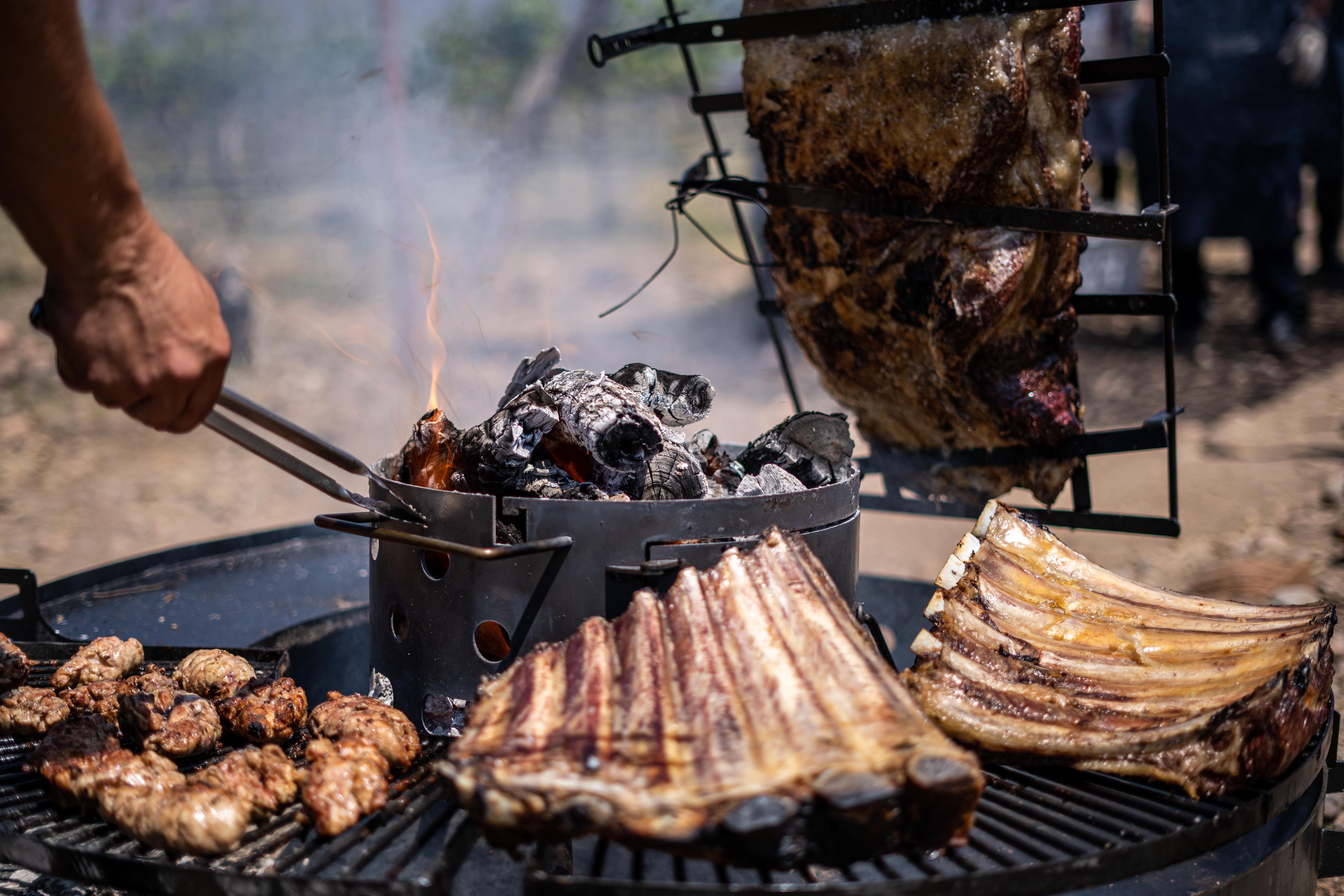
Asado is perhaps the highlight of Argentine cuisine. It’s not actually a single dish but rather the term for grilling. Argentines love grilling different kinds of meat, including the usual pork and beef. In some parts of Argentina, people even roast whole pigs and sheep!
Chimichurri is one of Argentina‘s other famous dishes (or perhaps more accurately condiments). It is a greenish sauce that’s primarily made from chopped parsley and garnished with ginger, wine, and olive oil. While it is a South American creation, it also has an international following.
Australian Cuisine
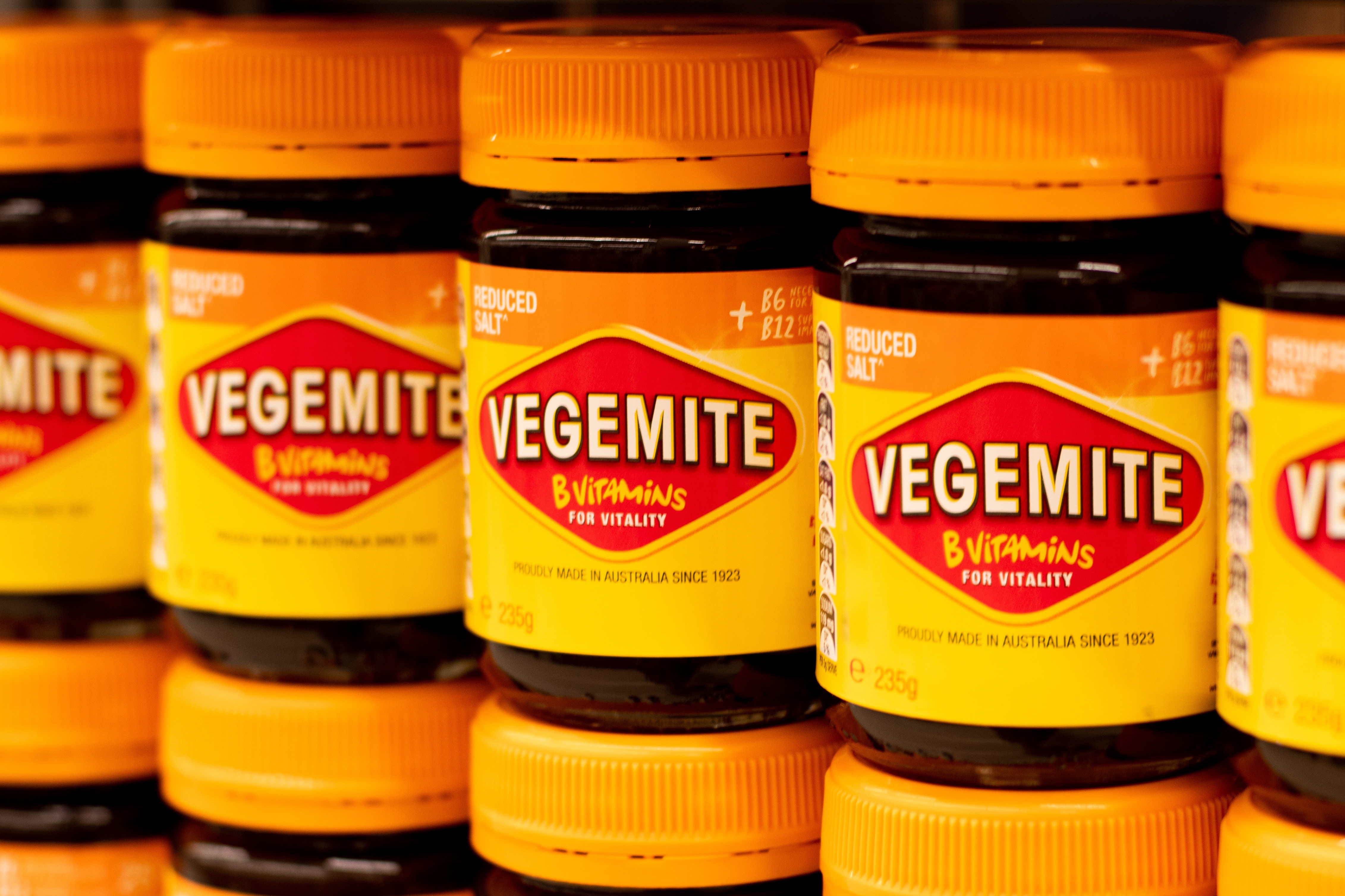
When one thinks of Australian cuisine, people often tend to think of two things: barbies and Vegemite. Indeed, Australians love their barbecues and Vegemite. However, Australian cuisine is much more than that.
Of course, barbecuing meat is one of the most iconic activities in Australian culture. It’s one way for family and friends to get together. Meanwhile, Vegemite, Australia’s unique spread, is actually a yeast product. Resourceful people created it from byproducts of beer production. It has an admittedly acquired taste but supposedly tastes better when mixed with butter and put on bread.
Other famous Australian foods include meat pies, fairy bread (bread with margarine and small candies), and the ever-popular Tim Tam chocolate biscuits. Interestingly enough, despite kangaroos being an iconic Australian symbol, Australians rarely ever consume kangaroo meat.
Austrian Cuisine
Austria’s cuisine is quite similar to the types of cuisine of its neighbors. You’ve got the usual cakes and desserts, as well as sausages. Indeed, there’s a kind of sausage named after Austria’s capital, the Vienna sausage.
One of Austria’s most cherished dishes is the Apfelstrudel. It’s a flat pie made with apples, sugar, cinnamon, and other flavorings. Cooks serve it in restaurants or food stalls. While Germans also love the dish, it is the Austrians who have made it a national icon.
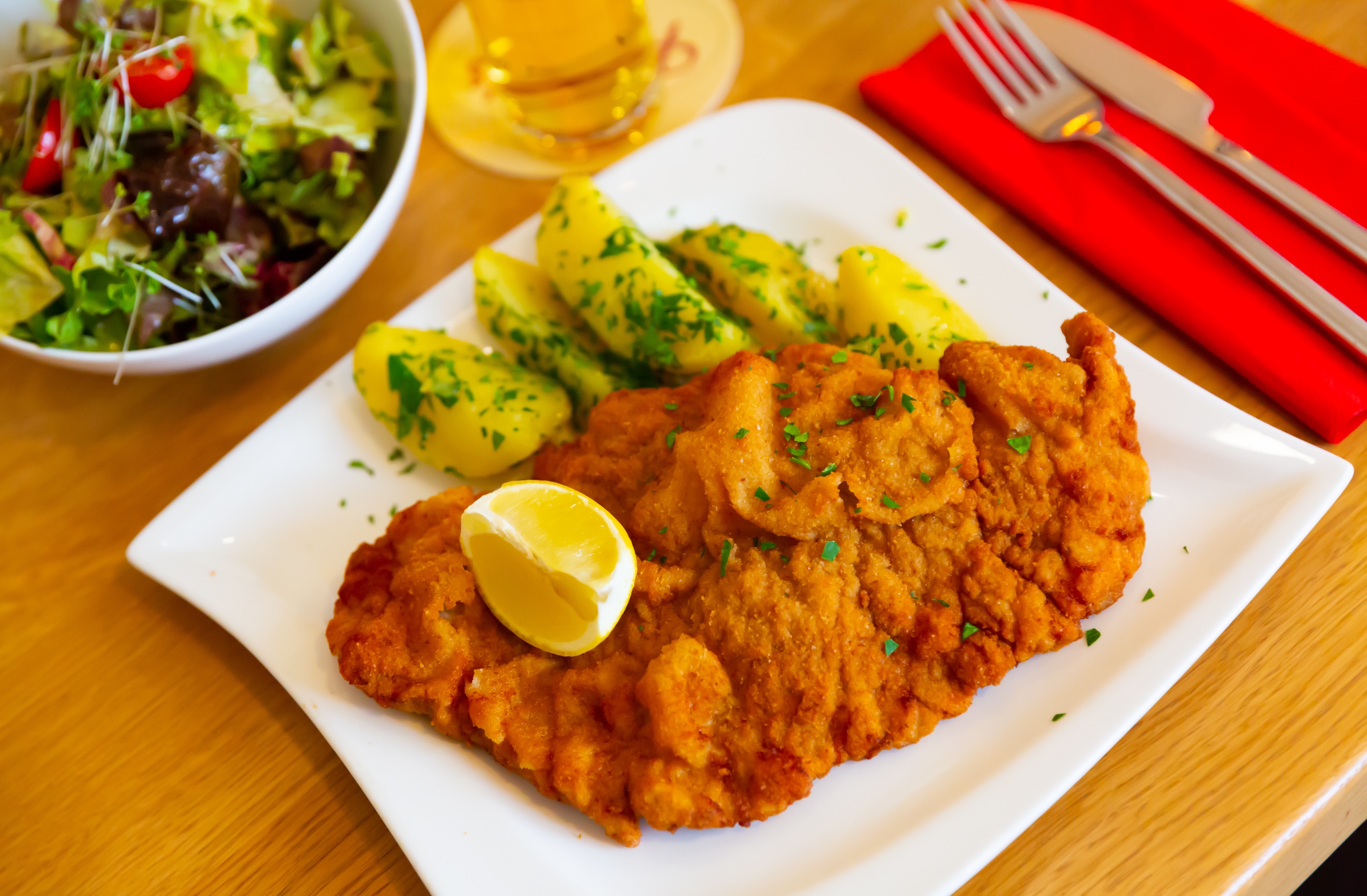
Another beloved Austrian dish is the Wiener Schnitzel. It’s a deep-fried cutlet made from veal (the meat of young cattle) that is breaded and often served with potatoes.
Belgian Cuisine
Believe it or not, Belgium is not all about Belgian waffles and Belgian chocolates. In fact, Belgian cuisine has a rich history that’s as diverse as the people of Belgium itself. Belgium’s French and Dutch-speaking populations have both inspired French cuisine, and so has the country’s geography and culture
One of Belgium’s most famous dishes is what we usually call French fries. Despite their name, historians believe that Belgium, not France, invented French fries! Unsurprisingly, fries are quite popular in Belgium, with many restaurants having their take on them.
Given Belgium’s fishing heritage, it’s unsurprising that seafood makes up much of Belgian cuisine. Sea fare such as mussels, fish, and shrimp are a common sight on household dinner tables.

Of course, no discussion about Belgian cuisine would be complete without Belgian waffles. Also known as Brussels waffles, these have large and deep squares. They come in both sweet and non-sweet varieties. Cooks put sugar, cream, strawberries, chocolates, and other garnishing on top for extra flavor.
Bosnian Cuisine
It’s no surprise that a multi-ethnic country like Bosnia and Herzegovina also has many types of cuisine. Islamic and Christian values, along with the Mediterranean and Ottoman characteristics, are the main inspirations for Bosnian cuisine.
Bosniaks, who are predominantly Muslim, do not consume pork and thus they primarily consume beef and lamb dishes. On the other hand, the ethnic Serbs and Croats, who are predominantly Christian, can consume pork.
Cevapi is one of the most commonly consumed dishes in the country. It’s a type of kebab that’s made with pita bread made with either lamb or beef. Locals and tourists chow down on cevapi in restaurants, or more commonly, at food stalls.
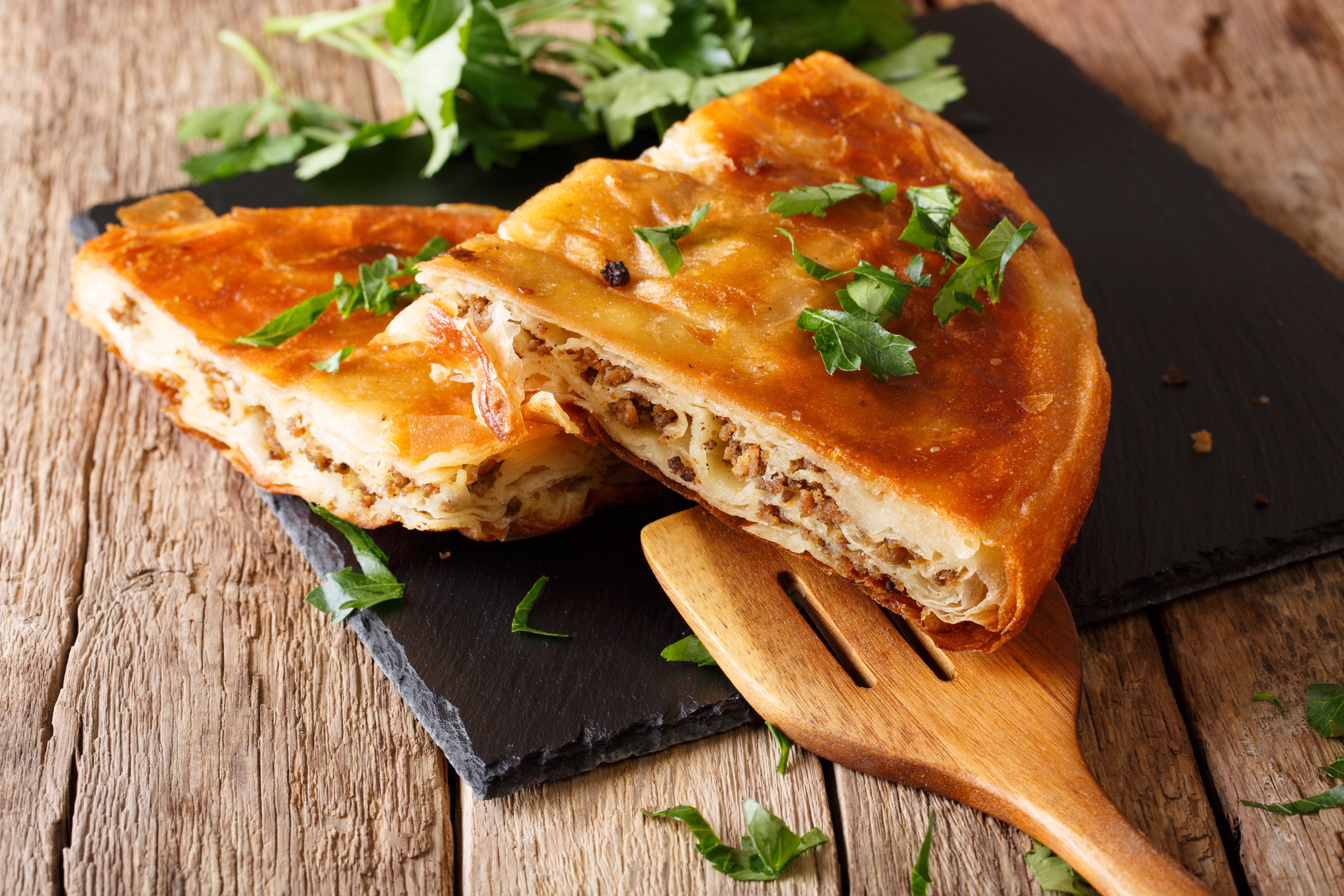
Another popular Bosnian dish is the burek. It’s a pie that’s filled with meat, vegetables, or other ingredients. An Ottoman dish is its progenitor. Locals and tourists primarily consume it at food stalls.
Brazilian Cuisine
Brazilian cuisine is a melting pot of the country’s multiethnic and multicultural history. You’ve got your native influences, Portuguese characteristics, borrowings from neighboring countries, and even nods to the country’s immigrant population. Yes, Brazilian cuisine takes inspiration from many different types of cuisine.
Much like its neighbor and sometimes rival, barbecues are an important aspect of Brazilian cuisine. Churrasco is the local term for barbecues, which largely come in the form of grilled meat. Cooks then season the meat with salt then cook it over either wood or charcoal.

One popular Brazilian dish is feijoada. A common staple in many Portuguese-speaking countries, the Brazilian version uses black beans mixed with meat and/or sausages.
Cambodian Cuisine
Cambodian cuisine may not be as famous or popular as that of its neighbors, but it doesn’t mean it’s not worth giving a shot. Local characteristics and foreign influences come together to create one of the most unique types of cuisine in Asia.
Fried tarantula is one of the more unusual types of food in Cambodian cuisine. They originated during the Khmer Rouge’s rule. As food supplies were low at the time, many resorted to eating spiders. Some sources have compared spider meat to taste like a cross between chicken and fish. Yum!
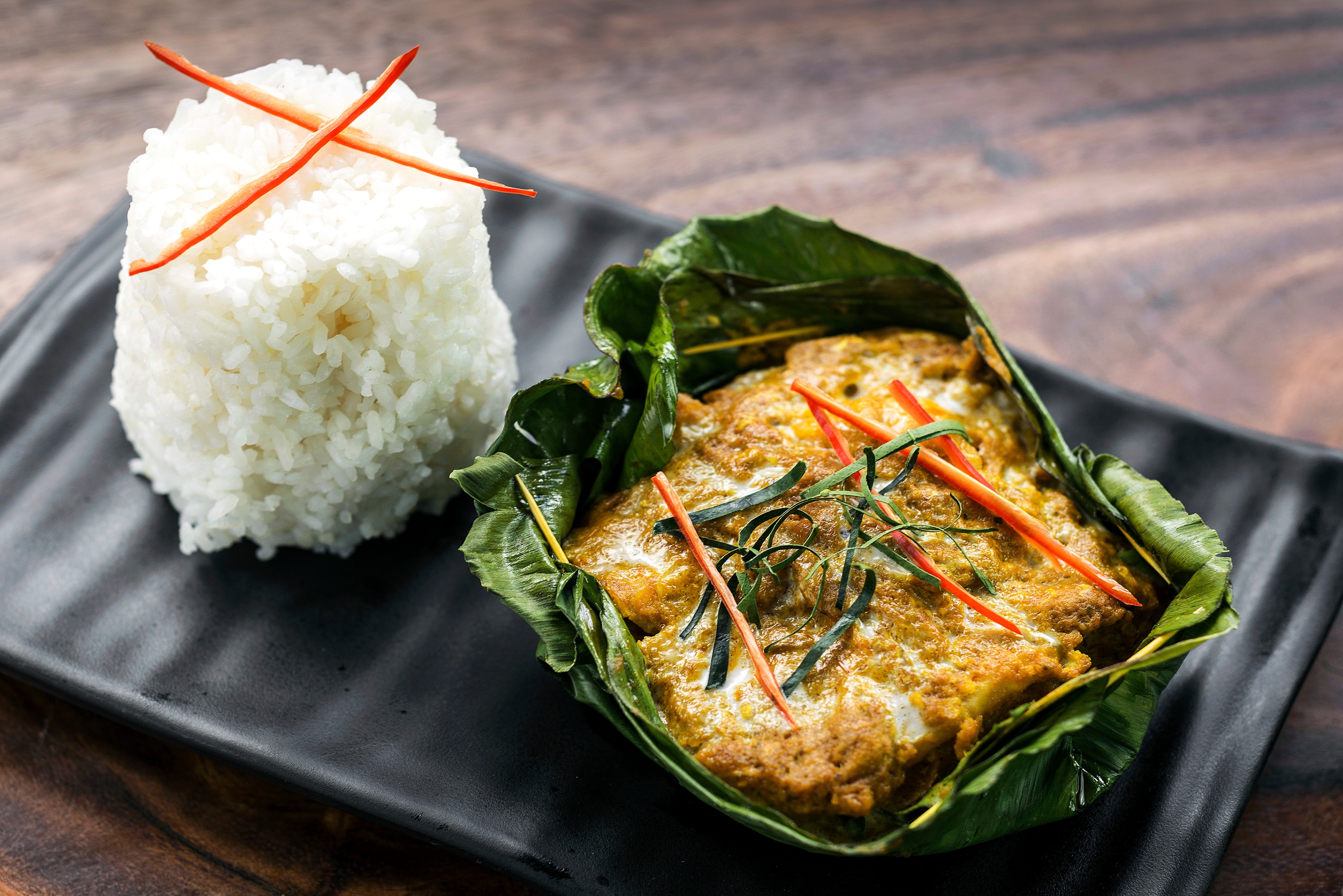
A more conventional local delicacy is fish amok. This is a method of cooking fish with coconut milk and banana leaves. Cambodians primarily eat it with rice.
Canadian Cuisine
No, Canada isn’t just maple syrup and Timmies. Okay, maybe most Canadians love putting maple syrup in their food. And maybe they do love buying donuts and hot drinks at Tim Horton’s. But there are more types of Canadian cuisine than just sweet things.
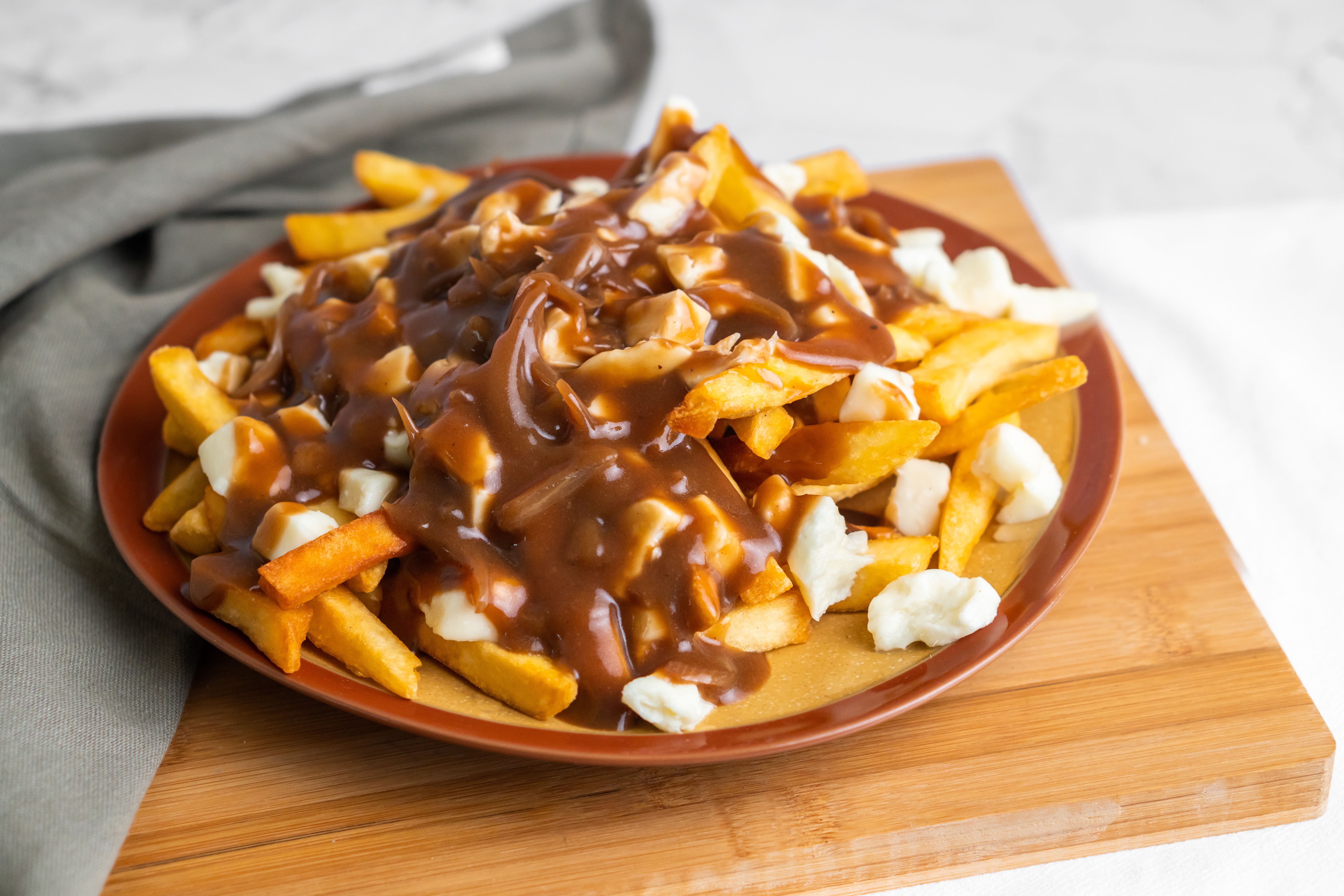
One of the most beloved food items to come out of Canada, poutine is a specialty consisting of fries, gravy, and cheese curds. Sources argue about the poutine’s origins, but they believe that Quebec is its birthplace. Many restaurants and shops claim to be the inventor of poutine. In any case, many poutine lovers would say that good cheese curds are essential! While fries, cheese, and gravy are the essential ingredients, there are many twists to this humble dish. They can come with bacon, sausages, and other ingredients too.
Poutine isn’t the only native specialty enjoyed throughout the Great White North. The country’s First Nations people gave Canada the much-loved bannock bread. Meanwhile, Canadians also love butter tarts. These crunchy treats are made using butter, sugar, and eggs.
Chilean Cuisine
Much like other types of Latin American cuisine, Chile’s cuisine is a fusion of indigenous flavors and colonial influences. Local geography and climate have also made their mark on Chilean cuisine.

Chilean includes local twists on international fare. For example, Chileans use avocados to garnish their hotdogs (or completos)! Another popular treat in Chile is the empanada. While empanadas are common in countries with Spanish influence, Chile’s take is noticeably large and often square-shaped. Cooks either fry them or bake them in wood ovens. Chilean empanadas usually have meat fillings, much like most of the Spanish-speaking world.
Finally, there’s the churrasco. It’s a kind of meat sandwich that uses Chilean grilled steak as its filling. It also has many varieties including a lo pobre (egg sandwiches) and Italiano (avocado and tomato fillings).
Chinese Cuisine
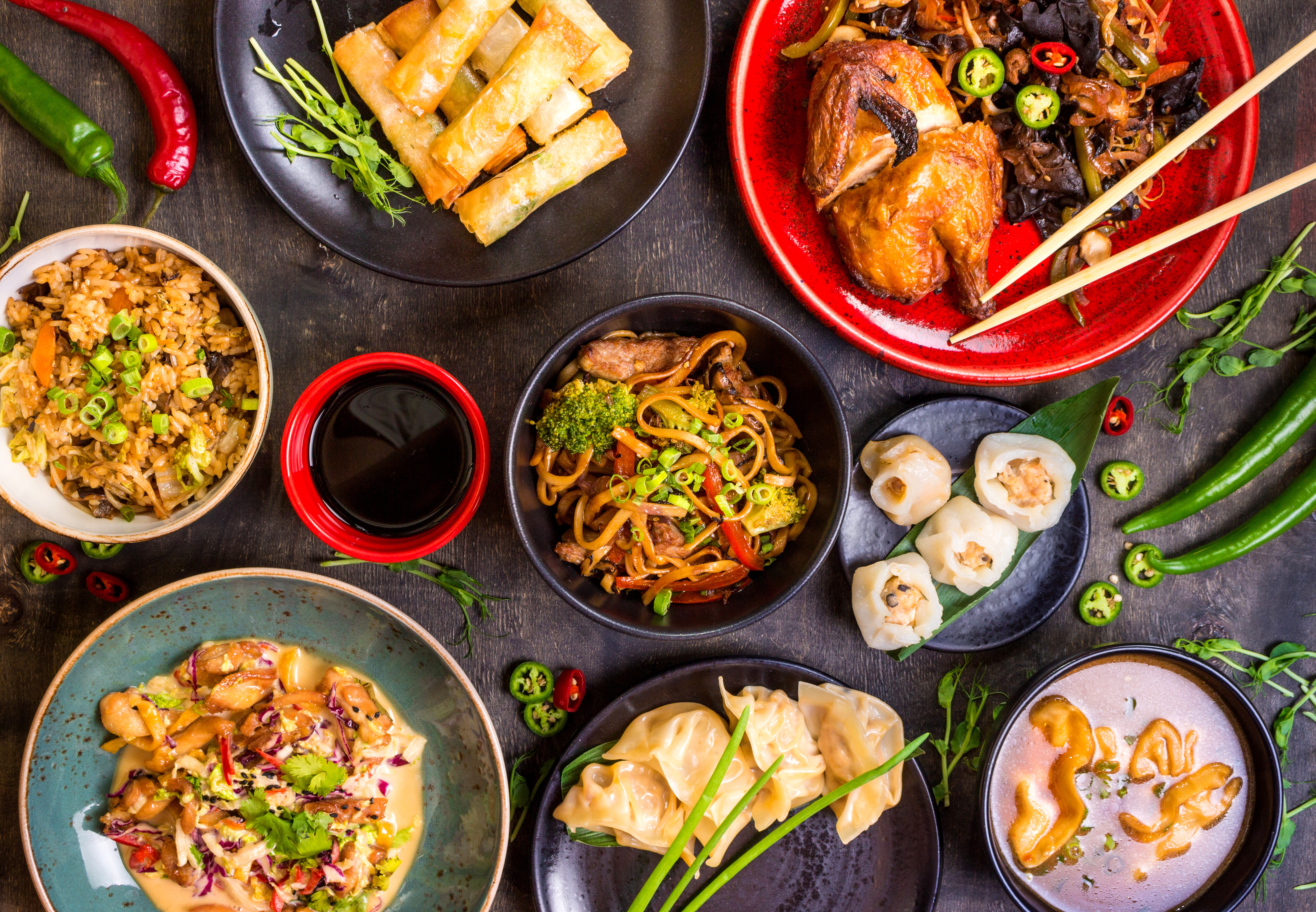
Chinese cuisine is probably one of the more familiar types of Asian cuisine on this list. Like American cuisine, Chinese cuisine probably deserves a list of its own. Not surprising considering China is a country of over 1 billion people!
While there are too many Chinese delicacies to mention in this list, we will list some of the most famous examples here. Firstly, no Chinese meal is complete without rice. Rice is not just China’s main staple food. It is also the basis for many types of food in China. These include rice cakes, noodles, and so on.
Speaking of noodles, they are also a staple of Chinese cuisine. Noodles have a special place in Chinese culture. People young and old often eat them during New Year and birthdays as a symbol of long life.
Finally, there’s the Peking duck. The Peking duck is not an everyday food in China. In fact, it is considered a delicacy. Made from roast duck, cooks slice the meat, while customers put the slices inside small pieces of flat bread.
Colombian Cuisine
Colombian cuisine is one of the most diverse types of Latin American cuisine out there. Like most of its neighbors, native and colonial flavors come together to create a unique type of cuisine. For example, one of the most common examples of Colombian food is arepas, a cornmeal-based bread. Colombians either eat it alone or made sandwiches out of it.
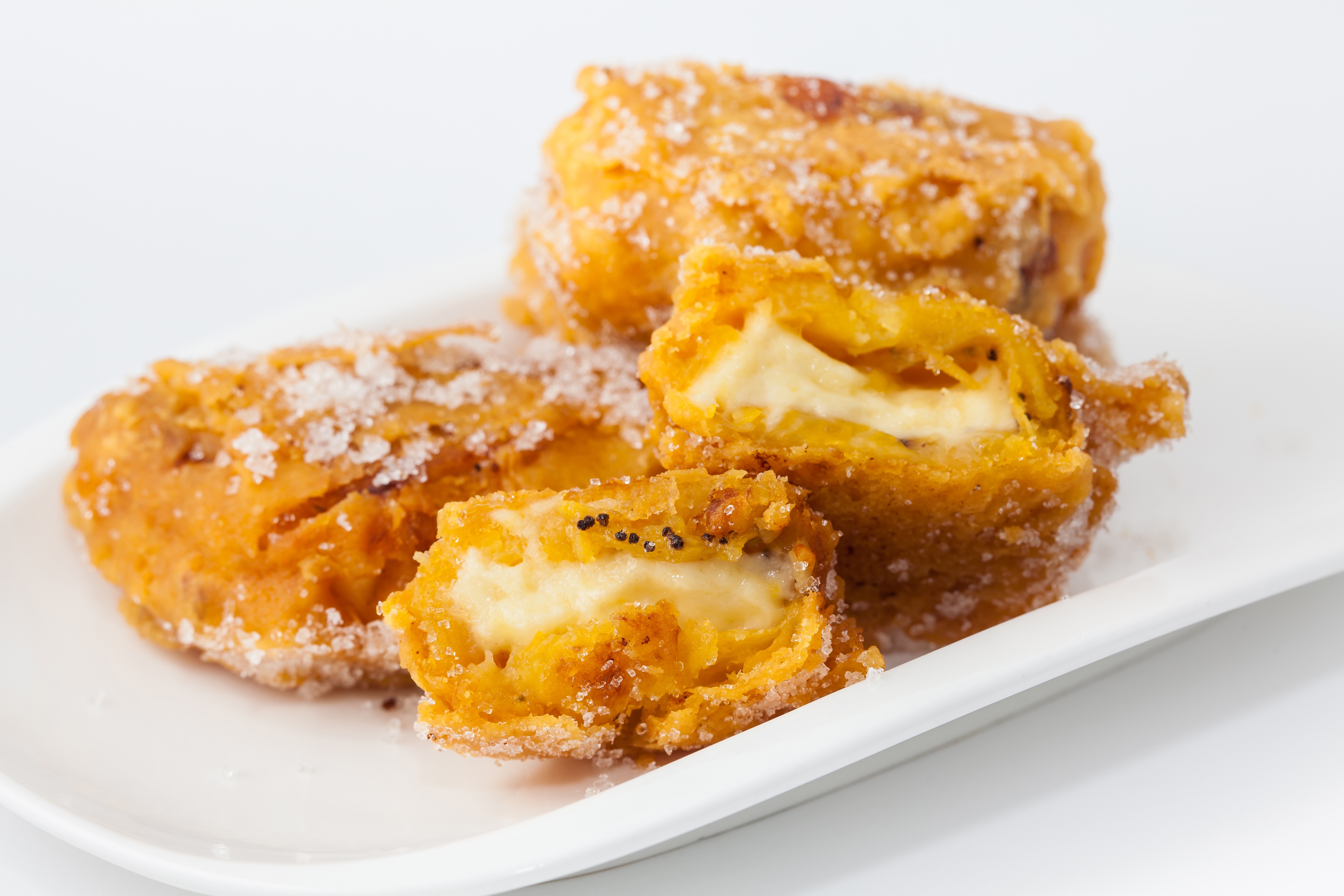
One local delicacy associated with the city of Cali is Aborrajado. Cooks fill bananas with cheese and fry the mixture. It is quite popular among tourists. Ajico, a chicken, potato, and corn soup, is another popular delicacy, particularly in the capital Bogota. Finally, there are obleas, which are essentially oversized communication wafers. It is a favorite among many Colombians and other neighboring people. They often spread caramel on top or make sandwiches with fruits and cream.
Congolese Cuisine
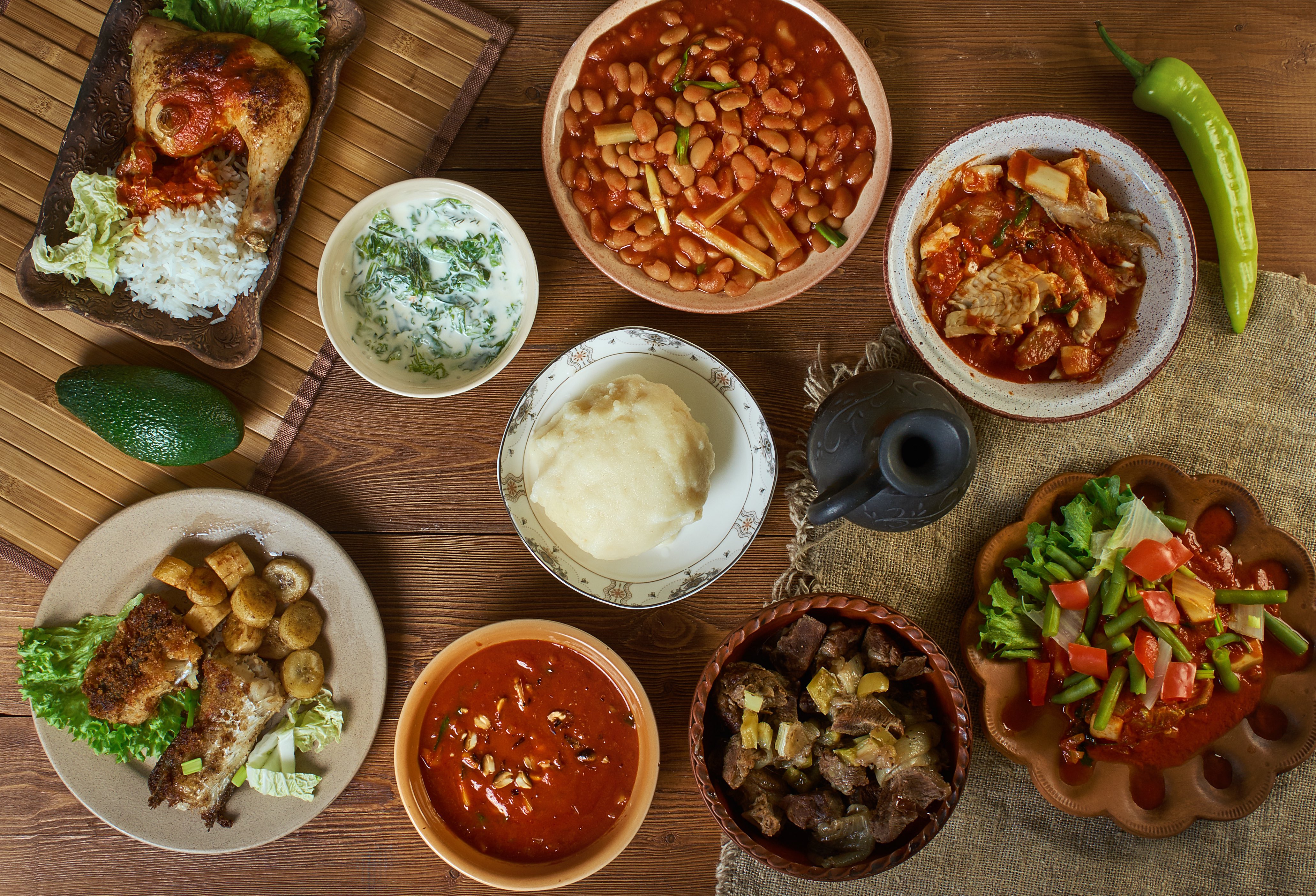
Congolese cuisine, like many types of African cuisine, is a result of indigenous characteristics and international flavors fusing.
Poulet à la moambé, the national dish of Angola, is also popular in the Congo. Fufu, a porridge-like dish that’s made from cassava or yams, is another common staple. Finally, there’s saka saka, a dish made with cassava leaves and garnished with spices and other vegetables. And yes, in case you haven’t noticed, cassava is a staple of Congolese cuisine.
Croatian Cuisine
Croatia’s proximity to the sea, as well as cultural and historical factors, all come together to beget the many types of Croatian cuisine. Indeed, seafood comprises much of Croatian cuisine.
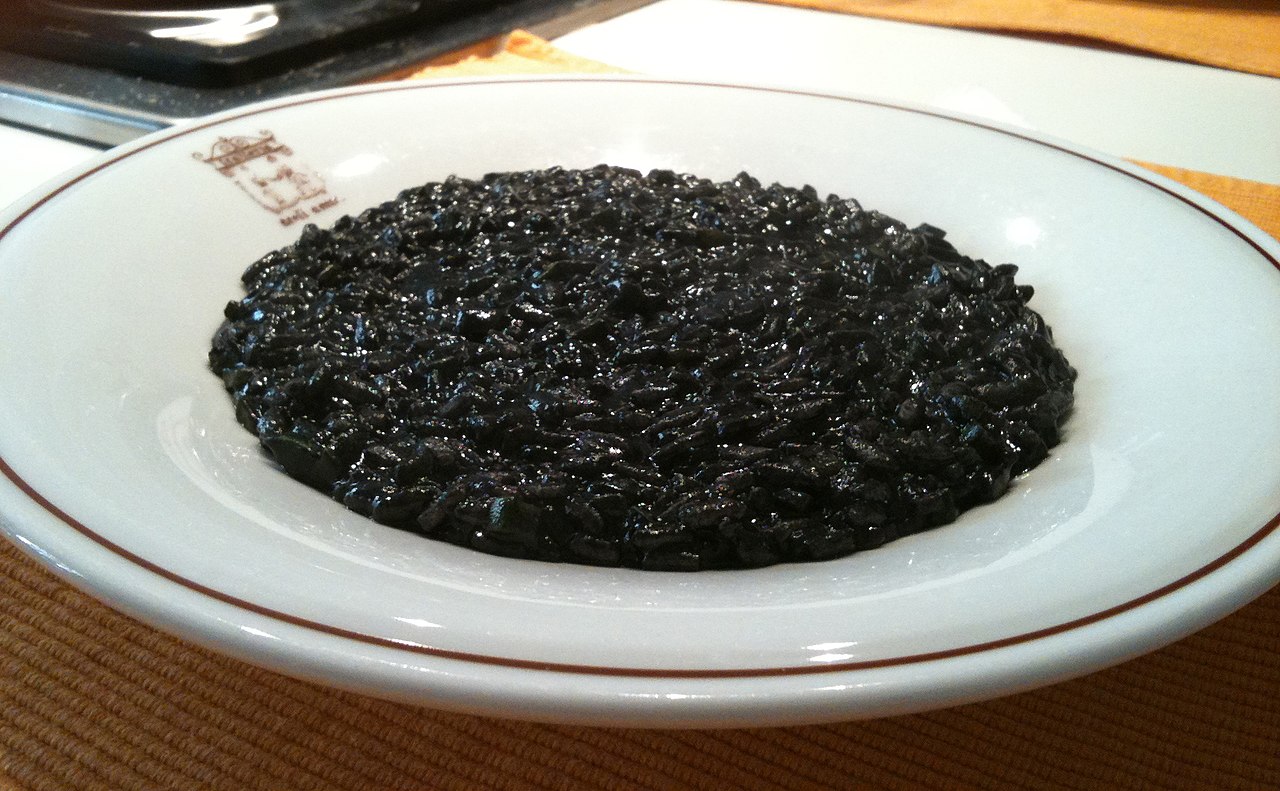
Crni rižot or black risotto is one of Croatia’s most well-known delicacies. It’s a dish that’s usually made of squid and cooked with squid ink and spices. Another local specialty is peka, which is a form of slow cooking that uses bell-shaped lids.
Czech Cuisine
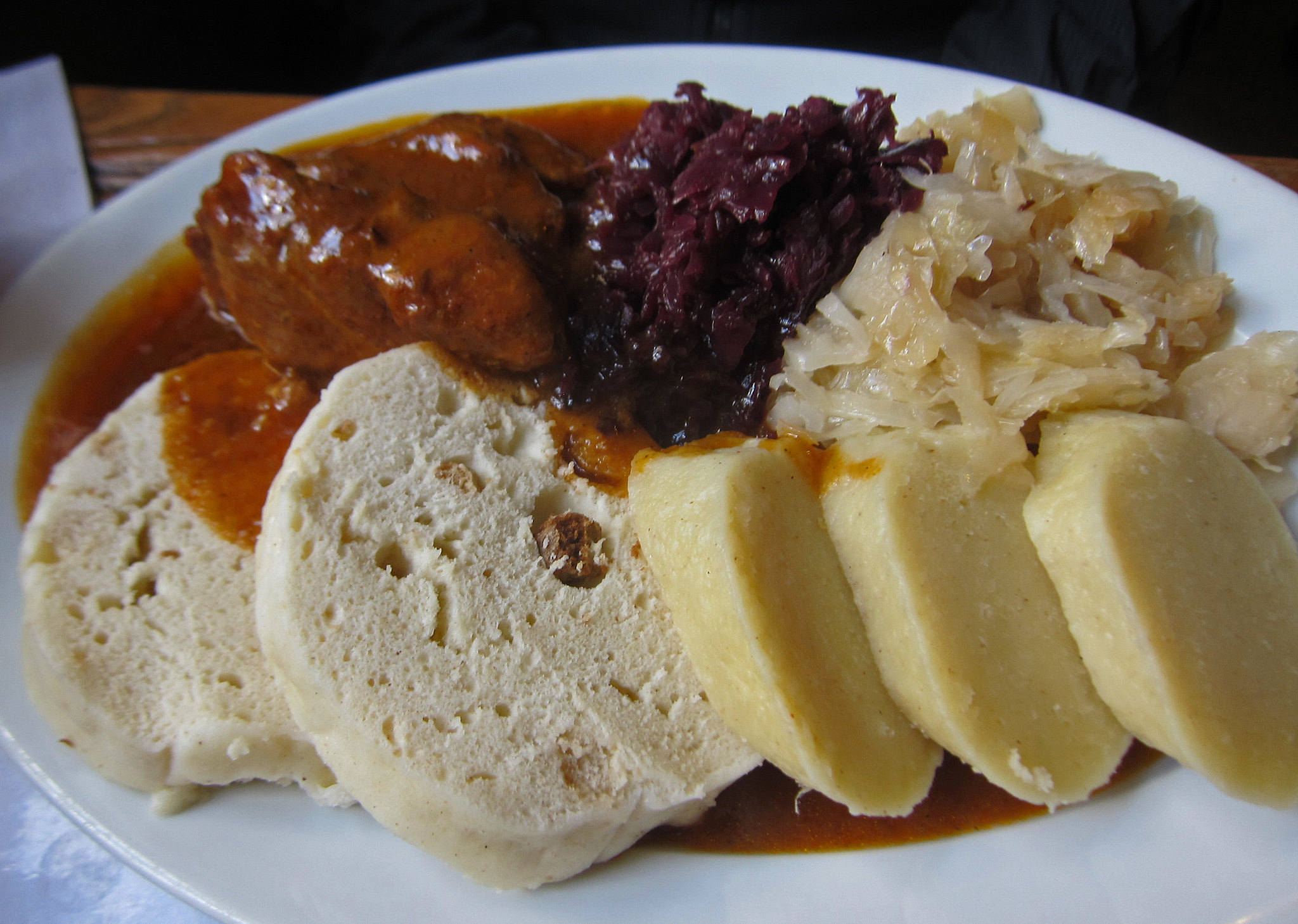
Meat and potatoes are common ingredients in Czech cuisine. Vepřo knedlo zelo, the country’s national dish, is a prime example of this. It’s a meal consisting of pork, dumplings, and sauerkraut. Řízek is another local favorite. It’s a local variant of the schnitzel, with restaurants and families often serving it with potato salad.
Dutch Cuisine
As opposed to many other types of European cuisine, Dutch cuisine places a heavier emphasis on vegetables rather than meat. Nevertheless, Dutch cuisine has many different kinds of delicacies, so there’s something for everyone.
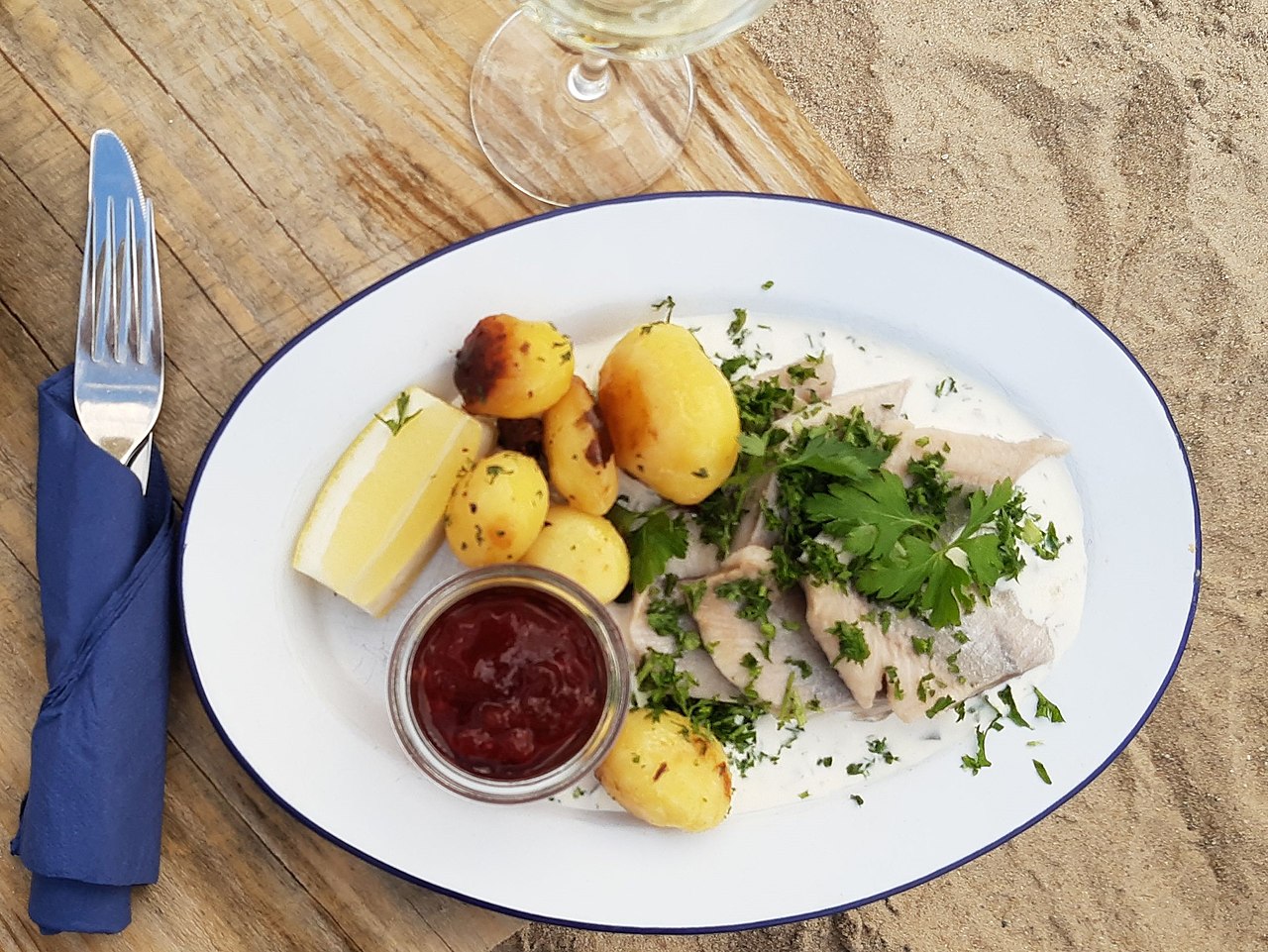
Soused herring, also known as Hollandse Nieuwe, is one of the Netherlands‘ most famous dishes. The Dutch traditionally consume this delicacy by holding the fish’s tail and eating it from head to tail. They also either consume the herring raw or lightly season it.
Stroopwafel is another popular Dutch delicacy. Stroopwafels can either be plain or have fillings, but whatever the preparation, the Dutch love it.
Finally, there’s the kroket, which is similar to the French croquette. It’s a kind of breadcrumb-covered meat that’s fried and shaped into sticks.
Egyptian Cuisine
Similar to other types of Middle Eastern cuisine, Egyptian cuisine is a result of religious, geographic, and resource considerations. Legumes and vegetables are particularly popular in Egypt. This is not surprising, as these grow abundantly on the Nile Delta.
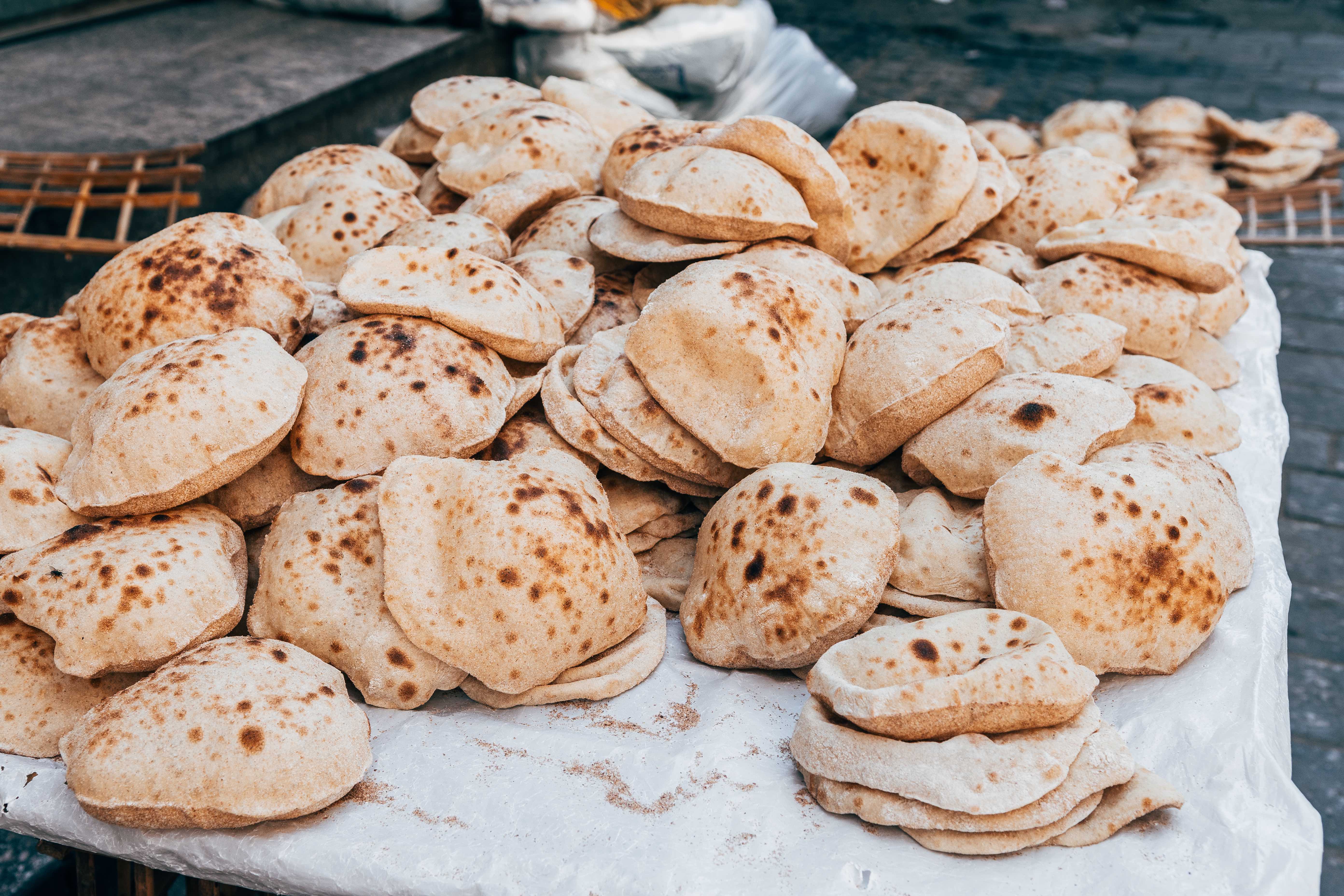
Aish baladi is one of the most common food in Egypt. It’s similar to pita bread. Aish baladi is actually a descendant of various kinds of flatbreads that have been baked in Egypt since ancient times. Fittingly, the word “aish” means “life” in Arabic, showing the bread’s importance to the lives of the region’s people.
Another staple of Egyptian cuisine is hummus. The chickpea-based dip is popular throughout the Middle East. While its exact origins are debated, its earliest known mentions are in Egyptian sources. Egyptian hummus is commonly eaten with pita and other food.
Ethiopian Cuisine
Ethiopian cuisine is one of the more underrated types of cuisine out there, which is a shame as it has a long and rich history.
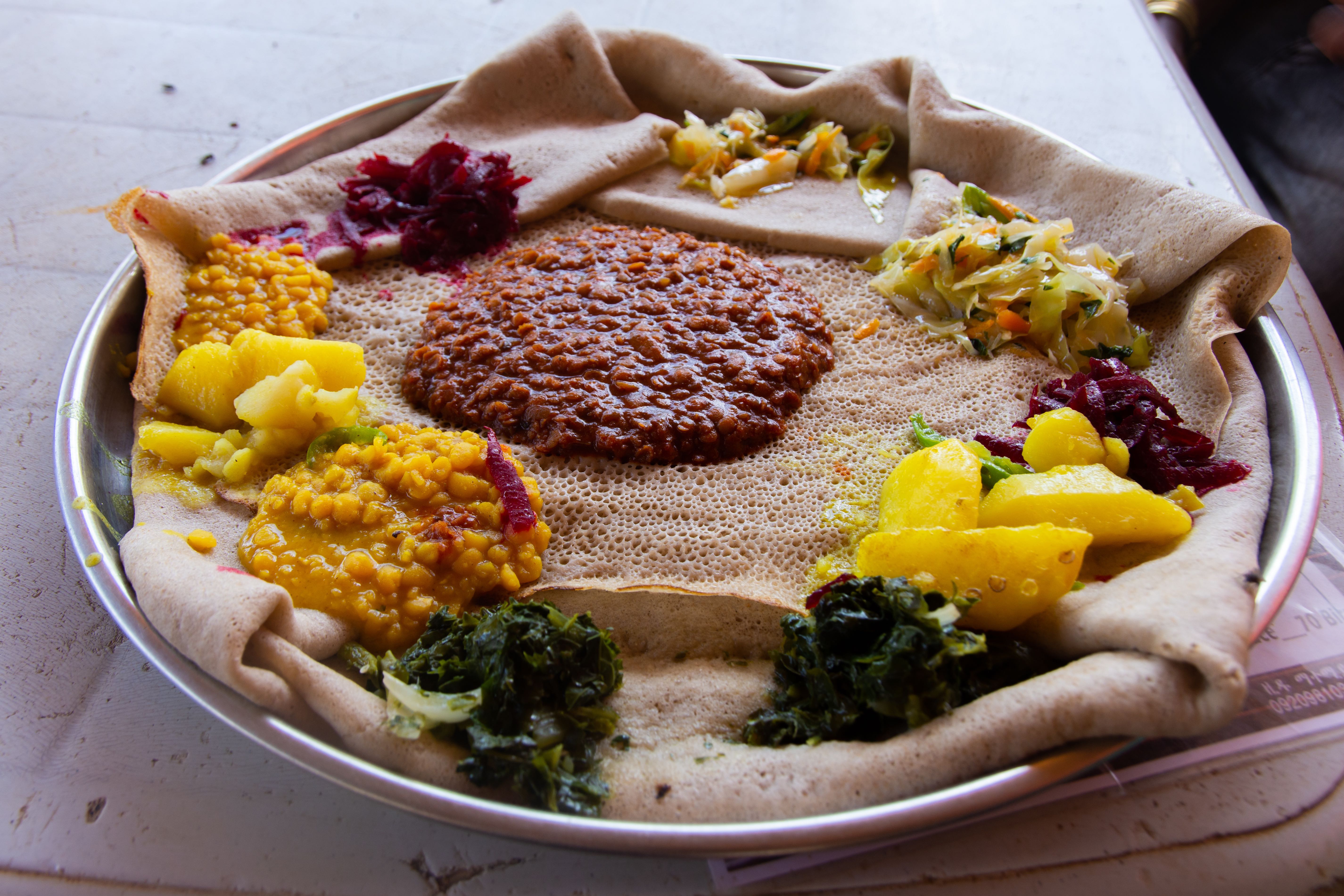
Injera, a flat tuff bread, is Ethiopia‘s main staple food. Teff is a grain that is commonly found throughout the Horn of Africa. People have described injera’s texture as being spongey. Instead of using utensils, Ethiopians eat with their hands. Interestingly enough, it is traditionally common to eat food from the hands of companions during meals.
Filipino Cuisine
It’s no surprise that a country of over 7,000 islands and over 100 ethnic groups have such a diverse cuisine. Filipino cuisine has many influences: native, Malay, Indian, Arabic, Chinese, American, Japanese, Korean, and so much more. Each Philippine region has its specialty. Indeed, Filipino cuisine probably deserves a whole listicle of its own!
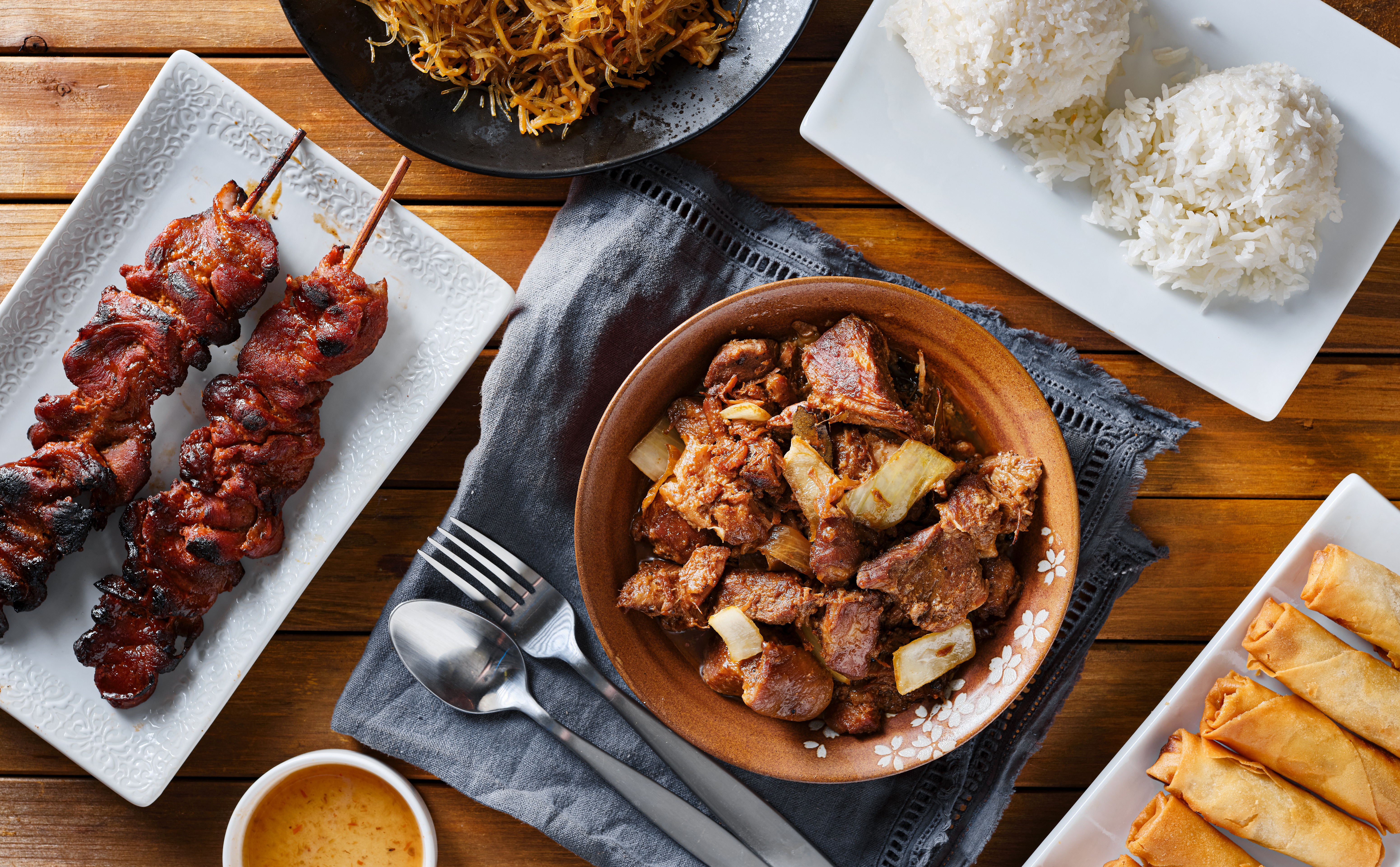
Adobo is perhaps the most popular Filipino dish. The term is actually Spanish in origin (it comes from the Spanish word for marinating), but Filipino in preparation. Adobo’s main ingredient is vinegar, although most variants also use soy sauce. Pork and chicken are the kinds of meat most commonly turned into adobo, although other ingredients are also possible.
Pancit is another popular Filipino dish. Pancit is the Filipino word for noodles and is a product of centuries of Chinese contact and immigration. There are many kinds of pancit in the Philippines, but pancit canton (a kind of wheat noodle) is perhaps the most common. Pancit is a staple in celebrations such as birthdays, parties, and other events.
Perhaps the most notorious Filipino dish internationally is balut. Balut are duck eggs that are partially developed. Filipinos and tourists most commonly eat it as street food. Lechon is a whole roasted pig that Filipinos commonly consume at celebrations. Feasts and parties are often not complete without either lechon or pancit.
And yes, in case you’re wondering: yes, Filipinos love Jollibee. The popular chicken joint with an international cult following is a common sight in cities and developed towns.
Finnish Cuisine

If you research Finnish cuisine, you’ll notice something interesting. In particular, Finnish cuisine makes heavy use of baked food. Examples include Karelian pasties (Karjalanpiirakka), which are rye pies with a rice porridge filling. Indeed, rye bread (Ruisleipä) is a common staple on Finnish dinner tables.
Other popular Finnish delicacies include salmon soup, as well as Leipajuusto, a type of cheese that’s often put on bread.
French Cuisine
Baguettes! Escargot! Champagne! Macarons! Cheese! When one thinks of France, fine dining and romance are probably what come to mind when it comes to food. But really, French people don’t always eat just these. They’re regular people too, eating food influenced by both local and international factors.
Baguettes themselves are surprisingly young. In fact, the earliest known mention of the baguettes we know today only dates back to 1920. However, French bread has a long history, dating back to long before even the invention of baguettes.
Many French delicacies are famous both locally and abroad. One example is the Soupe à l’oignon (onion soup). It’s made of onions and animal stock, which is then topped with cheese. Many places in France have their take on this classic dish.
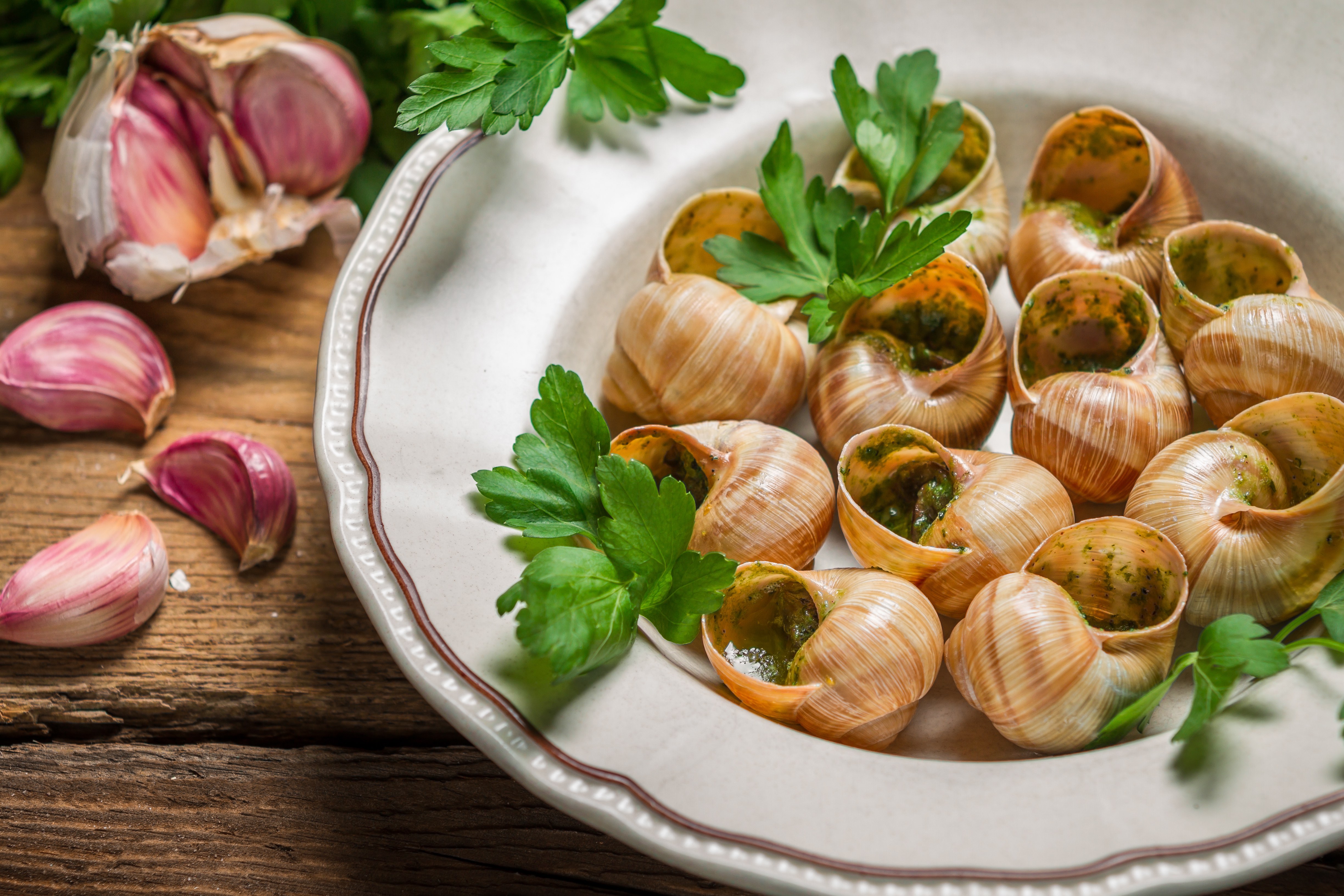
French cuisine is really such an interesting topic that we would probably be here all day talking about it. It’s really worth a list of its own. However, for now, let’s end this blurb with perhaps the most notorious French dish of them all: escargot. Contrary to popular belief, French people do not eat buttered snails every day. In fact, most French people have never tried it even once in their lives! Indeed, most French consider escargot a special delicacy, most commonly consumed on special occasions. While traditionally it was mainly the upper classes who consumed it, today people of all backgrounds can enjoy it.
German Cuisine
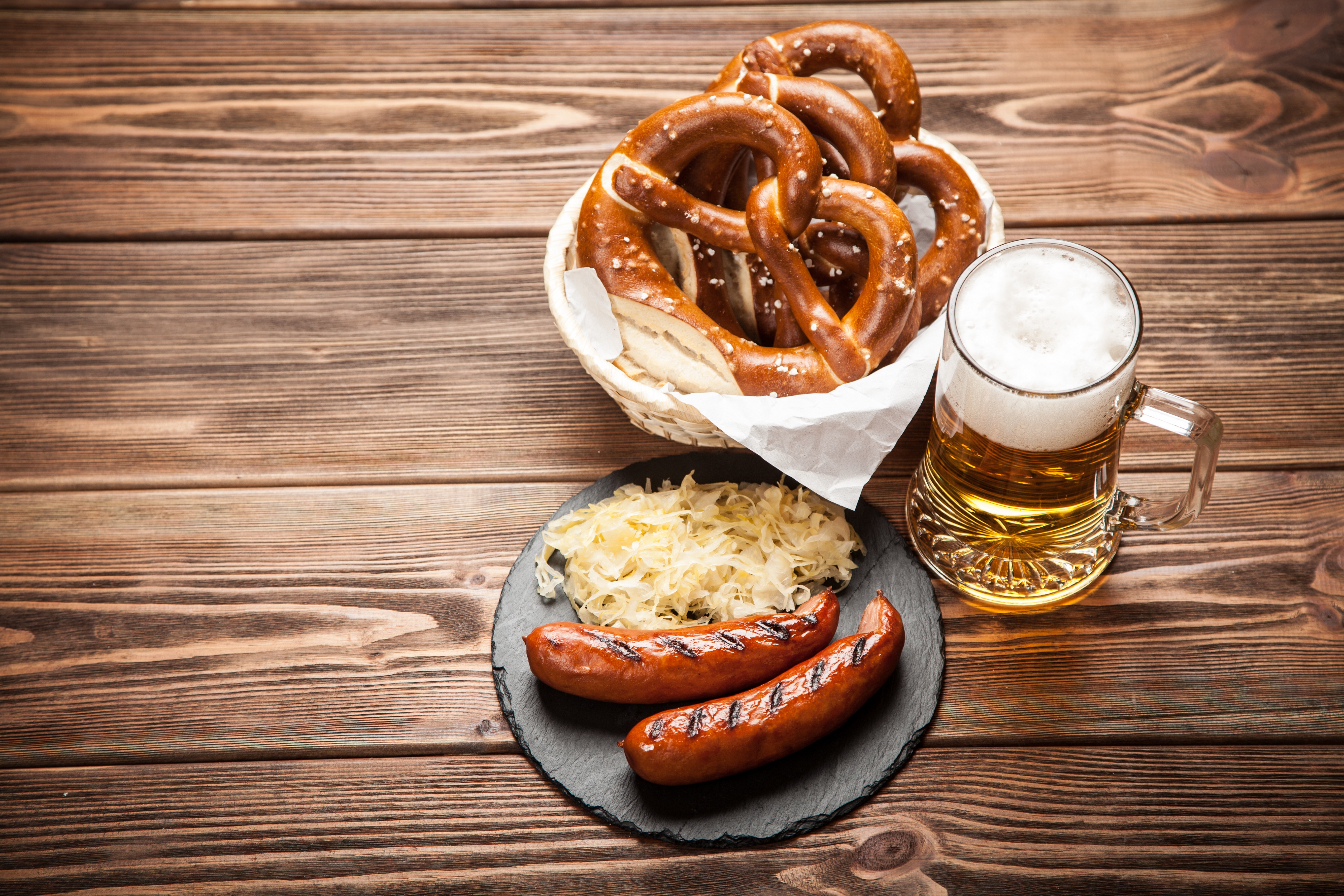
German cuisine is one of the most interesting types of cuisine out there. It is perhaps most famous for its sausages and beer. And not without good reason. Both of these foods are staples, and Germans young and old love them.
German sausages are among the country’s most famous cultural exports. In fact, the beloved Frankfurter takes its name from the city of Frankfurt. But perhaps the most famous German sausage is bratwurst. It’s traditionally made with pork, beef, or veal, and seasoned with herbs and spices. Despite being a German creation, it has spread worldwide. In fact, the German diaspora in places such as the United States has even created their takes on it!
Sauerkraut is another of Germany‘s most famous dishes. It’s a fermented cabbage that Germans add to soups, meals, and even sausages! Many consider it to be Germany’s counterpart to Korea’s famous kimchi.
Other beloved German foods include pretzels, rouladen (a stuffed meat dish cooked with mustard), and sauerbraten (a kind of sour pot roast).
Greek Cuisine
Greece’s geography and centuries of history are all major influences on Greek cuisine. After all, Greece is next to the Mediterranean, so it’s no wonder that both the sea and outside influences have made their mark.
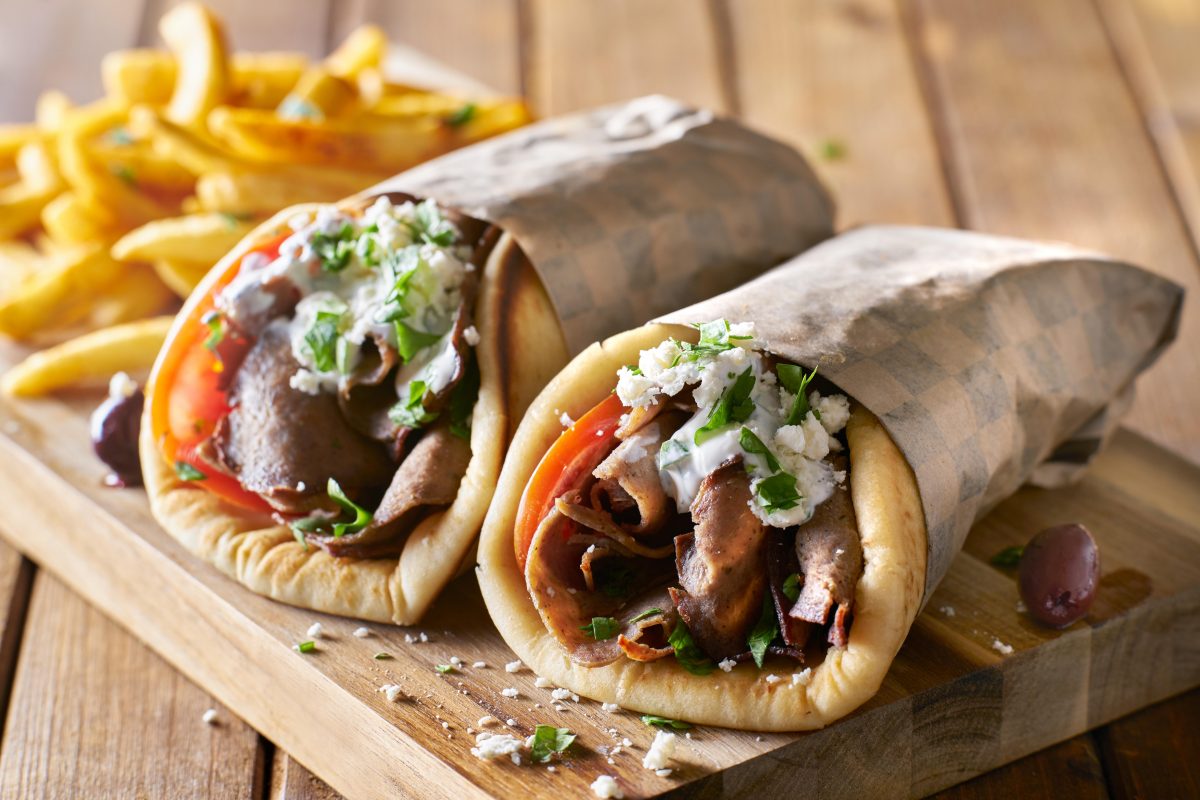
The country’s cuisine takes large influence from Ottoman cuisine. This is not surprising since the Ottoman Empire ruled Greece for centuries. Gyros are a prime example of this. It’s a dish consisting of a flatbread filled with meat and vegetables. It’s actually a descendant of the kebab doner and is related to the shawarma.
Greek cuisine also makes heavy use of olive oil. This is a result of the abundance of olive trees in the region. Other popular Greek dishes include moussaka, a baked dish made with meat, eggplants, and other vegetables, and dolmades, a stuffed dish.
Hungarian Cuisine
Hungary’s cuisine is rich in meat and vegetables. It may seem daunting, but it’s worth a shot if you get the opportunity.
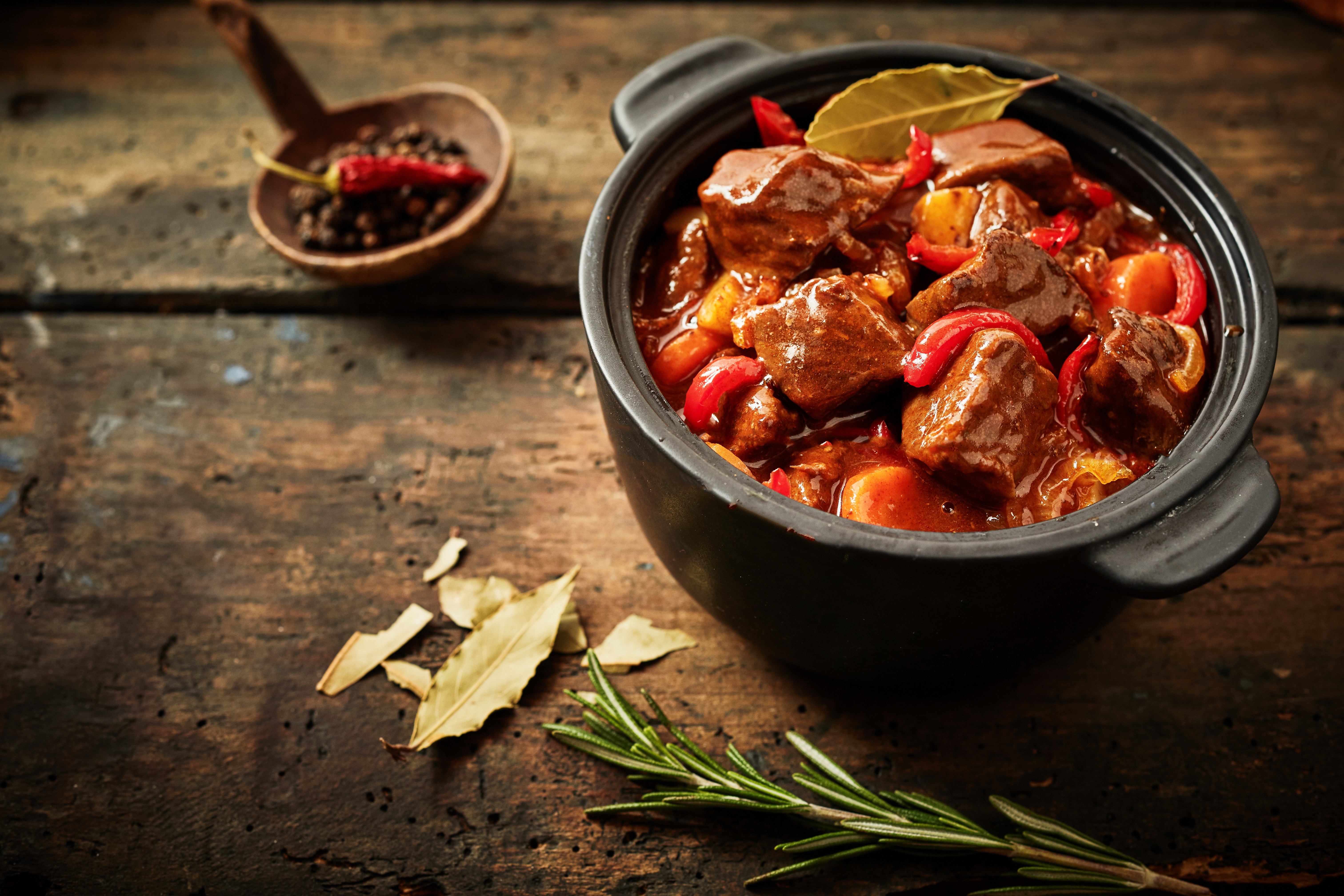
Goulash (also spelled gulyás) is perhaps Hungary’s most famous dish. It’s a stew that’s made of beef or other meats and primarily seasoned with paprika. While originating in Hungary, goulash has also become popular elsewhere in Europe and even internationally.
Other popular Hungarian dishes include halászlé, also known as fisherman’s soup, and lángos, a flatbread topped with various ingredients that’s popular as street food.
Indian Cuisine
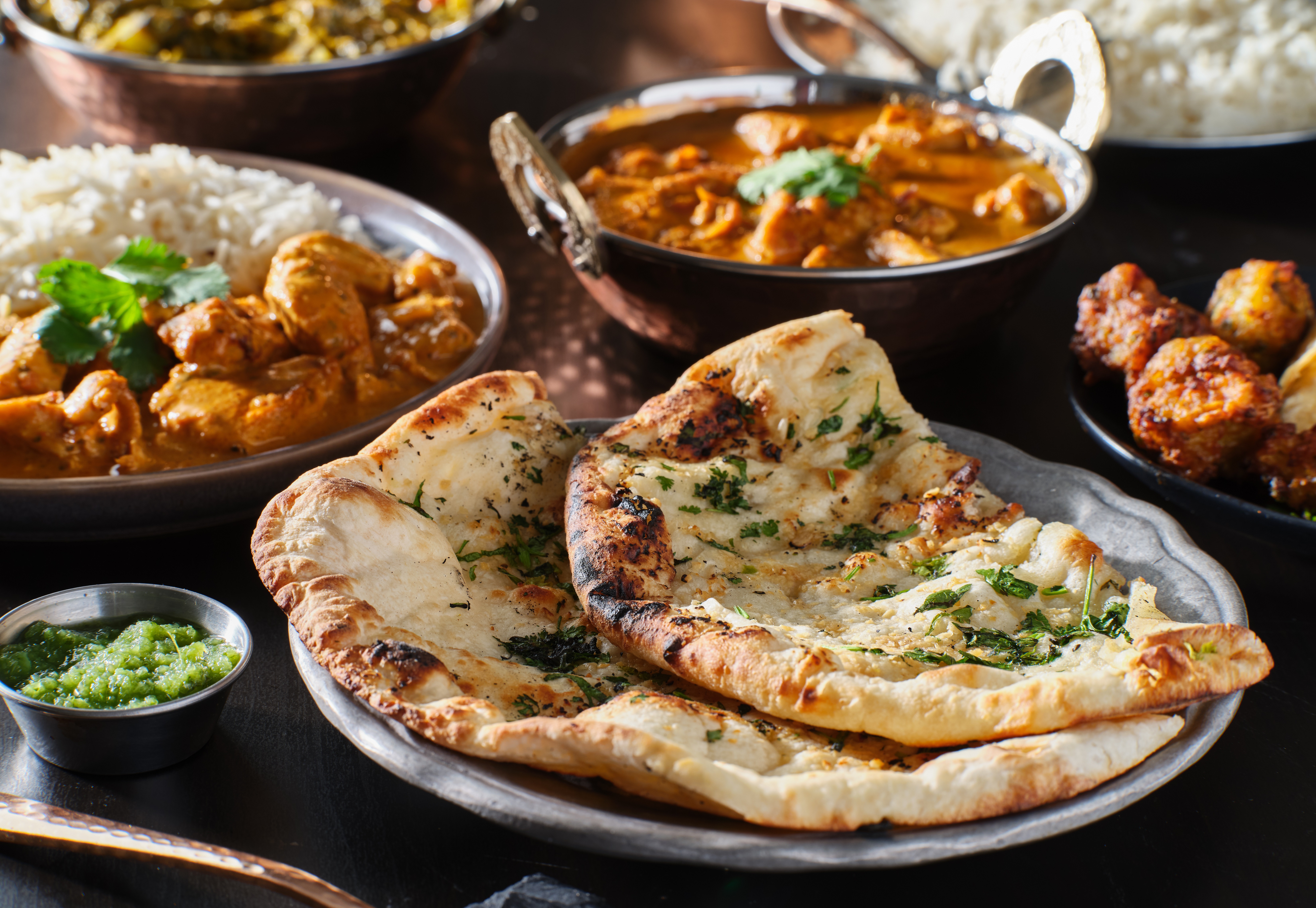
Another type of cuisine that probably deserves a list of its own, Indian cuisine is as diverse as you’d expect from a country of over 1 billion people. Given that the majority of Indians are Hindus, it’s not surprising that Indian cuisine is heavy on veggies. It also has nods to Muslim, Christian, Sikh, Buddhist, and even colonial influence.
Curry is perhaps the most iconic Indian dish. It’s so popular that other non-Indian nations such as Britain and Japan have their takes on it. However, authentic Indian curry is made with ground spices called garam masala. Some local variants also use curry leaves. Given that many Hindus are vegetarian, Indian curry usually does not contain any meat.
India’s cuisine is so diverse that we would be here all day if we listed everything! However, some internationally popular Indian dishes include Aloo gobi (a cauliflower and potato mix), naan (a kind of flatbread), paneer (Indian cheese), and biryani (a rice dish that’s also popular in other parts of Asia). Unsurprisingly, Indian cuisine has influenced its neighbors and every place where the Indian diaspora is present.
Indonesian Cuisine
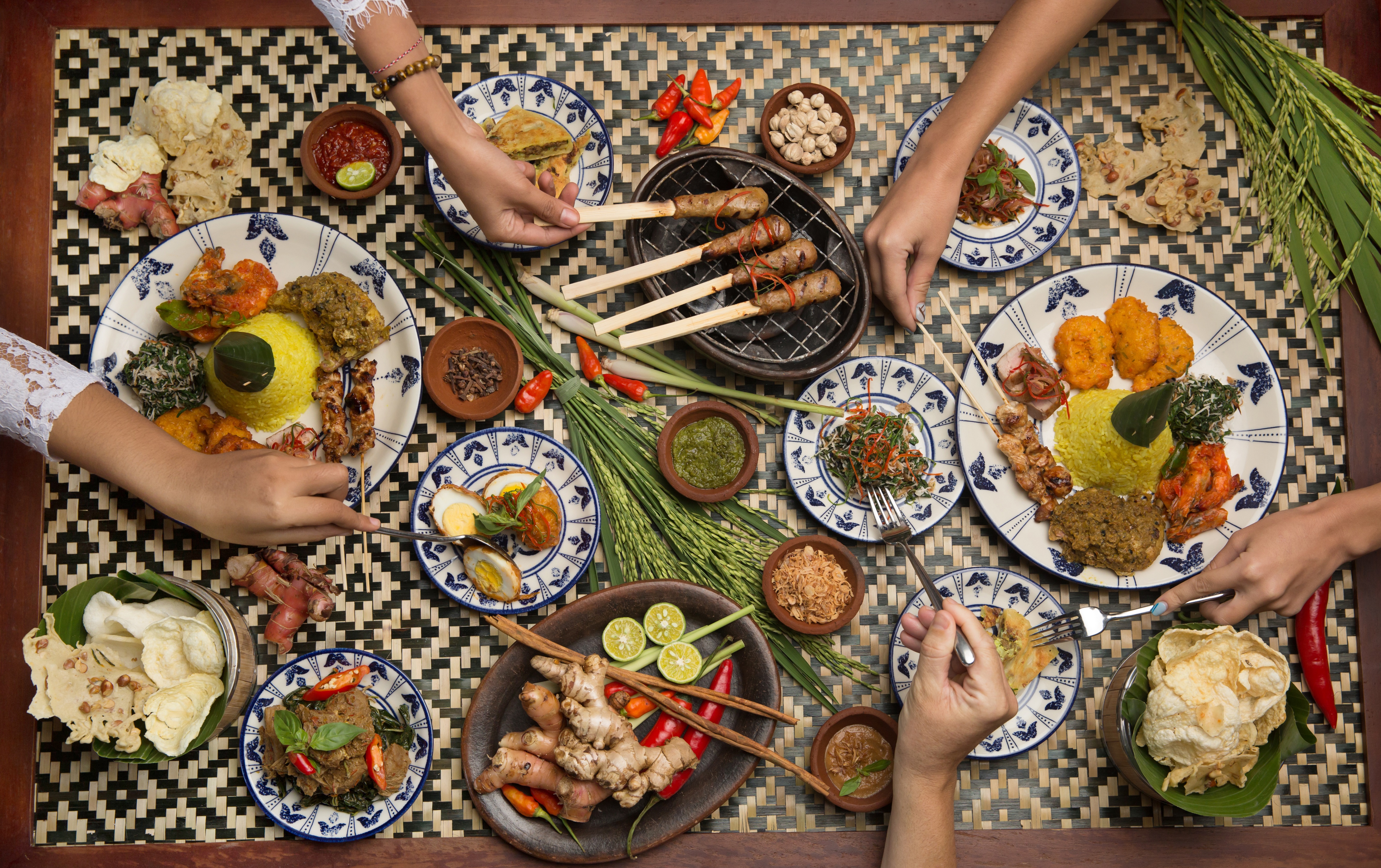
Indonesian cuisine is probably one of the more underrated types of cuisine out there, which is a shame considering the country’s rich and diverse heritage.
It’s no surprise that the local cuisine is a fusion of local conditions, contacts with the rest of Asia, and colonial influences. It’s also a reflection of Muslim, Christian, Hindu, Buddhist, and animist characteristics.
Indonesia’s national dish is nasi goreng, which means “fried rice” in Indonesian. As the name suggests, it’s a fried rice dish that cooks garnish with various ingredients. Its main ingredient is a sweet and thick soy sauce called kecap. Indonesians commonly eat nasi goreng during breakfast, but they also often eat it during other times of the day. Many Indonesian dishes have sambal, a sweet and spicy chili paste. Sambal kacang, a kind of peanut paste, is also a popular condiment.
Other popular Indonesian dishes include mi goreng (fried noodles), soto (a chicken and turmeric soup), and satay (grilled meat).
Irish Cuisine
Contrary to popular belief, corned beef isn’t the national dish of Ireland. In fact, this St. Patrick’s Day favorite isn’t even an everyday food in Ireland. While Irish people do eat it sometimes, they have many other types of food to choose from instead. Notably, Irish people actually prefer bacon to corned beef, as we’ll see later. And no: while the Irish love their Guinness, you won’t find green beer in Ireland except maybe as a tourist attraction.
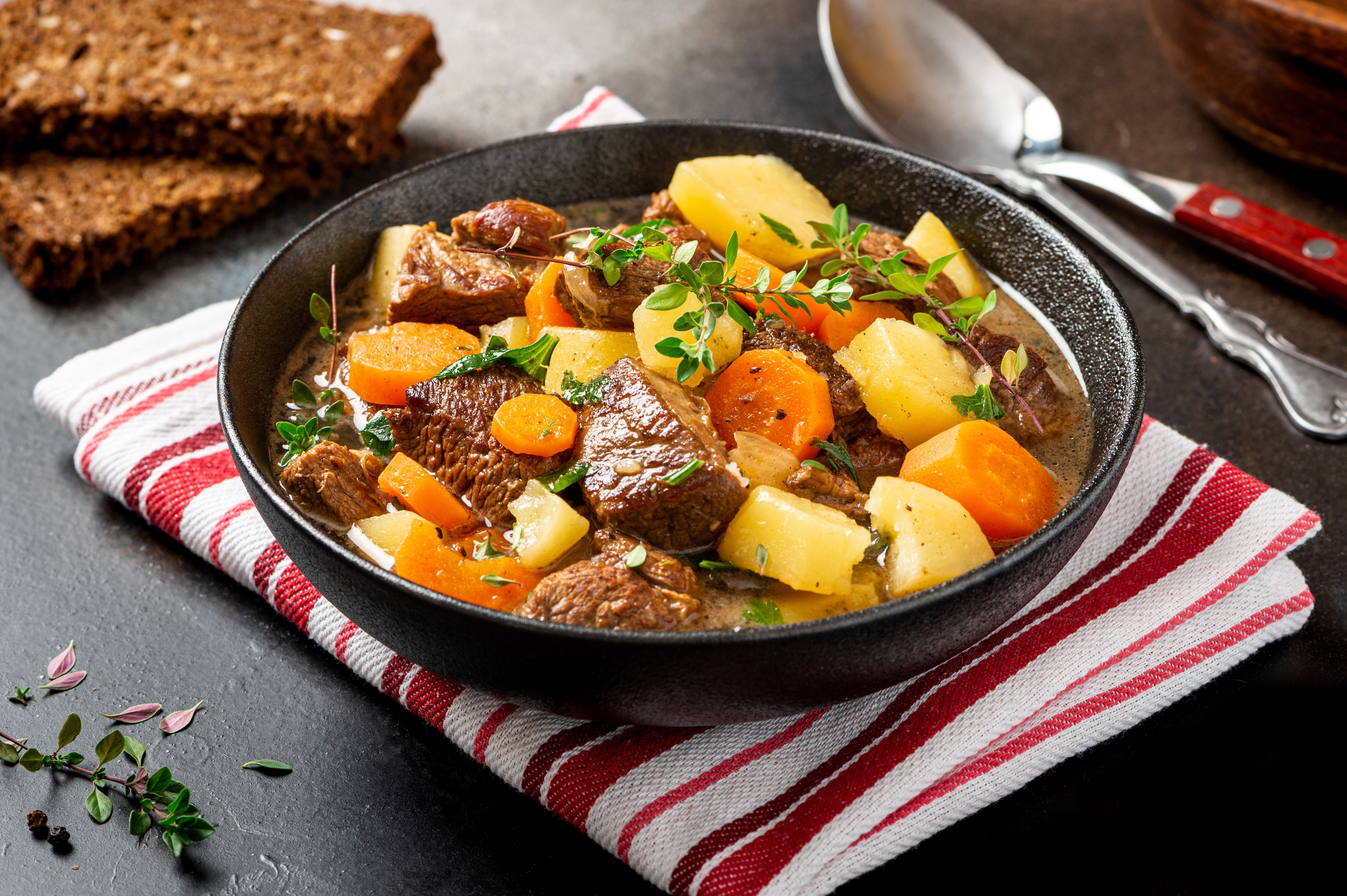
Irish cuisine is rich in potatoes. Not surprising considering how intertwined potatoes and the Irish are. One example of this relationship is Irish stew, which is made with mutton, potatoes, and other ingredients. There’s also boxty, a pancake-like dish made of potatoes and often served with bacon for breakfast. Finally, there’s soda bread, which uses baking soda instead of yeast and also often uses buttermilk.
Israeli Cuisine
For a country with a history like Israel, it’s no surprise that religious dietary laws are a major influence on its cuisine. However, you’ll also find influences from its neighbors and other beliefs as well.
Many dishes popular throughout the Middle East, such as hummus and falafel, are also popular in Israel. Because dietary laws forbid the consumption of pork and shellfish, meat dishes tend to be made from lamb or fish. Notably, Jews who strictly follow dietary laws actually maintain separate kitchens to separate meat and dairy products. However, such practices are not universal even among Jews.
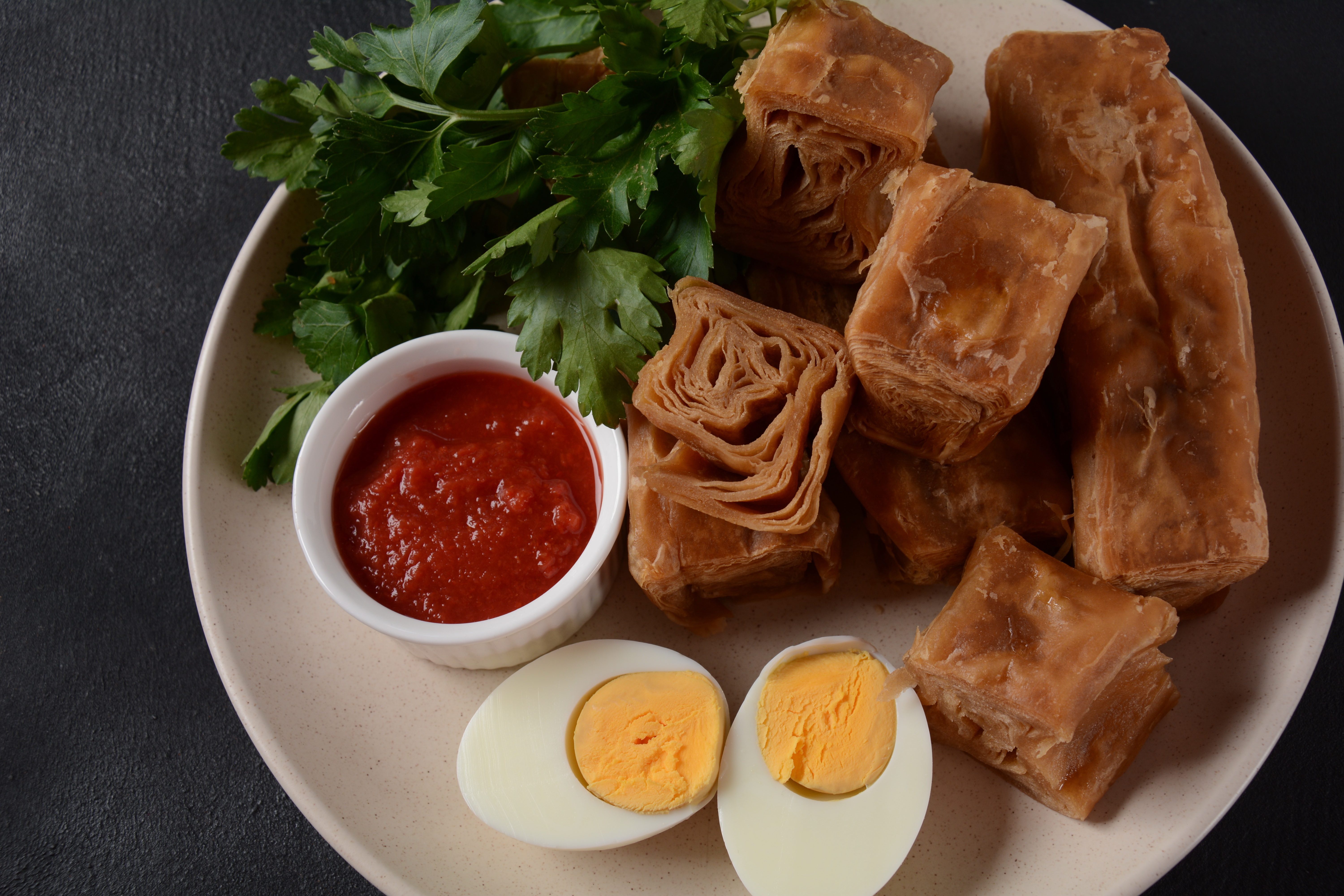
Given that many Israelis have ancestors who came from around the world, many influences have also made their way into Israel too. Examples of beloved Israeli dishes with foreign origins include the pastry jachnun, which was introduced by Yemeni immigrants, and chraime, which originally came from Libya.
Italian Cuisine
You may develop the temptation to order pasta or pizza at your favorite joint after reading this section. And not without good reason. These two dishes are among Italy’s most iconic cultural exports. But there’s much more to Italy than just pasta and pizza.

Traditional authentic Italian pizzas are flat and baked in wood-fired ovens. These pizzas can either have tomato sauce toppings or only have olive oil seasonings. Unlike many exported pizzas, Italian pizzas are light on meat, instead mostly having vegetable topics. One thing that remains the same? Cheese. Lots and lots of it. Usually mozzarella, but other varieties are also common.
There are perhaps as many varieties of Italian pasta as there are Italian cities. Whether it’s spaghetti, fettuccini, alfredo, lasagna, and so on, there’s definitely pasta for everyone. Even the sauces vary, ranging from Bolognese to carbonara, and everything in between.
Italy isn’t just all pasta and pizza, however. There’s also risotto, a rice dish. Gnocchi are potato dough balls. Pesto, the ever-popular sauce, can be enjoyed on its own or used in pasta and pizza. And of course, there’s gelato, Italian-style ice cream that has gained a cult following worldwide.
Jamaican Cuisine
When one thinks of Jamaican cuisine, Jamaican patties are probably the first (or even only) thing that comes to mind. And while Jamaican patties are popular in Jamaica, the country has much more to offer.

Jamaican cuisine is a mish-mash of Caribbean, African, and European flavors. Ackee and saltfish, Jamaica’s national dish, is an example of this fusion. Cod is common in Jamaican waters, and it’s served with the ackee fruit, which is actually native to Africa. Another popular Jamaican dish is jerk chicken, which uses a slow grill technique along with the use of spices such as thyme and scotch bonnet.
Japanese Cuisine

One of the most popular types of cuisine on this list, Japanese cuisine has many influences. Japan‘s strong fishing culture is one of them; hence the prominence of seafood. However, foreign influences have also made their imprint on Japanese cuisine. For example, ramen, one of Japan’s most popular soups, actually descends from Chinese soups. Meanwhile, tempura, the famous method of battering and frying shrimp and vegetables, is a Portuguese borrowing.
Nevertheless, some Japanese dishes are uniquely Japanese. Perhaps none is as famous as sushi. Resourceful Japanese people originally invented sushi as a way to preserve fish. They accomplished this by covering fish in rice and vinegar. Eventually, this became its own dish. There are many kinds of sushi. This includes makizushi (or simply maki) which involves rolling ingredients inside nori (seaweed strips). Other kinds include putting sashimi (raw meat or fish) on top of rice.
Japanese cuisine is worth a deeper look as each region and prefecture has its own local specialties. We’d be here all day if we were to list every Japanese delicacy and regional fare. Popular local fare includes teriyaki (Japanese sweet barbecue), gyudon (beef bowls), karaage (fried chicken), and takoyaki (octopus meatballs).
Kazakh Cuisine
Kazakh cuisine has some conventional ingredients, but also some more exotic ones. Kazakhstan’s meat diet includes mutton among more conventional meats. However, there’s also more unusual meat involved: horse meat! Dating back to the Kazakh people’s nomadic ancestors, horse meat is central to Kazakh cuisine.

Beshbarmak is Kazakhstan’s national dish. It involves boiling lamb or horse meat. Other core ingredients include square noodles. Interestingly, the name means “five fingers” in Kazakh.
Kenyan Cuisine
A country with a rich heritage like Kenya is sure to have many types of cuisine, right? And you’re right. Kenyan cuisine is as diverse as the over 100 ethnic groups that call Kenya home. This diversity is a result of not just African sensibilities but also colonial influence.
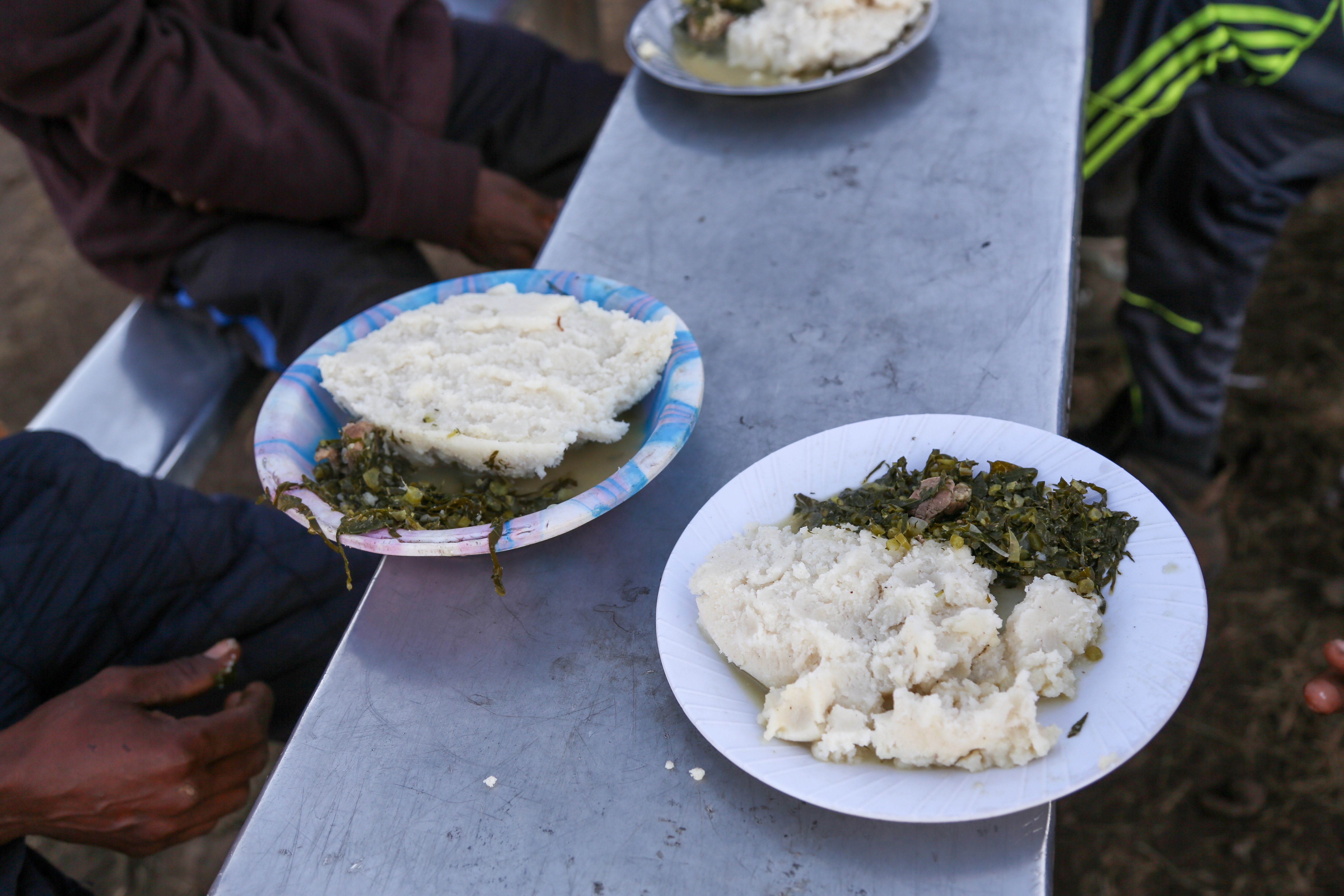
Ugali is perhaps Kenya’s most iconic and beloved dish. It’s a solid porridge made from corn flour that’s also popular elsewhere in Africa but is most closely associated with Kenya. No Kenyan meal is complete without this delicacy.
Korean Cuisine
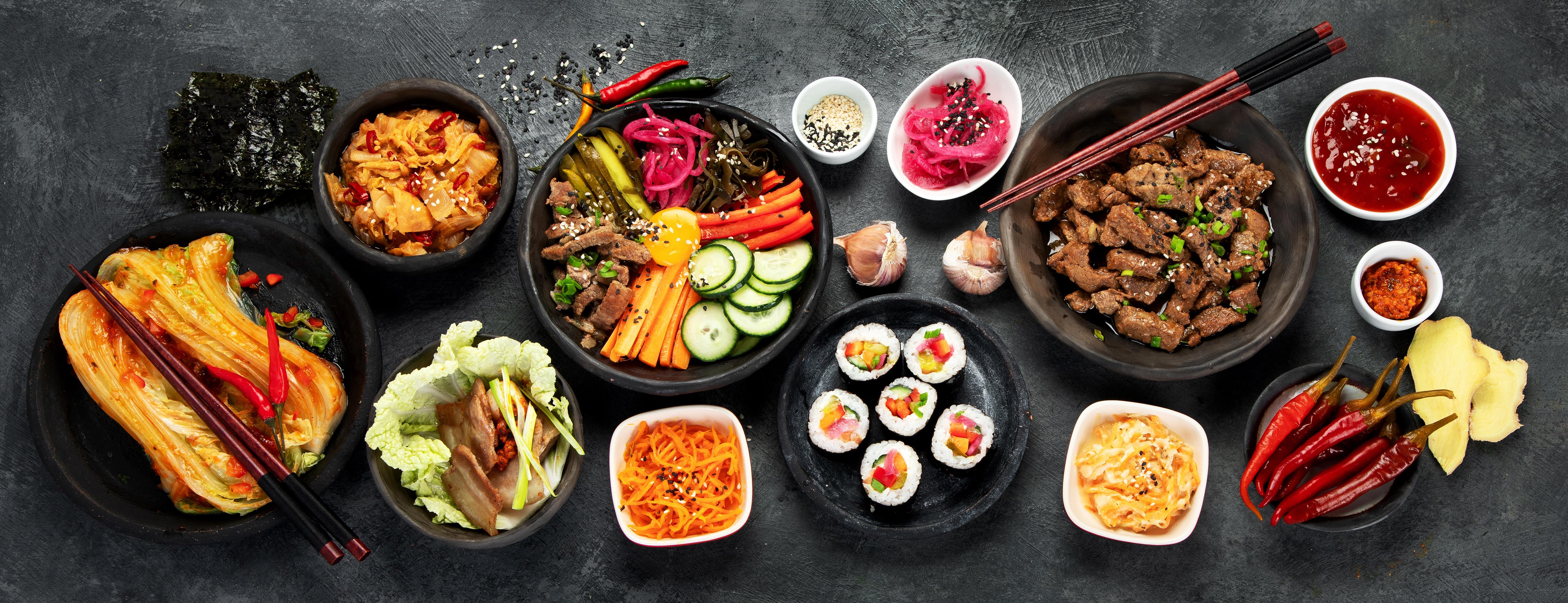
When one thinks of Asian types of cuisine, Korean cuisine is near the top of the list regarding ubiquity.
Kimchi, that polarizing pickled dish with a smell that’s loved or hated, is central to Korean dinner tables. Other Korean favorites include bulgogi, a kind of marinated barbecue that uses grilled thin meat slices, samgyeopsal or thin pork belly strips, and gimbap (also spelled kimbap). Gimbap is similar to makizushi but uses cooking instead of raw ingredients, as well as using sesame oil instead of vinegar.
One of the more popular types of fusion cuisine in Korea is Korean fried chicken. Korean fried chicken is often double-fried, crispy, and comes in sweet and spicy flavors. In Korea, it is often served with pickled radish and beer.
Malagasy Cuisine
Madagascar is probably not one of the first countries that comes to people’s minds (except maybe for the film franchise) when it comes to notable cuisine. However, Malagasy cuisine has a rich history and is worth checking out.
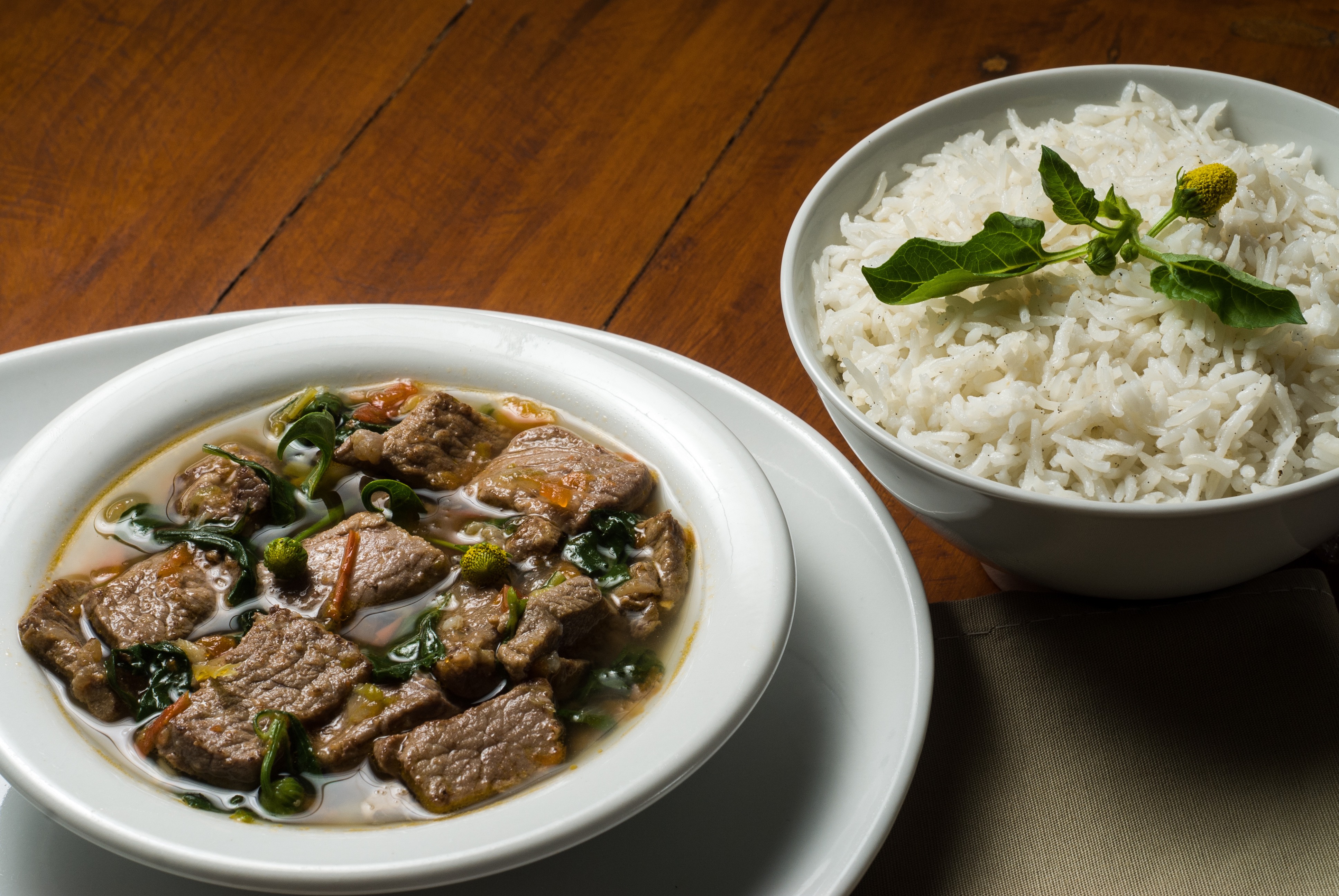
Madagascar’s main staple food is rice. Romazava, the country’s national dish, is a stew made with meat and vegetables and served over rice. Leafy greens are the main vegetables used in Romazava, but other ingredients such as garlic are also used.
Malaysian Cuisine
As a multiethnic nation consisting of Malays, Chinese, Indians, and other groups, it’s no surprise that Malaysian cuisine takes inspiration from many types of cuisine. Indeed, Malaysian cuisine is not just a melting pot of various cultures, it’s also a reflection of cultural sensibilities. Given that Islam is Malaysia’s official religion, you’d expect traditional Malay food to adhere to Islamic values. So no pork, unless you eat at a Chinese restaurant since most Malaysian Chinese are either Buddhist or Christians.
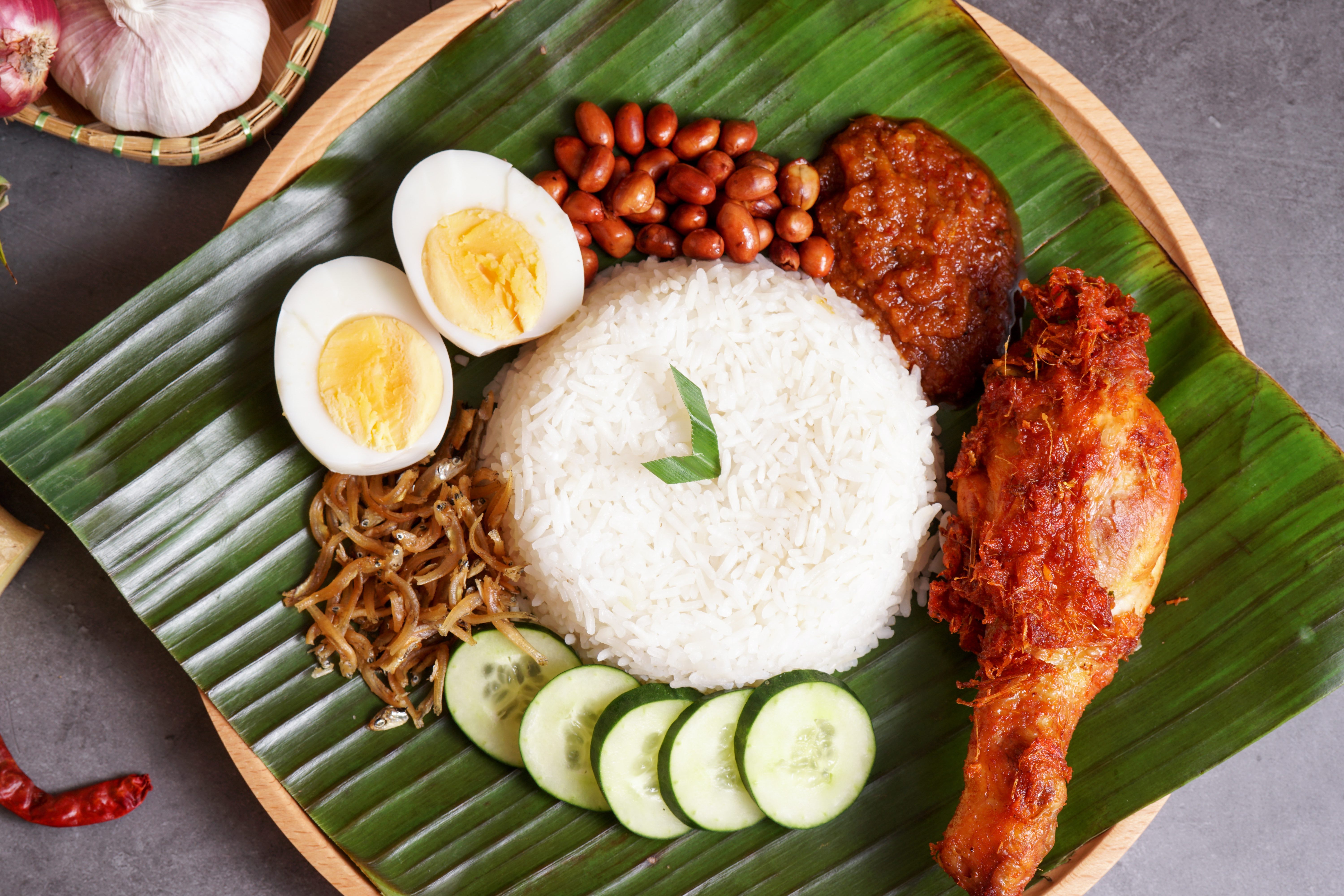
Many consider nasi lemak to be Malaysia’s national dish. It refers to rice that’s cooked with spices, coconut milk, and pandan leaves. It is often served with anchovies, sambal, and other kinds of meat such as chicken.
Rendang is another popular Malaysian dish, although it’s Indonesian in origin. It’s made from beef or chicken and is made with spices and coconut milk. And no, chicken rendang is not supposed to be crispy.
Malaysia’s Chinese and Indian communities have also imported their local delicacies to Malaysia. Such delicacies are so beloved that they have become popular among all communities, not just their originators. For example, noodles are popular among all Malaysian groups.
Mexican Cuisine
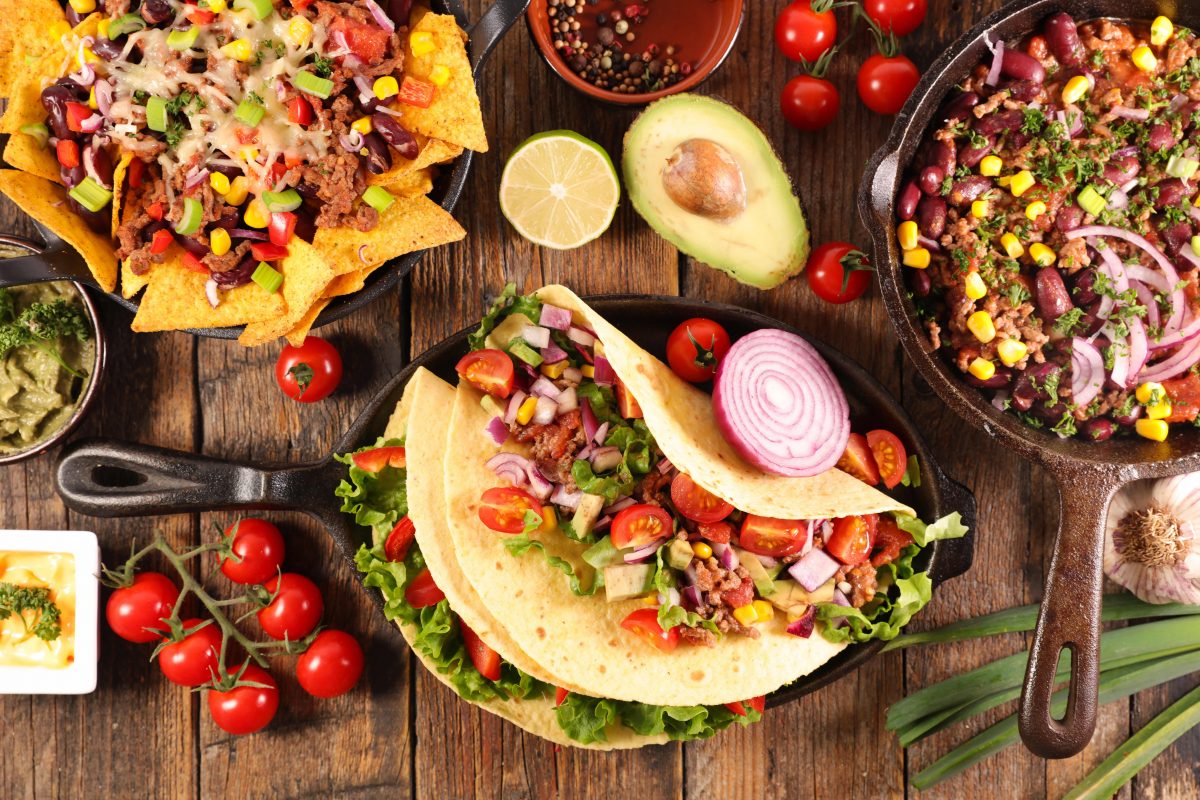
Mexican cuisine is probably one of the more familiar types of foreign cuisine in America today. You can thank Taco Bell and other chains for that. However, Taco Bell and others are rarely authentic Mexican food experiences. In fact, Taco Bell famously failed when they tried expanding to Mexico!
Indigenous and colonial factors are the main contributors to authentic Mexican cuisine. You’ll see plenty of dishes that use common local ingredients such as maize (corn), avocados, and so on.
Unlike the varieties you see in Taco Bell and elsewhere, authentic tacos are always soft. Wheat or corn flour are the main ingredients of authentic Mexican tacos. Flour tacos are more common in Northern Mexico, while corn tacos are ubiquitous in the southern regions. Unlike American tacos which primarily use ground beef, Mexican tacos use a wider variety of fillings. Fish tacos even exist! Finally, Mexican tacos usually have their ingredients served as toppings rather than being wrapped.
Mexican cuisine has too many delicacies to list here. But suffice to say, other popular Mexican dishes include chilaquiles (a tortilla-based dish often eaten at breakfast), huevos rancheros (ranch eggs), menudo (pork and corn stew), and of course burritos.
Mongolian Cuisine
Mongolian cuisine is composed of many nods to the Mongolian people’s nomadic heritage. Grilled meats are common, such as beef and lamb, but also goats, and even camels and yaks!
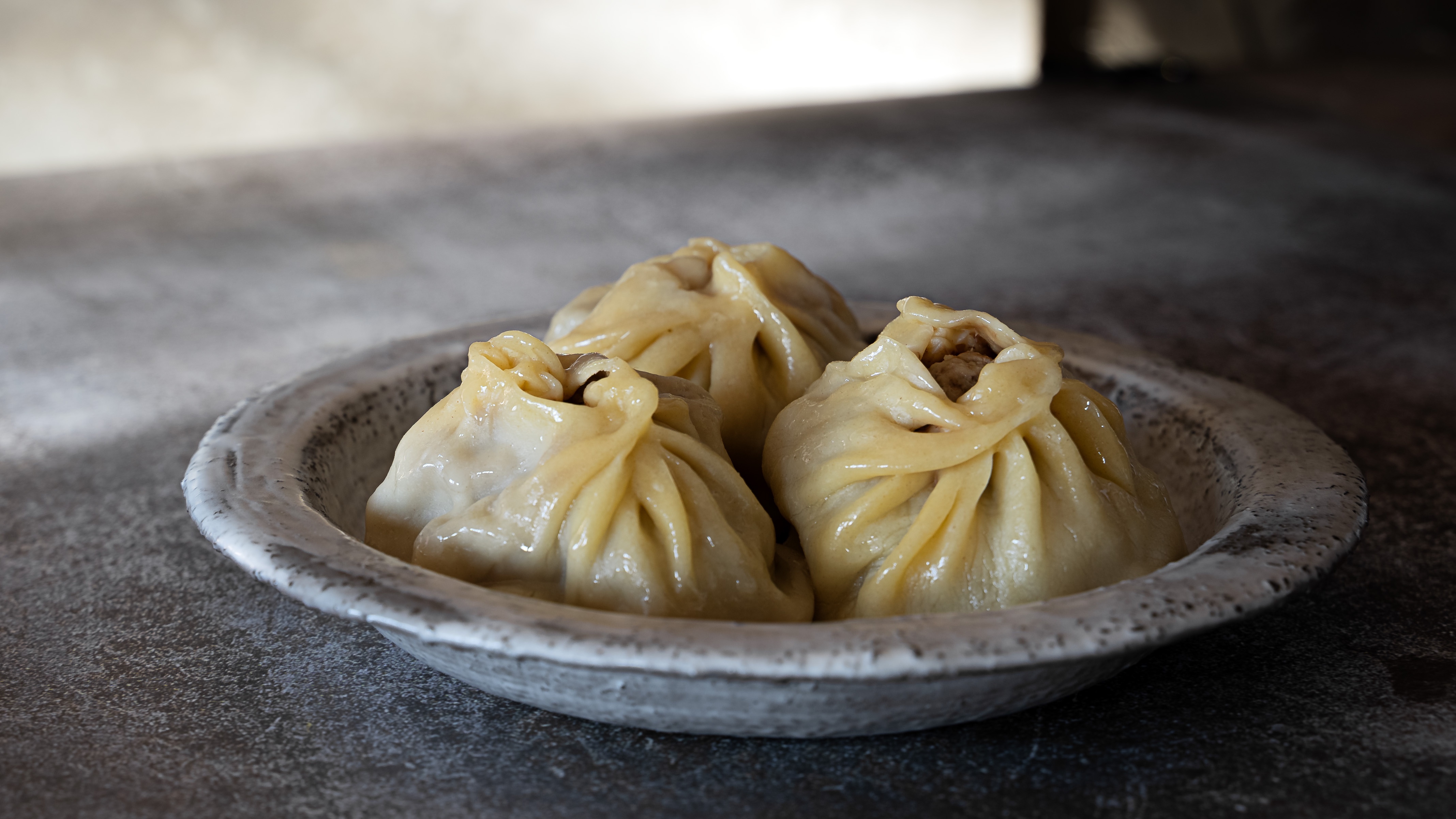
Buuz, a kind of dumpling, is perhaps Mongolia’s most popular dish. It’s made with either beef or lamb and is most commonly eaten during Tsagaan Sar (Mongolian Lunar New Year). Many Mongolians also love Guriltai shul, a kind of meat soup.
New Zealand Cuisine
New Zealand’s cuisine takes many influences from other types of cuisine. You’ll find Māori influences but also nods to English and Australian cuisines too. Even immigrants to New Zealand have made their mark on the country’s food.
Given that New Zealand is next to the sea, it’s no surprise that seafood plays a big role in the country’s cuisine. Indeed, the country’s official tourism website claims that New Zealand has some of the best seafood in the world.
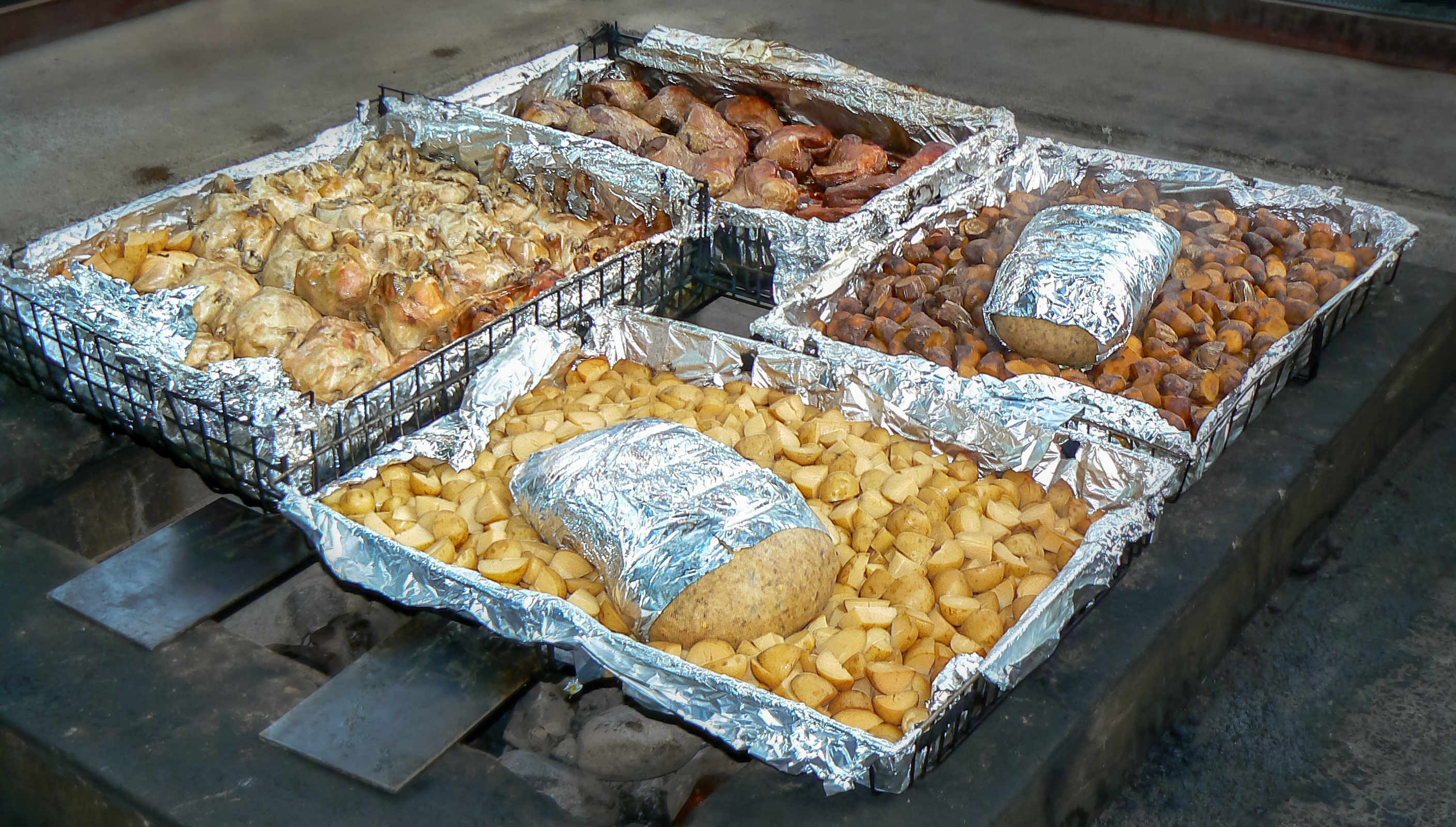
Māori hāngī (or simply hāngī) is one of the most unique aspects of New Zealand cuisine. It’s a form of open-pit cooking where meat and other ingredients are heated by hot stones or even geothermal pits. New Zealanders of all kinds usually cook the Māori hāngī way during feasts and other special occasions.
Nigerian Cuisine
Nigeria is a country of over 200 ethnic groups, so it’s no surprise that Nigerian cuisine has a myriad of delicacies. Nigerian cuisine takes inspiration not just from Nigerian flavors but even from neighboring cuisines too.
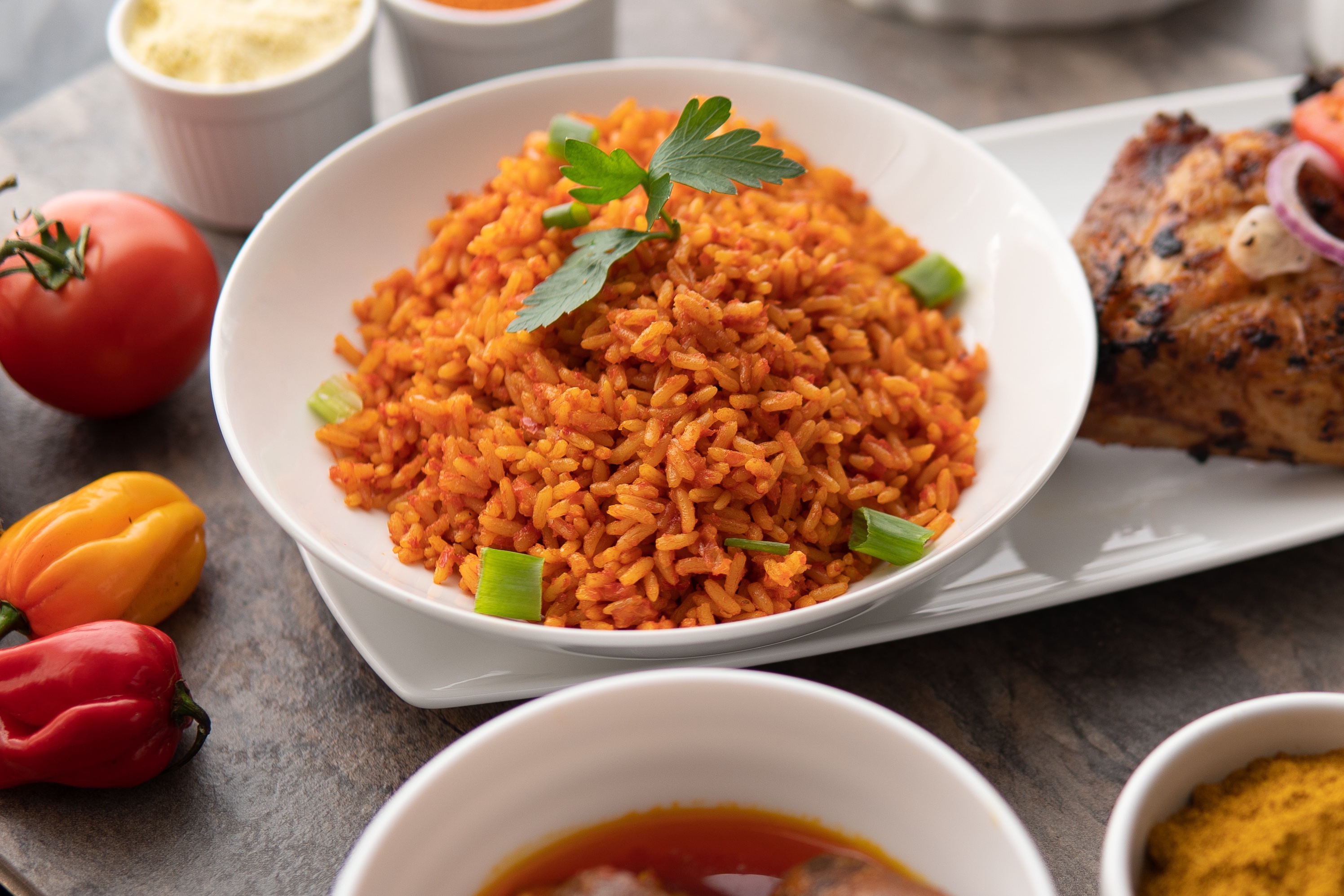
Common dishes in the country make frequent use of staple foods such as cassava, rice, and yam. Jollof rice is an example of this. While the dish is commonly found throughout West Africa, it’s found great popularity in Nigeria. The Nigerian version is known as pate and is made with rice, tomatoes, and other ingredients and spices. It’s particularly popular in the country’s northern regions.
Garri is another common Nigerian and West African ingredient. It’s a kind of cassava flour that’s most commonly used to make eba, a popular staple food.
Norwegian Cuisine
Geography is the main contributor to Norwegian cuisine. Norway is a mountainous country surrounded by the sea, so common dishes reflect ingredients found in such locations.
Seafood is very common in Norwegian cuisine, with fish such as salmon and cod being common sights on dinner tables. Brunost, a milk product made from whey and similar to cheese, is also consumed by many Norwegians.
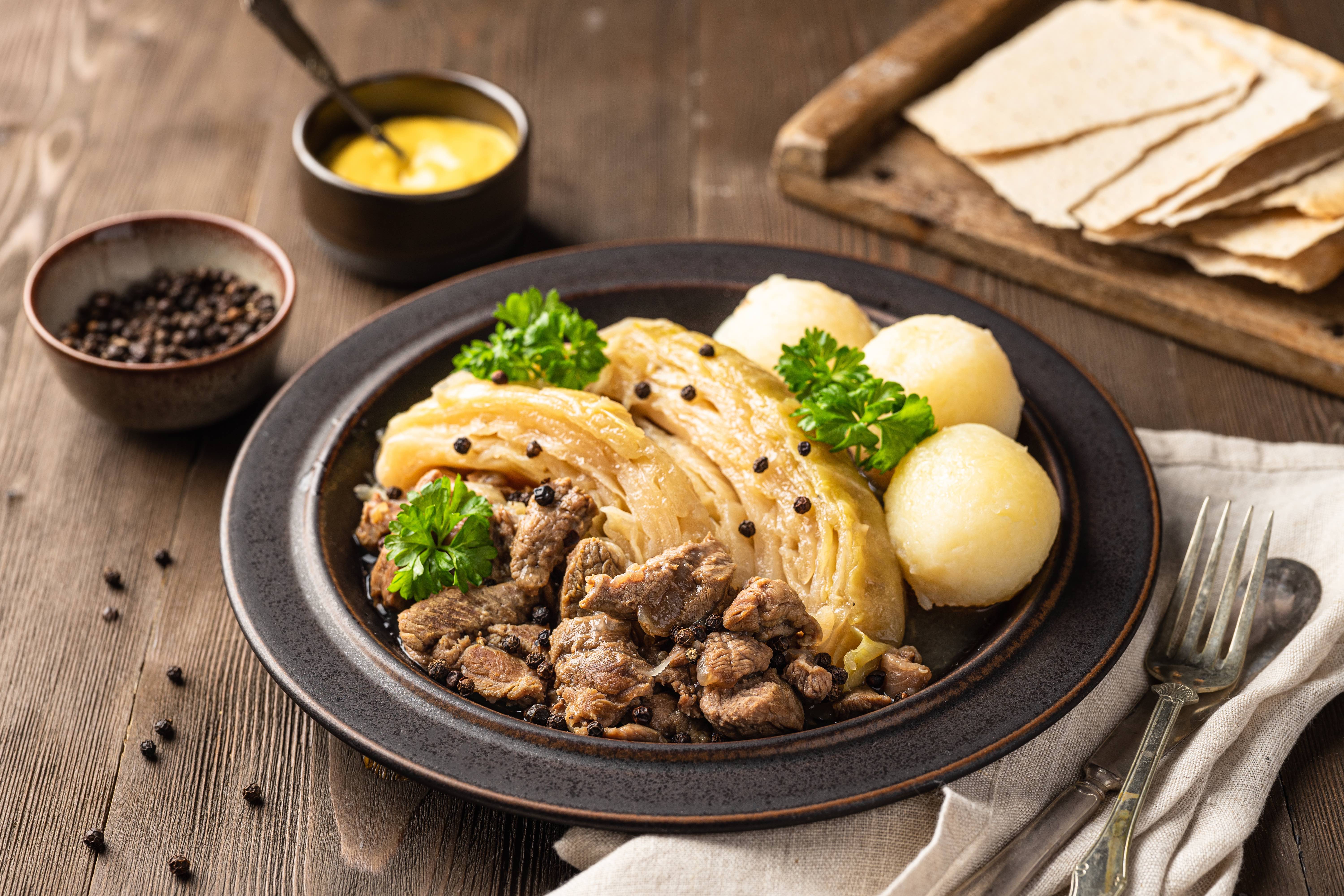
Many Norwegians say that Fårikål is their national dish. It’s a casserole dish that uses cabbage, lamb, and potatoes. Other popular Norwegian delicacies include Rømmegrøt (a sour cream porridge), Sursild (pickled herring), and Tørrfisk (air-dried fish notorious for its distinctive smell).
Pacific Cuisine

Generally speaking, Pacific types of cuisine are heavy in seafood. This is not surprising considering these countries’ proximity to the sea. Common staples include taro and yam. Other common ingredients include bananas and coconuts.
ʻOta ʻika is found in Tonga and other nearby Pacific nations. It’s made of coconut milk, citrus juice, and fish. Laplap, Vanuatu’s national dish, is a paste made with root crops and bananas and cooked in banana leaves.
Interestingly enough, canned food like Spam is very popular in the Pacific region. This is believed to be a result of American influence and presence, especially during World War II. The region’s obesity epidemic has been blamed on the preponderance of processed food.
Pakistani Cuisine
Pakistani cuisine is a melting pot of local and foreign influences. It is in many ways similar to Indian cuisine, but because Pakistan is predominantly Muslim rather than Hindu, meat is noticeably more common.
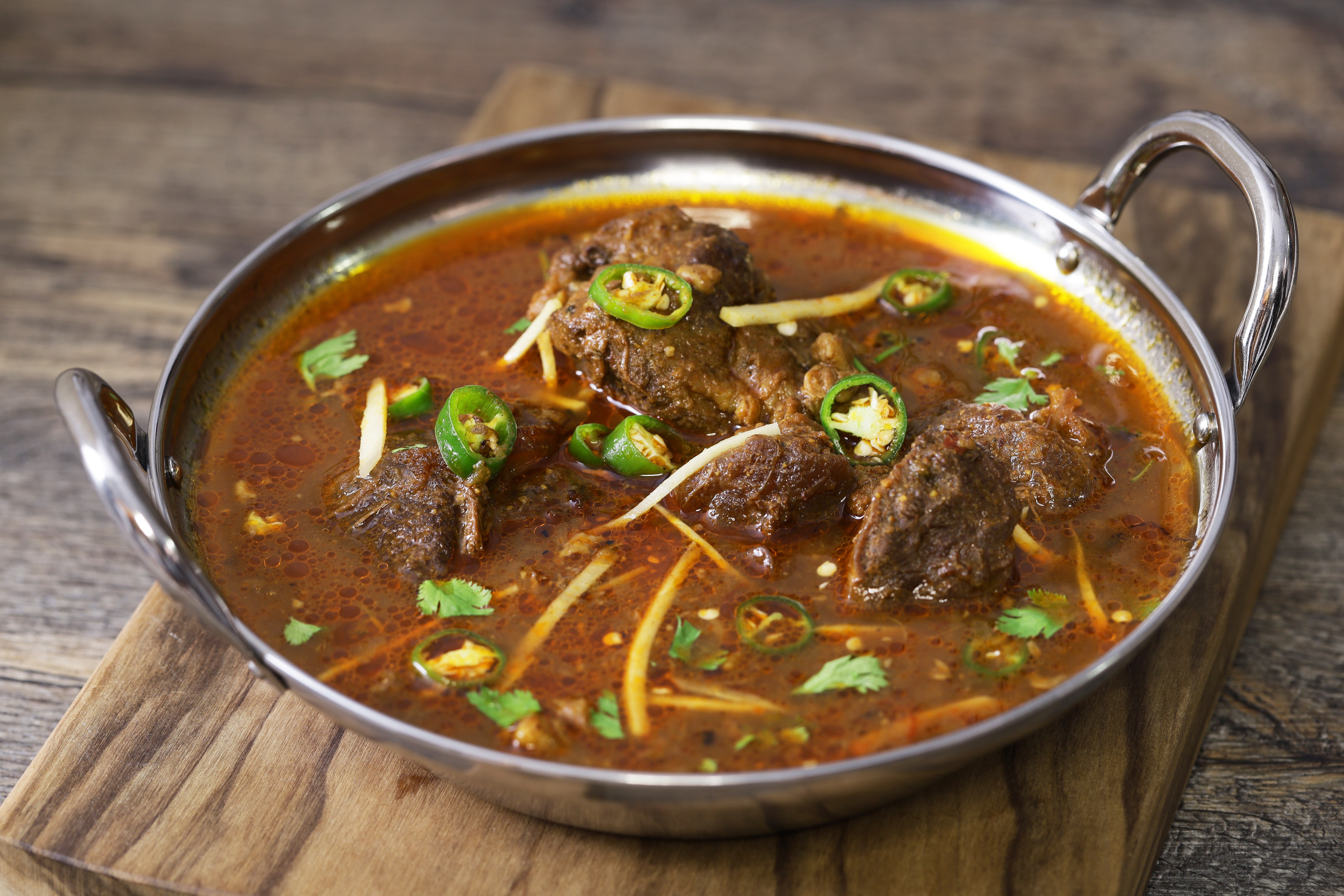
Nihari, made from the shanks of cattle and slow-cooked with butter, is considered Pakistan’s national dish. Karahi is another popular cooking style that involves large pots. It lends its name to karahi curry, a kind of curry that uses goat or chicken.
Many other kinds of food common throughout South Asia, such as biryani and aloo gobi, are also beloved in Pakistan.
Peruvian Cuisine
Like much of Latin America, Peruvian cuisine is a fusion of both indigenous and colonial tastes. Ingredients can either be native to Peru or originate from elsewhere in the former Spanish Empire. Immigrants have also brought in new tastes and ideas. For example, potatoes originated from Peru, so it’s no surprise that they’re a common ingredient in Peruvian dishes. Quinoa, a kind of grain that’s gained popularity worldwide due to its health benefits, is also native to Peru.
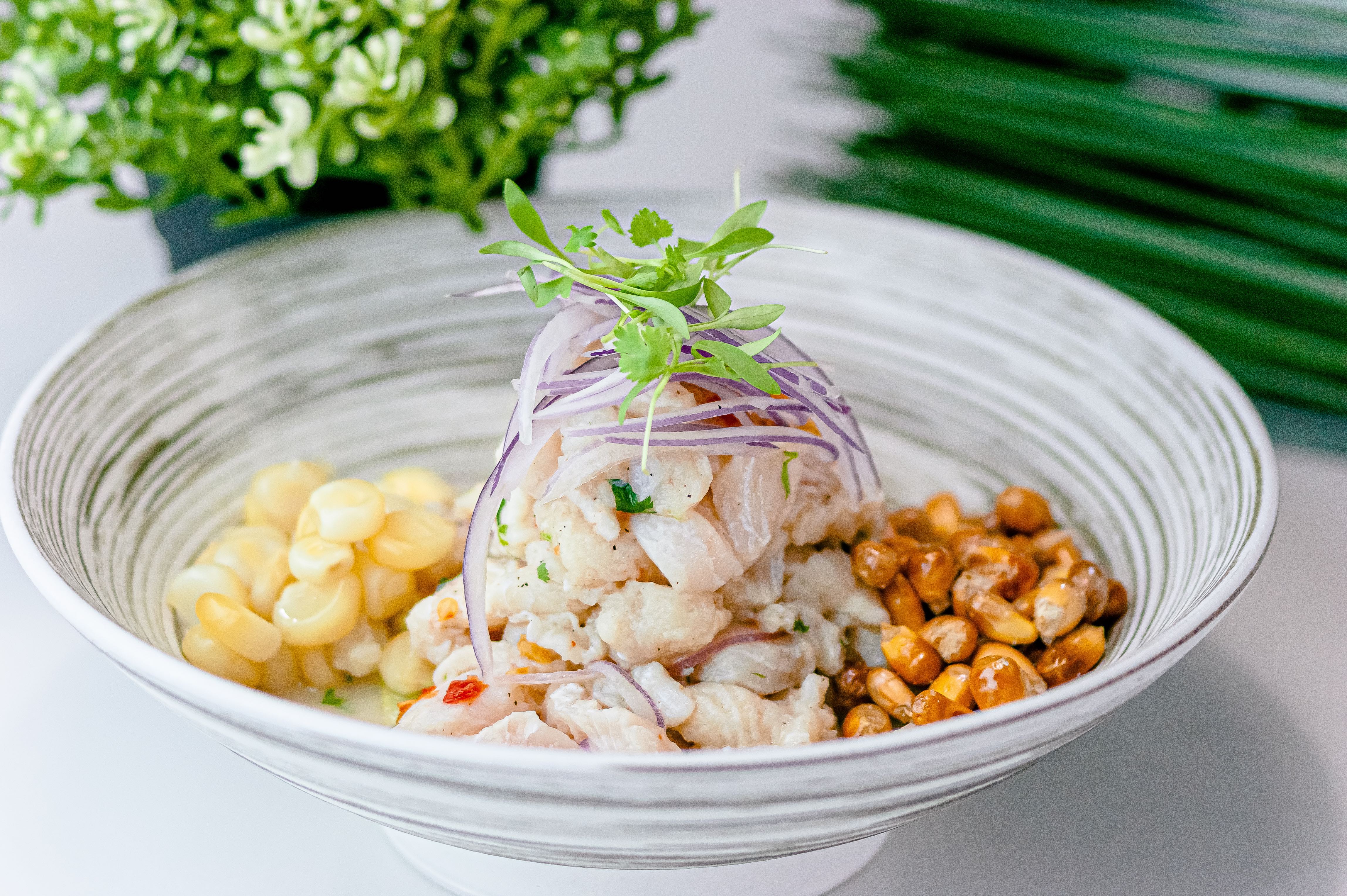
Many consider ceviche to be Peru’s national dish, and not without good reason. This dish, which consists of fish cooked and marinated with citrus juices, is common street food. Another well-known Peruvian delicacy is roast guinea pig, also known as cuy. It’s often served on special occasions, and its taste has often been compared to that of duck.
Polish Cuisine
Polish cuisine is a nod to the country’s heritage and geography. Meat is a common ingredient in Polish dishes, but noodles and even dumplings are not uncommon too. Many Polish dishes use pork as their main ingredient.
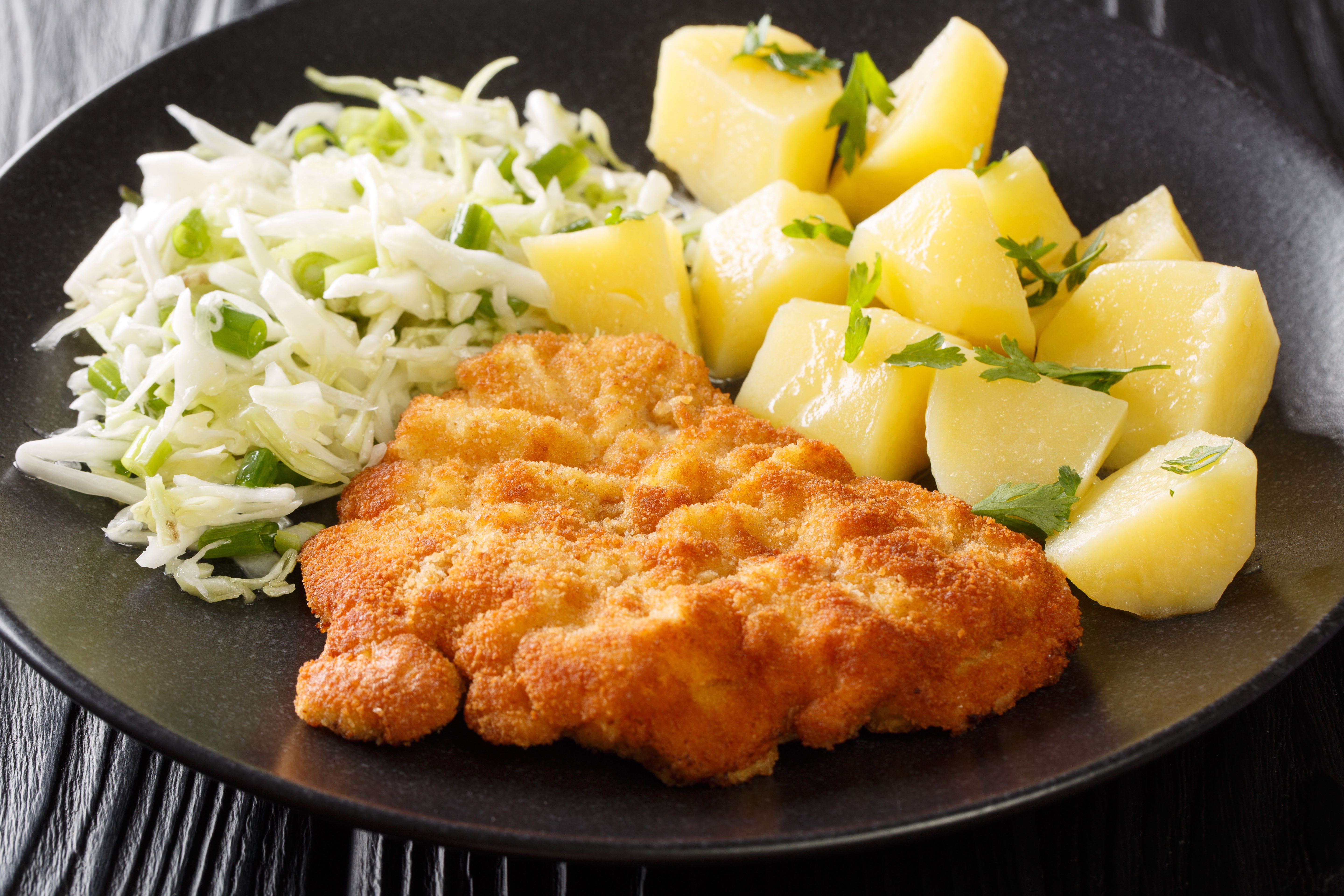
Bigos is Poland‘s national dish. It’s characterized by the use of Polish sausages and can be mixed with other kinds of meat. Pork is most commonly used, but rabbit meat is a possible option! Kotlet schabowy, also known as simply schabowy, is a fried pork cutlet that’s similar to the pork cutlets of neighboring countries. Finally, there’s piergogi, a flour-based dumpling that’s often made with meat fillings and potatoes.
Portuguese Cuisine
As a former colonial power, it’s no surprise that Portugal’s cuisine didn’t only influence other types of cuisine, but has also received international influences itself.
Piri-piri (also spelled peri-peri) chicken is one of Portugal’s most popular dishes. It’s not actually from Portugal itself but rather from Africa (there’s some debate as to whether it’s Mozambican or Angolan in origin). However, it does have a large following in Portugal.
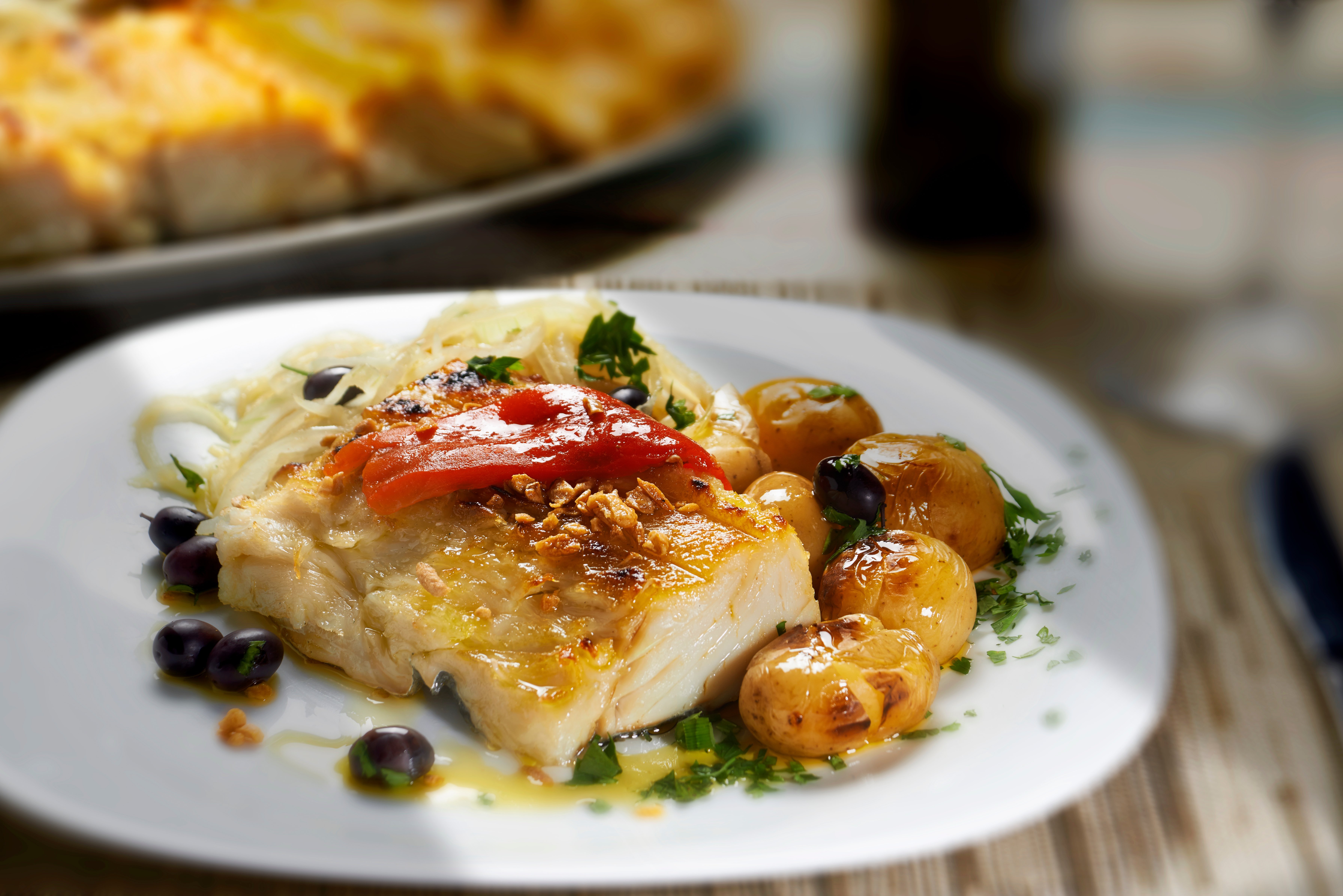
A more typical Portuguese staple is bacalhau. It’s a form of dried and salted cod and is prepared in many different ways. Perhaps appropriate for a former seafaring colonial power, many consider bacalhau to be Portugal’s national food.
Egg tarts (also known as pastel de nata) are perhaps Portugal’s most popular dessert. As the name suggests, they’re made from eggs and flour and are sometimes topped with cinnamon powder.
Russian Cuisine
Russia has a rather poor reputation these days, to say the least. But this doesn’t mean that Russian cuisine isn’t something worth checking out. It’s not surprising that Russian cuisine is rich in history and flavors. After all, when you’re the largest country in the world, you’re sure to have a myriad of dishes to offer.
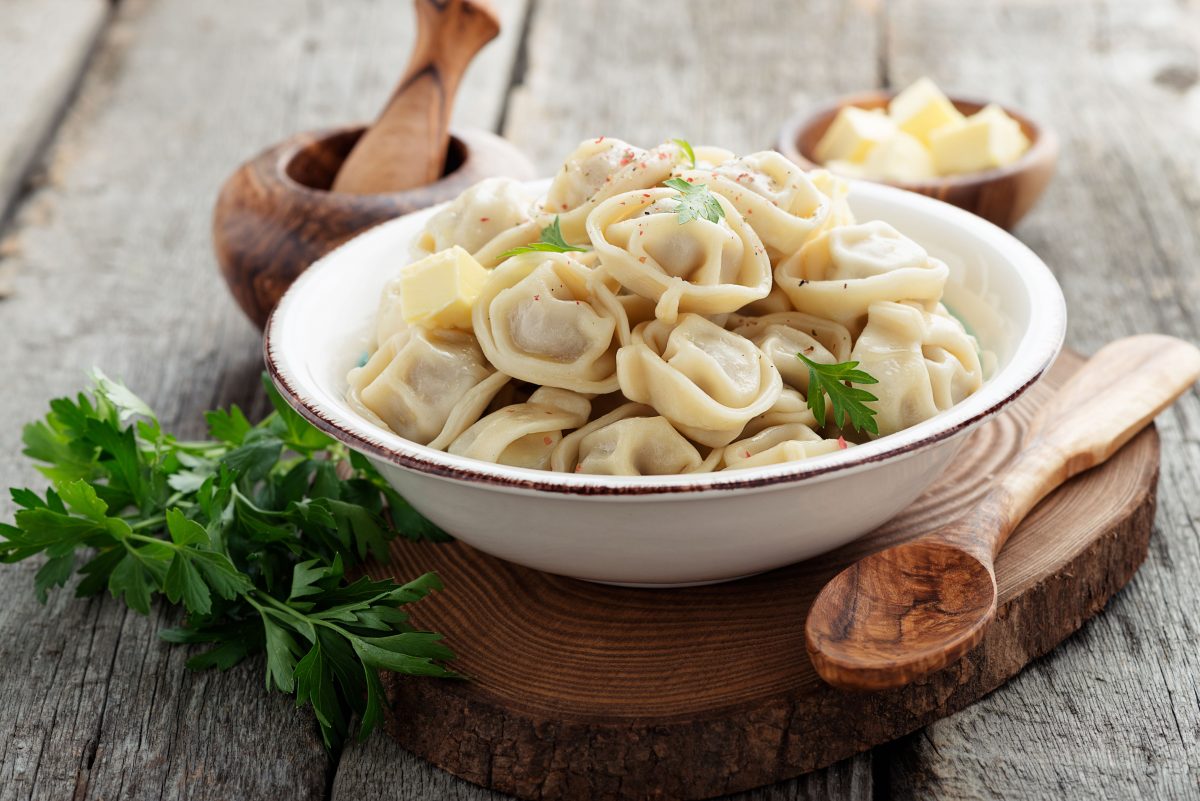
Fittingly for such a large and influential country, Russian cuisine is a melting pot of European, Asian, and international tastes. Some popular Russian favorites include pelmeni, a kind of meat dumpling that’s often considered to be the country’s national dish. Borscht is a red beet soup that is also popular in Russia and elsewhere in the former Soviet Union. Finally, blini, a type of wheat pancake, is offered in many restaurants and is sometimes even served with caviar!
Serbian Cuisine
Serbia is a country with a long history, as well as influences from both neighboring countries and even more distant powers.
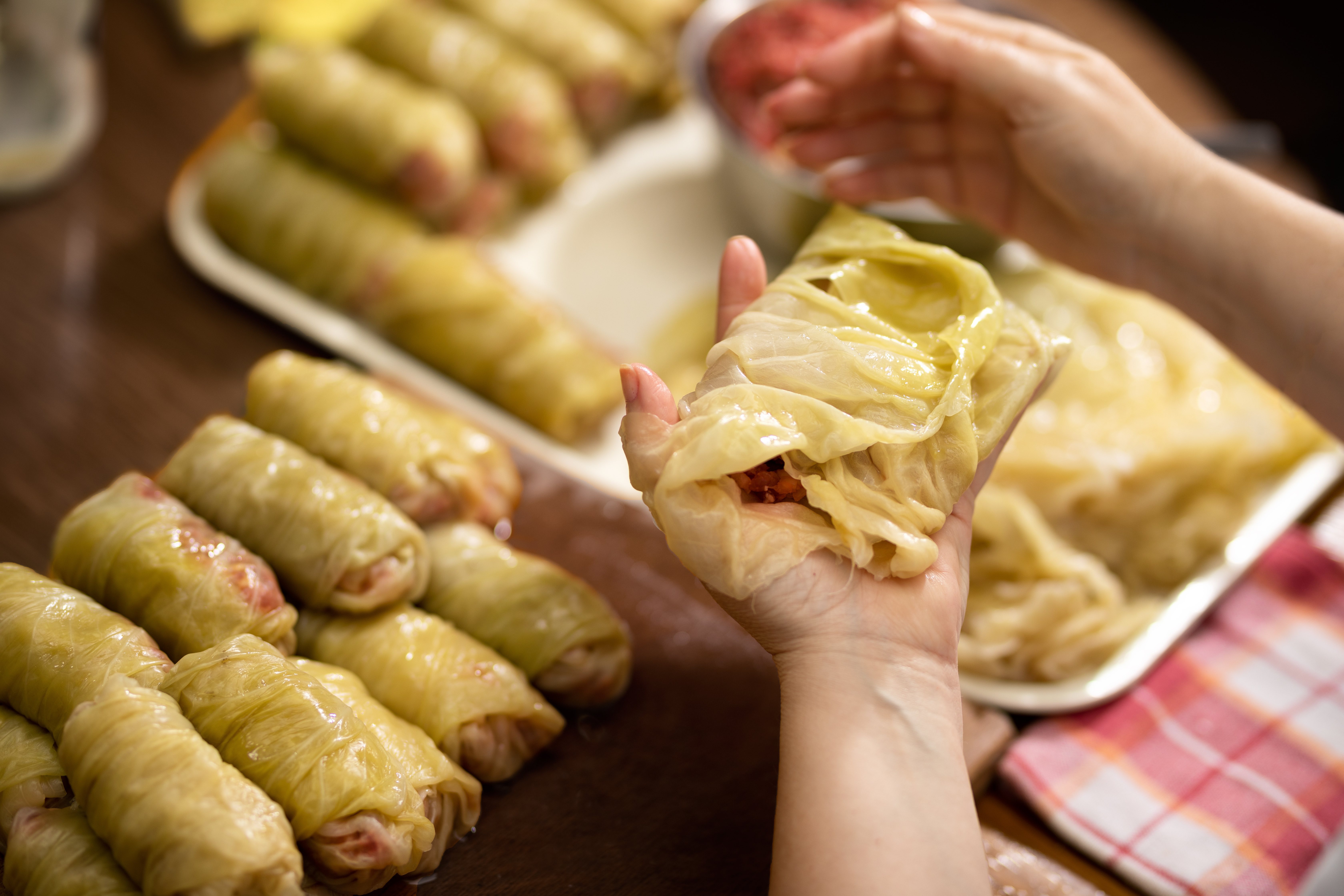
Sarma is perhaps Serbia’s most beloved dish. It’s composed of cabbage leaves that are then stuffed with meat. Occasionally, other types of leaves such as grape leaves are also used. Sarma is actually Ottoman (Turkish) in origin but has become popular in former Ottoman territories such as Serbia.
Gibanica is also another popular Balkan delicacy. It’s a pastry whose ingredients include cheese and eggs, and many variants also exist.
Singaporean Cuisine
Singapore is a multi-ethnic country composed of Chinese, Malays, Indians, and foreigners. Each group has lent beloved dishes that are enjoyed not just by their original ethnic groups but also by other groups and even internationally.
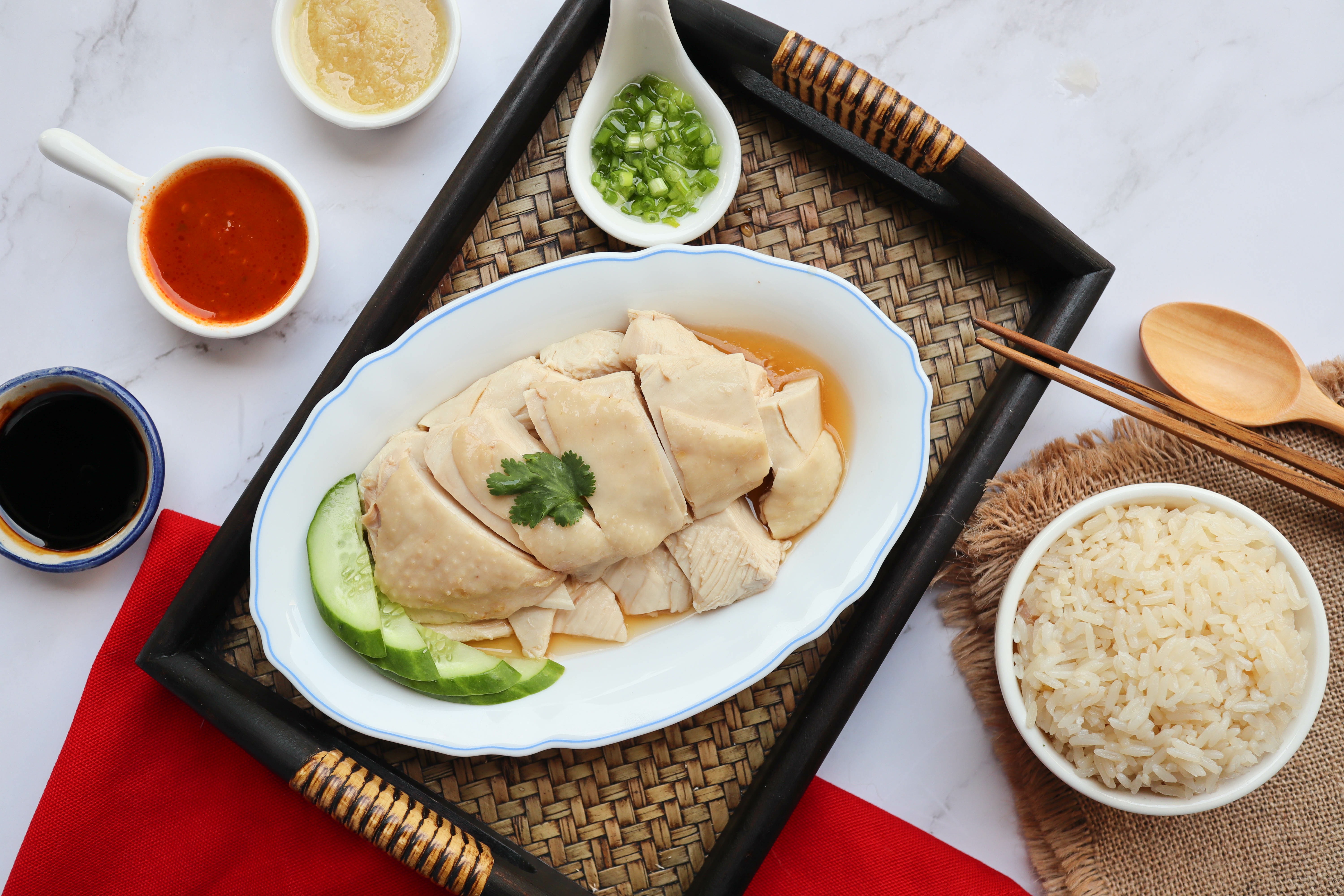
Hainanese chicken rice, also known simply as chicken rice, is Singapore’s national dish. As its name suggests, it is believed to have originated from Hainan, China. It’s made from rice and chicken broth and is popularly made at home or sold in restaurants.
Street food is a central part of Singaporean culture. Food stalls, also known as hawkers, are popular destinations not just for locals but for tourists as well. Other popular Singaporean dishes include curry, laksa, and chili crab.
Salted egg flavored food is one of Singapore’s more recent products. Salted egg-flavored chips and dried fish use salted egg powder and curry leaves, and have spawned cult followings and imitators outside Singapore.
Slovak Cuisine
Slovakia’s food is similar to the types of cuisine of its neighbors, for example, Czechia, Hungary, and Austria. However, even dishes that can be found elsewhere have unique Slovak twists to them.
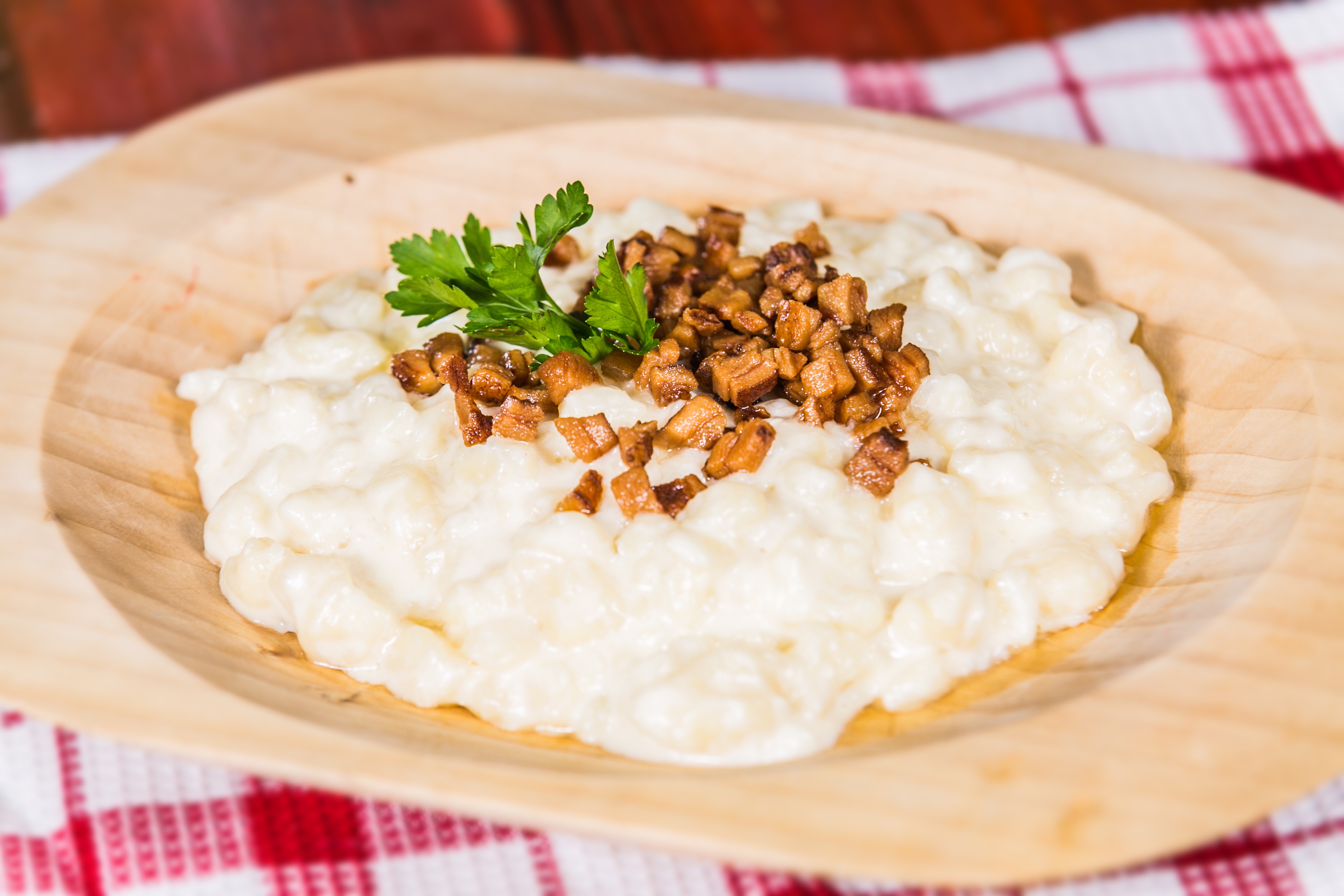
Bryndzové halušky is perhaps Slovakia’s most famous dish. It’s a noodle or dumpling dish that’s topped with pork. It does however have a slightly unusual ingredient: sheep’s cheese! It’s popularly served with Žinčica, a sheep milk-based drink that’s a byproduct of the production of sheep’s cheese. You could say that Slovaks are quite resourceful when it comes to sheep products.
Slovenian Cuisine
Like many European nations, Slovenia’s food is inspired by the many types of cuisine that are found in surrounding areas. Geography has its role too.
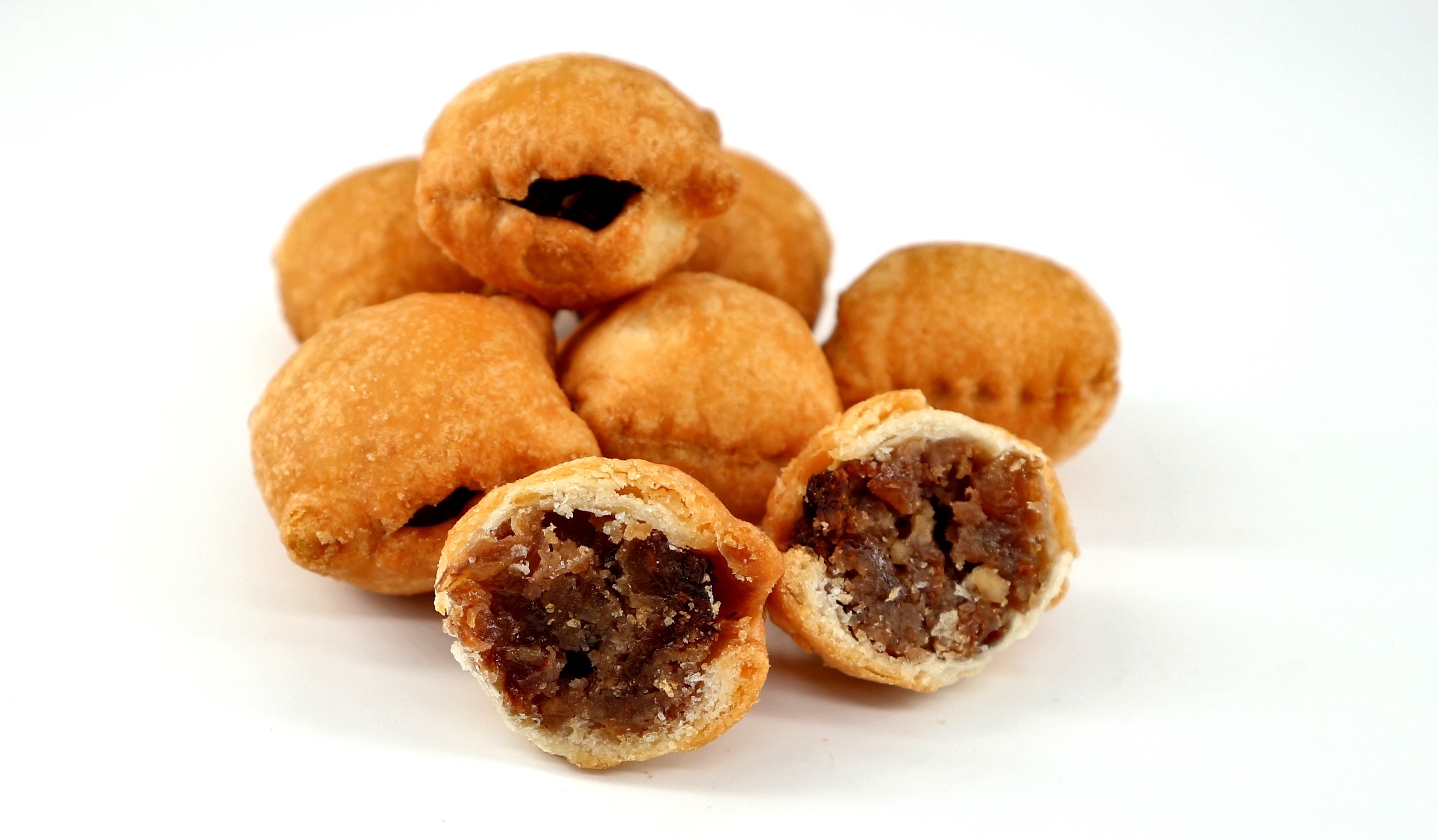
Štruklji is considered by some sources to be Slovenia’s unofficial national dish. It’s a kind of rolled dumpling that’s cut into pieces and then cooked in various ways. Fillings can either be meat or sweets. Each Slovenian region has its own take on this popular dish.
South African Cuisine
If you’re a foodie, you may be familiar with Nando’s, the famous peri-peri chicken joint that’s expanded internationally. The restaurant opened way back in 1987 and has helped spread peri-peri’s popularity worldwide. But there’s more to South African cuisine than just Nando’s. After all, when you’re in a multiethnic country like South Africa, you’re sure to have so much to offer.
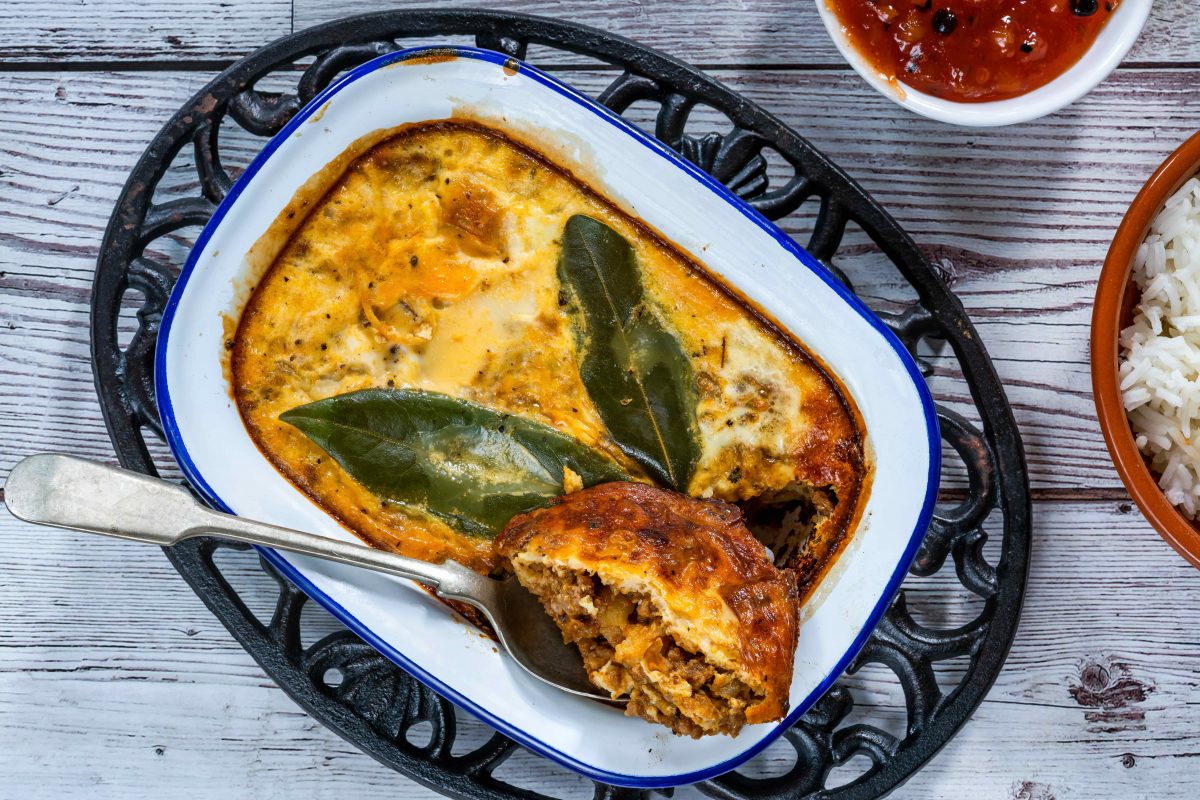
Bobotie is considered South Africa’s national dish. It’s international in origin but distinctly South African. It’s a baked delicacy made with minced meat and spices and then topped with an egg-and-milk mixture. European and Asian flavors combine to make bobotie beloved throughout the country.
Boerewors, a kind of meat sausage, is also popular in South Africa. Its name means “farmer’s sausage” and is often grilled. Finally, there’s chakalaka, a vegetable relish that’s commonly served with other dishes.
Spanish Cuisine
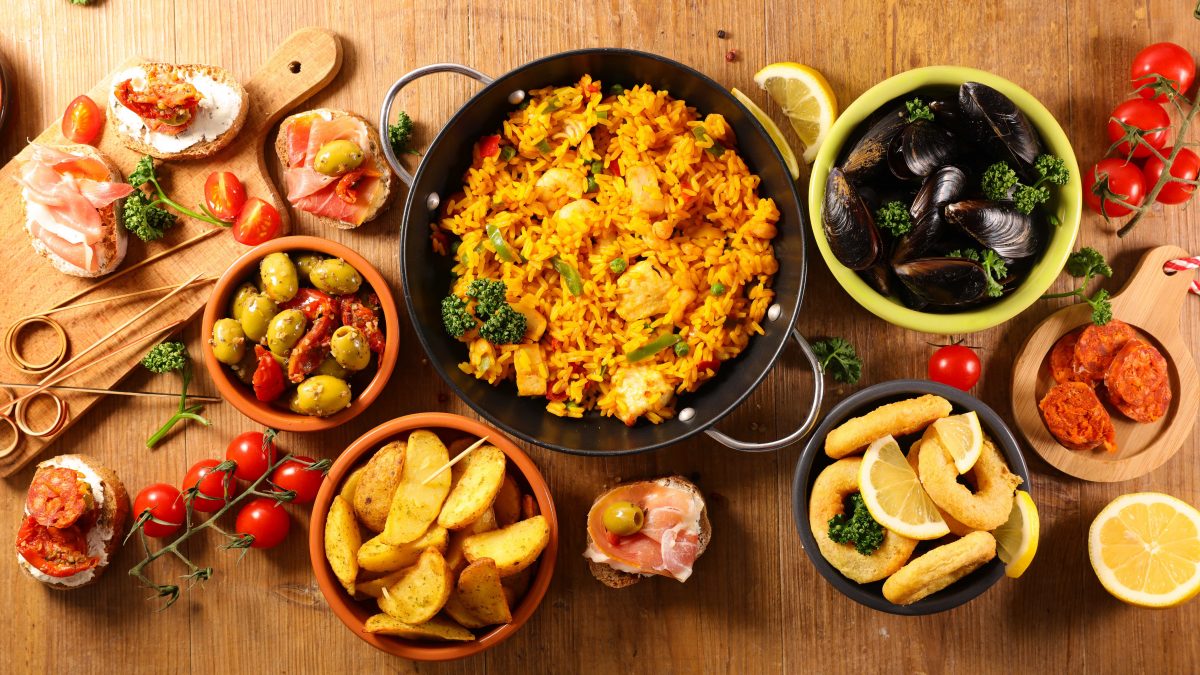
Both local and international factors have made their mark on Spanish cuisine. After all, when you’re a historic seafaring country that once ruled much of the world, you’re sure to have a lot of offerings.
Paella is perhaps the most famous Spanish dish in the world. While a beloved Spanish favorite, it also has a following in countries with and without former Spanish influence. Its main ingredients are olive oil, rice, and saffron. There are many kinds of paella, ranging from meat to seafood. What doesn’t change is that Spaniards and others most commonly serve paellas at celebrations and gatherings.
Cochinillo asado is a whole roasted suckling pig. It is the progenitor of similar dishes around the world, such as the Philippines’ lechon. Other Spanish favorites include churros (long fried dough strips that are a popular street food worldwide), croquetas (Spain’s take on the croquette), and gazpacho (a blended tomato and vegetable soup and a summer favorite).
Swedish Cuisine
IKEA’s famous meatballs are probably many people’s first (and maybe even only) exposure to Swedish cuisine. And while meatballs with gravy and lingonberry jam are indeed popular in Sweden, the country also has many other dishes that are sure to delight any foodie.
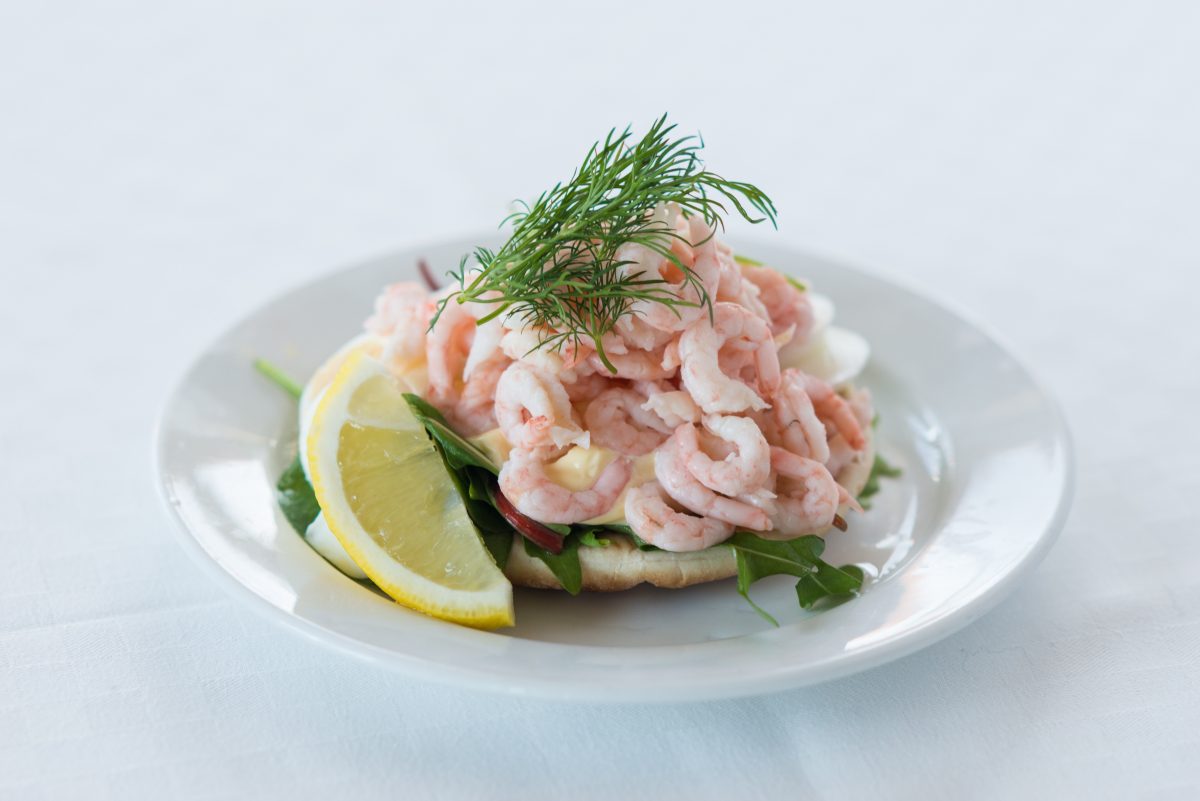
Räkmacka is one of Sweden’s most popular sandwiches. It’s a seafood sandwich that uses rye bread and includes ingredients such as shrimp and caviar. Semla, a cream-filled bun, is a popular Swedish dessert. Pickled herring is also commonly consumed, especially in smorgasbords (buffets).
One of Sweden’s more unusual delicacies is surströmming. It’s a form of fermented herring that’s often sold in cans. It is notorious both in Sweden and internationally for its distinctive smell. It is an acquired taste to many brave and daring foreigners, but it is close to the hearts of many Swedes.
Tanzanian Cuisine
Tanzania’s cuisine is quite similar to that of its neighbors. Ugali, Kenya’s unofficial national dish, is also popular in Tanzania. But the country’s cuisine also has unique twists that make it distinct from the many types of cuisine of its neighbors.
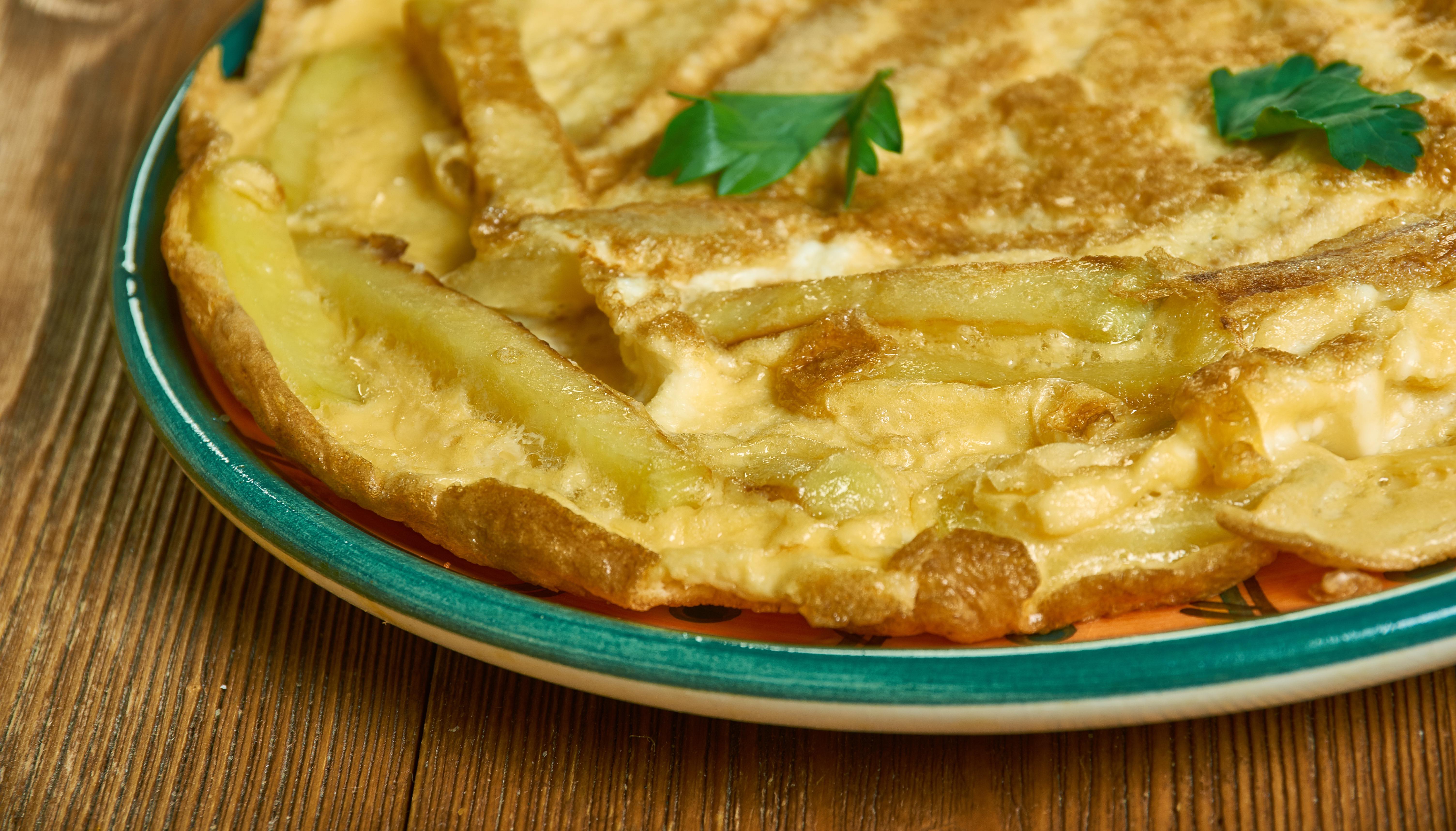
Chipsi mayai is a meal consisting of a fried omelet and French fries. It’s a common sight at Tanzanian restaurants and is beloved as comfort food. Another local favorite is Zanzibar pizza. Despite its name, it’s not a true pizza. Instead, it’s stuffed bread filled with meat, garnishings, and cheese. It’s named after the Zanzibar archipelago off the coast of Tanzania.
Thai Cuisine
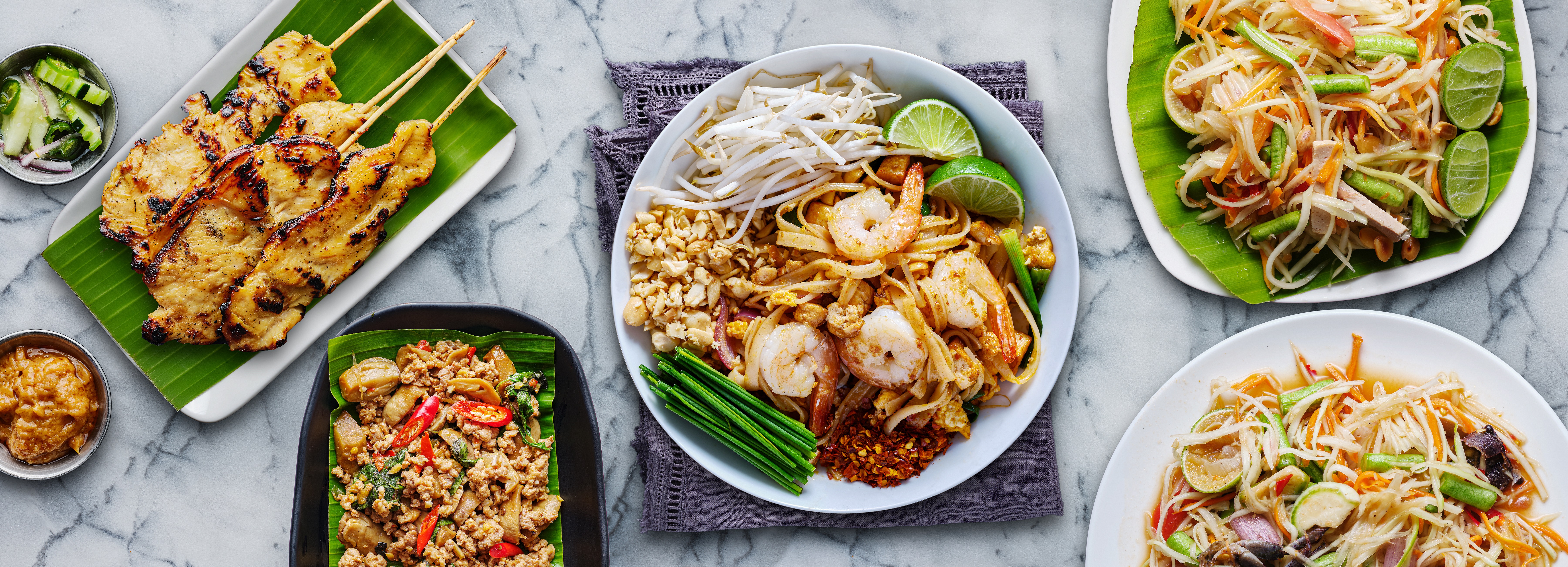
Thai cuisine has found followings far and wide. Local ingredients and sensibilities combine to make one of the most unique types of cuisine in the world.
Pad Thai is Thailand‘s national dish. It’s made with rice and noodles and mixed with vegetables and other ingredients. It’s most commonly served as street food, but it’s also served at home or in restaurants. No Thai restaurant is complete without pad thai.
Mango sticky rice is another local favorite. It’s a dish consisting of sticky rice and mango slices and is commonly eaten for dessert. While it is possible to eat it with utensils, it’s traditionally eaten by hand.
Other popular Thai treats include guay teow (Thai noodle soups), som tam (papaya salad), and khao pad (Thai fried rice).
Turkish Cuisine
As the descendant of one of the most influential empires in world history, it’s not surprising that Turkish cuisine is a melting pot of flavors. After all, Turkey is at the intersection of the East and the West, which makes it a strong breeding ground for much diversity in its offerings.
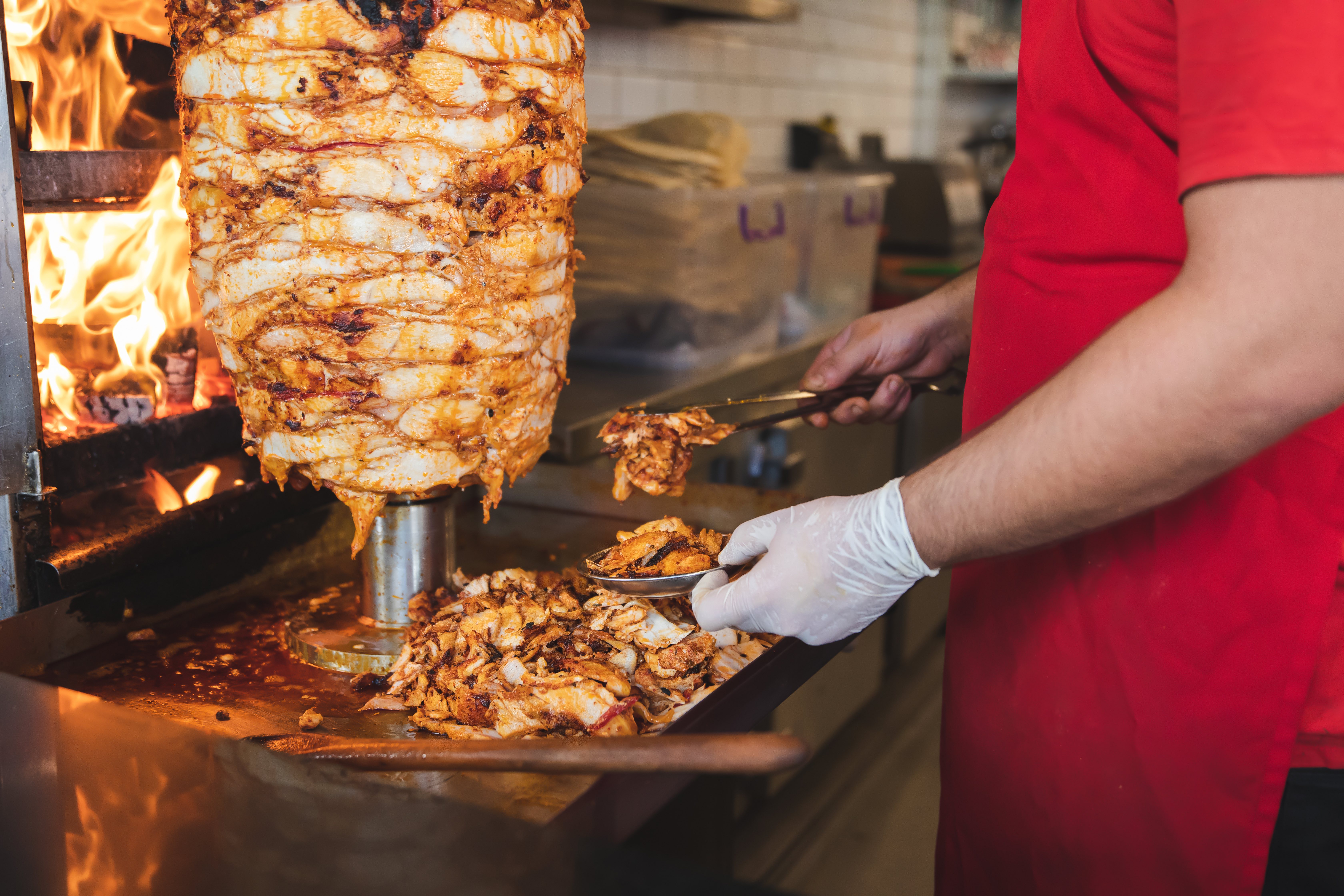
The kebab (also spelled kebap) is perhaps the most famous Turkish food in the world. It’s not actually a single dish but rather a way of cooking. Kebab simply refers to grilled meat, and there are many methods to choose from. In fact, some sources claim that there are over 30 variants of kebab! Kebabs can be served on barbecue sticks, or more commonly internationally, in wraps called doners. Doners are similar to shawarmas, but doners are the Turkish variety while shawarmas come from the Arabian Peninsula.
Köfte is Turkey’s take on the classic meatball. They’re usually made from beef (unsurprising since Turkey is a majority Muslim nation) and often served with salad or beans. Anchovies, known locally as hamsi, are also a popular delicacy and are typically served fried. Finally, there’s dolma, meat-stuffed inside cabbage or grape leaves that’s also popular in Eastern Europe.
Ukrainian Cuisine
Ukraine’s cuisine is a product of its history. The region has been closely associated with Russia and the rest of Eastern Europe for centuries. Thus, it’s not surprising to see similarities to other types of neighboring cuisine.
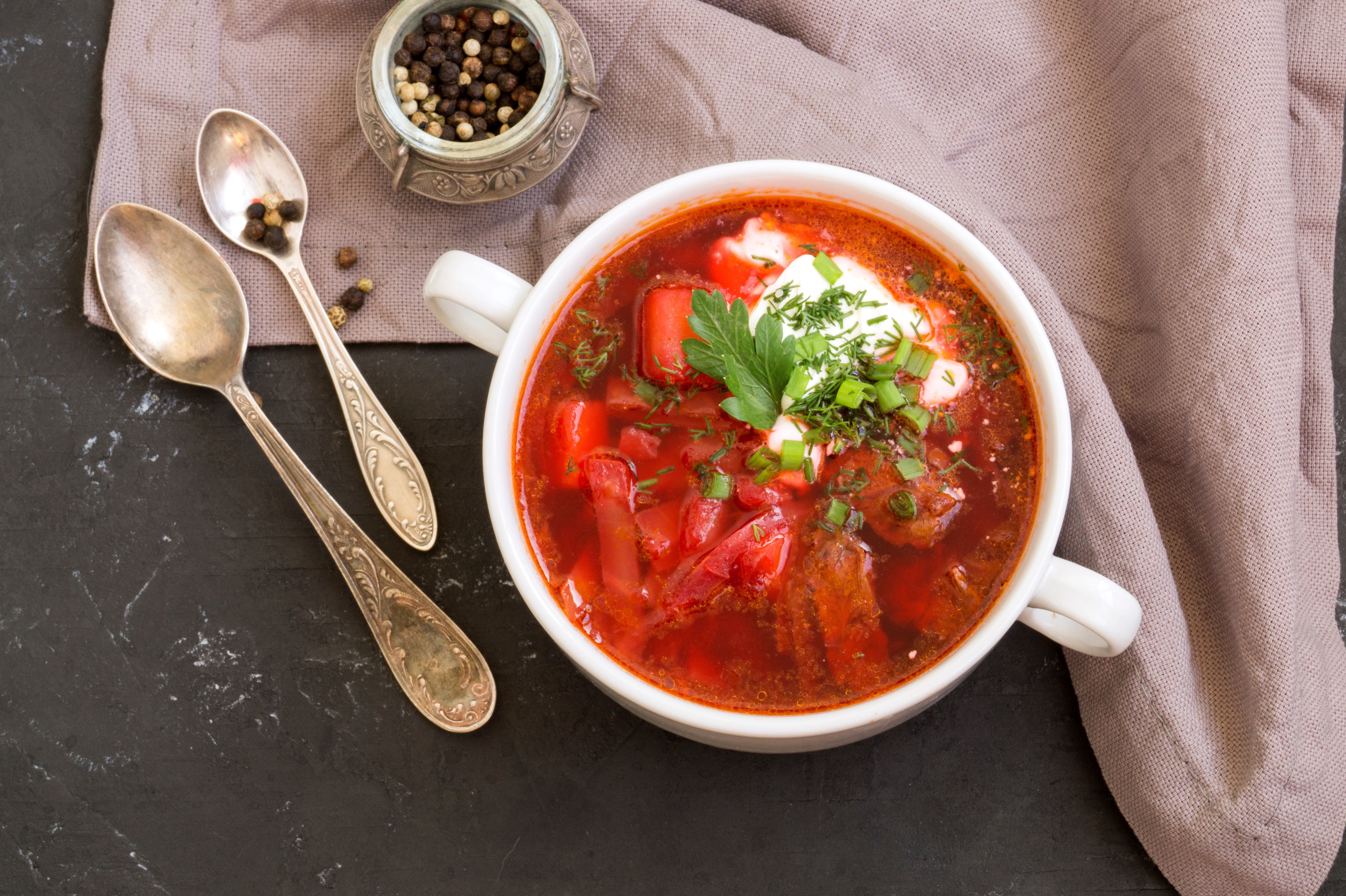
Borscht, the red beet soup we’ve already mentioned earlier in this listicle, is Ukraine’s national dish. In fact, despite its popularity in Russia, it is a Ukrainian invention. Similarly, varenyky are a popular form of dumplings that many compare to the European pierogi.
Finally, no discussion of Ukrainian cuisine would be complete without chicken Kiev. This traditional dish consisting of breaded chicken stuffed with butter sauce is not only popular in Ukraine but also internationally. In fact, tourism websites claim that many tourists crave it the moment they arrive in the capital Kyiv.
Uruguayan Cuisine
Like many types of Latin American cuisine, Uruguayan cuisine is a fusion of colonial and local flavors. However, one distinctive aspect of Uruguayan cuisine is its Italian influence. As much as 1/3 of Uruguay’s population is of Italian descent, a result of migration early on in the country’s history. Not surprisingly, Uruguayan cuisine has many nods to its Italian heritage, in addition to Spanish and indigenous sensibilities.

Chivito is Uruguay’s national dish. It’s a sandwich made with steak, bacon, eggs, and mozzarella cheese (you can really see the Italian influence here). All these ingredients are put in between two buns.
Revuelto Gramajo is another popular Uruguayan dish. It’s made of fried potatoes mixed with other ingredients. Dulce de leche, made from caramelized milk, is very popular in Uruguay as well as neighboring Argentina. In fact, the two countries have somewhat of a rivalry over which invented the beloved concoction.
Venezuelan Cuisine
Venezuela is another country with a rather negative reputation internationally, but still has a cuisine that is worth checking out.
Venezuela’s geography along with its diverse heritage has led to one of the most unique types of cuisines in Latin America. Indigenous people, Spanish colonizers, Caribbean neighbors, and even African flavors, have all made their mark. This can be seen in the country’s national dish Pabellon Criollo, which is made with rice, beans, beef, and bananas.
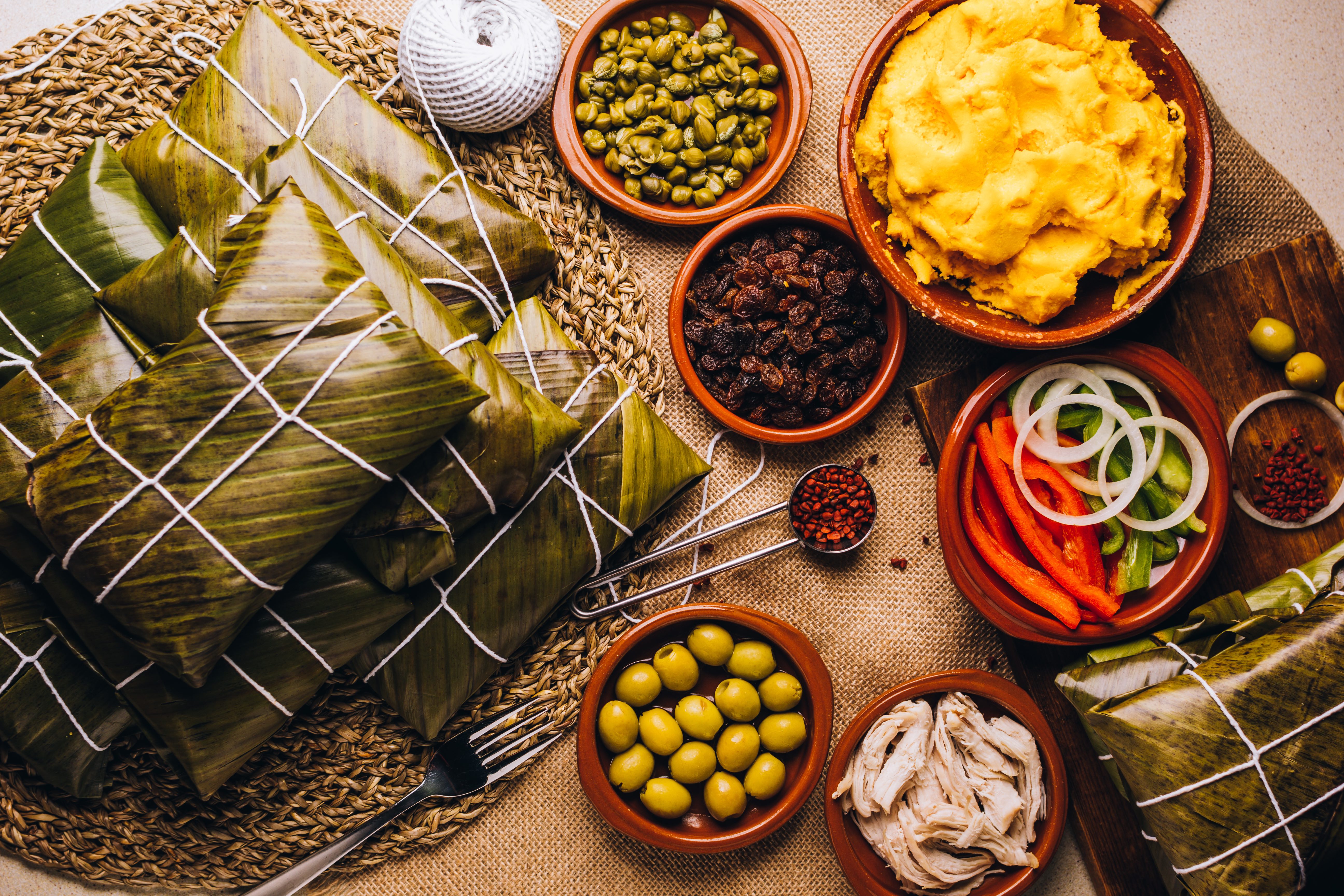
Another popular Venezuelan dish is hallacas. Hallacas consists of mixed meat which is then wrapped inside a corn flour dough and then wrapped in banana leaves. Many Venezuelan families consider it a cherished Christmastime tradition to eat hallacas.
Vietnamese Cuisine
Vietnamese cuisine is one type of cuisine that is fast gaining popularity worldwide. It has a distinct Asian flavor to it while also having nods to the country’s East Asian and French heritage.
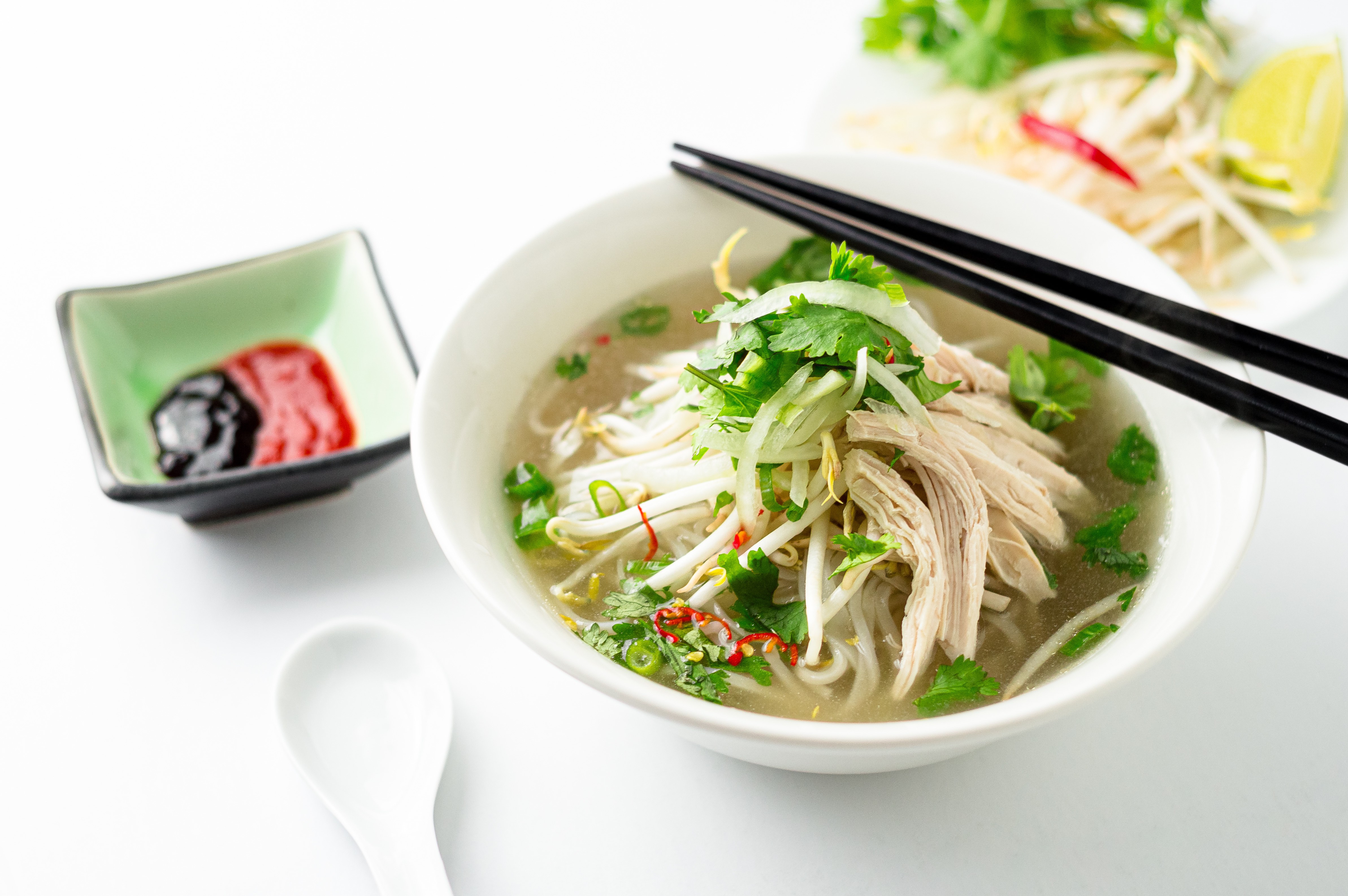
Pho is the most popular dish in all of Vietnam. Vietnamese young and old use meat broth and rice noodles to make this much-beloved soup. Vietnam’s many food stalls are its most common seller. In fact, analysts blame McDonald’s struggles in Vietnam on pho’s popularity among the masses. Historians believe that both Chinese and French cooking inspired pho’s creation. In particular, researchers believe that pot-au-feu (a French beef soup) is pho’s progenitor. Despite its foreign ancestry, pho has evolved to become something uniquely Vietnamese.
Cha ca is another popular dish that’s particularly associated with the capital Hanoi. It’s made from catfish and is most commonly marinated with turmeric and other spices. Finally, there’s Goi cuon, which is a kind of spring roll that’s a common sight in Vietnamese restaurants both locally and abroad.
Was this page helpful?
Our commitment to delivering trustworthy and engaging content is at the heart of what we do. Each fact on our site is contributed by real users like you, bringing a wealth of diverse insights and information. To ensure the highest standards of accuracy and reliability, our dedicated editors meticulously review each submission. This process guarantees that the facts we share are not only fascinating but also credible. Trust in our commitment to quality and authenticity as you explore and learn with us.
